MANAGEMENT REPORT AND CONSOLIDATED FINANCIAL STATEMENTS
STRATEGIC APPROACH
PERFORMANCE


STRATEGIC APPROACH
PERFORMANCE

2023 was a decisive year for the Nors Group. Over these twelve months, as we celebrated our 90-year legacy with great enthusiasm, we looked to the future, paving the way for significant achievements in the years to come. This year was driven by the motto "A legacy of future".
2023 was indeed pivotal in shaping Nors' horizon for the upcoming years: we know where we want to be and how to get there. From defining our future vision, anchored in the presentation of the Nors' strategy through 2030, named "Making our future work", to the successful implementation of several strategic internal projects, to expanding our global presence - with the acquisition of two new companies that reinforce the Group’s geographic footprint and its business diversification strategy - every step we took was guided by a shared vision of excellence
and sustained growth. This is and will continue to be, the driving force behind our ambition for the years ahead: with a structural focus on development, efficiency, transformation, People, and sustainability, we are paving a path that can only be expected to be ambitious, innovative, and prosperous.
Thus, it was only natural that we reflected a strong spirit of commitment within the organisation, leading the Group’s economic performance to positive levels. In a year characterised by unpredictable geopolitical scenarios, the unfavorable behaviour of some commodities impacting our business, and constraints arising from macroeconomic contexts and restrictive monetary policies in some of the markets where we operate (particularly in Angola), we achieved remarkable results and, once again, ended this year with a sense of fulfilled duty.
For 2024 We will take the lessons learned and the energy that characterised us to 2024. The challenges ahead are opportunities to innovate, grow, and have a lasting impact on our businesses, clients, and employees. A year of great news awaits us, and above all, with a vast certainty: we will be increasingly united, closer, and more Nors.


Throughout 2023 we have embarked on a journey of ambition in which we have celebrated, with great enthusiasm, our “legacy of future”. Under this motto, we have marked an essential milestone in our journey: the 90 years of Nors Group.
We have materialised this expression on several occasions, always with the premise of uniting our heritage - a part of history and legacy - with the ambition we have set for the future.
Together with all those who have been or are part of this journey, we celebrated 90 years of and incredible history, marked by audacity, growth, and optimism for the future we are building.





This success story would not have been possible without all those who build it with us on a daily basis. Thus, from the early stages, we wanted to celebrate with everyone involved, from current to former employees of the Group, stakeholders, clients, and suppliers.
The engagement and commitment of our People and all those we “invited to our birthday party” was amazing.
Together we spoke with one voice and told our story of ambition and success, highlighting what is still to come!

It was unavoidable for us to dedicate an issue of Nors Magazine to this meaningful celebration.
Thus, we have focused the articles, the interviews, and the news of the 5th edition on the 90 years of stories, sharing, and culture that characterise us.

The year 2023 began with the Kick-Offs in all of our companies and structures through the geographies in which Nors operates, with a transversal and unique message celebrating our 90 years of existence.
At the Annual Meeting which took place in September and gathered the top management of our geographies, this milestone was also one of the inevitable themes of the event.





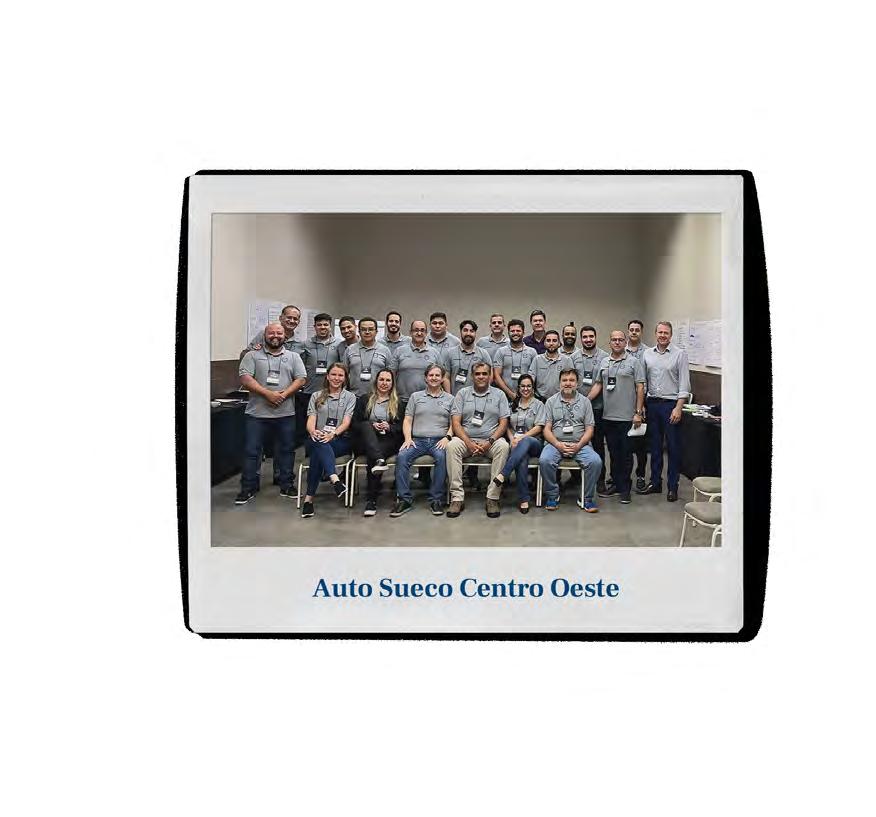

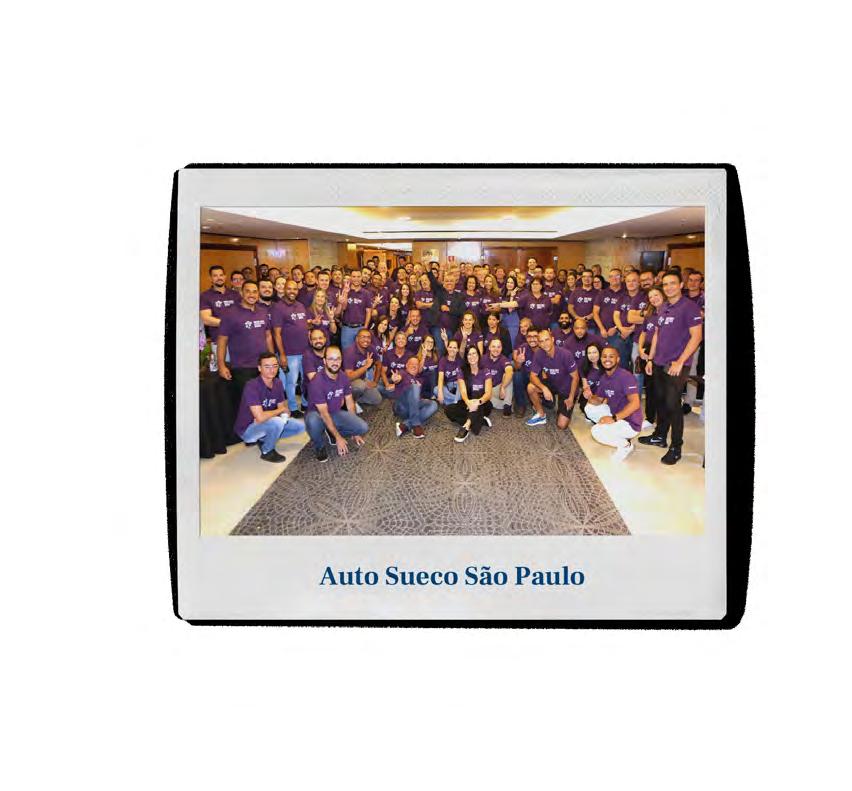

kick-offs all over the world Centre
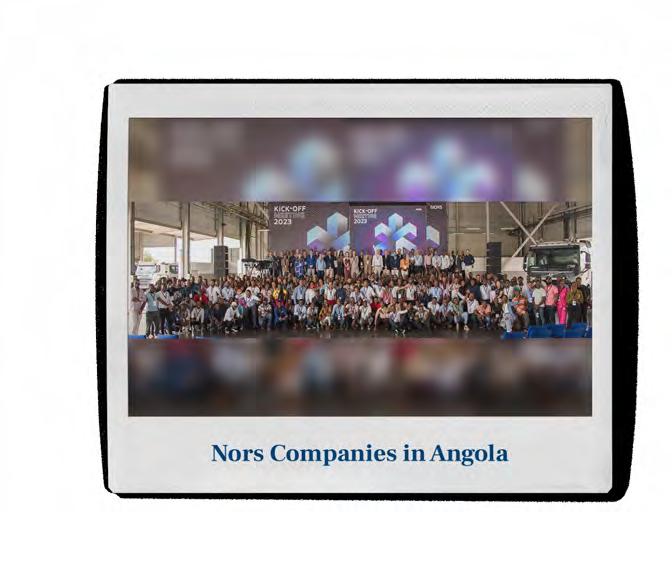

A 90-year journey would have been impossible without the right People by our side. Therefore, we made a point to reinforce the culture of appreciation and recognition that we uphold through seniority honours and the We Nors Awards, where we honoured six categories and received 381 applications. Additionally, we awarded a special “90 Years” prize to the “Mãos à Obra” project, carried out by the Nors teams in Angola.

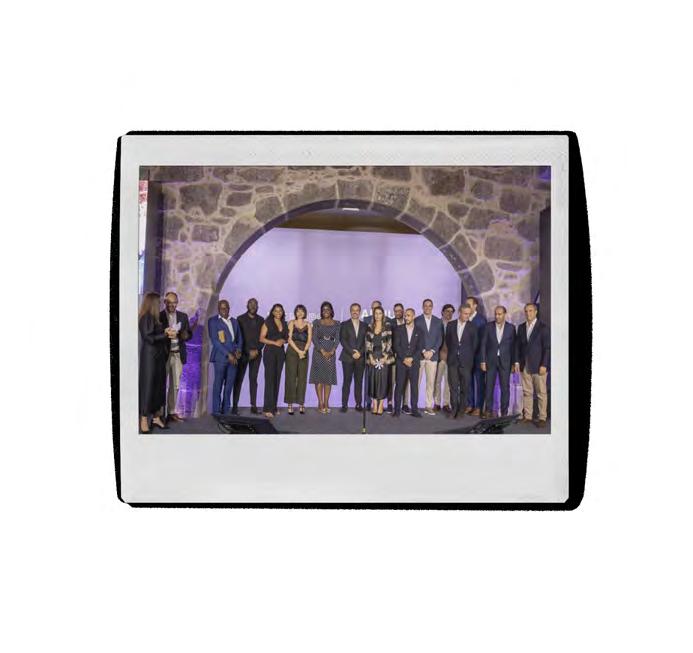


















this 90-year history would not have been possible without our People
1.2. business areas

With over 90 years of legacy, the Nors Group is historically associated with its leadership in heavy mobility and construction and agricultural equipment sectors, being the leading partner of the Volvo Group since 1933. Currently, with a more diversified portfolio, Nors also integrates other complementary business units in areas as diverse as recycling systems or the insurance sector, always with the fundamental premise of responding, in a cross-cutting and integrated manner, to the needs of our customers worldwide.

NORS AFTERMARKET


NORS VENTURES
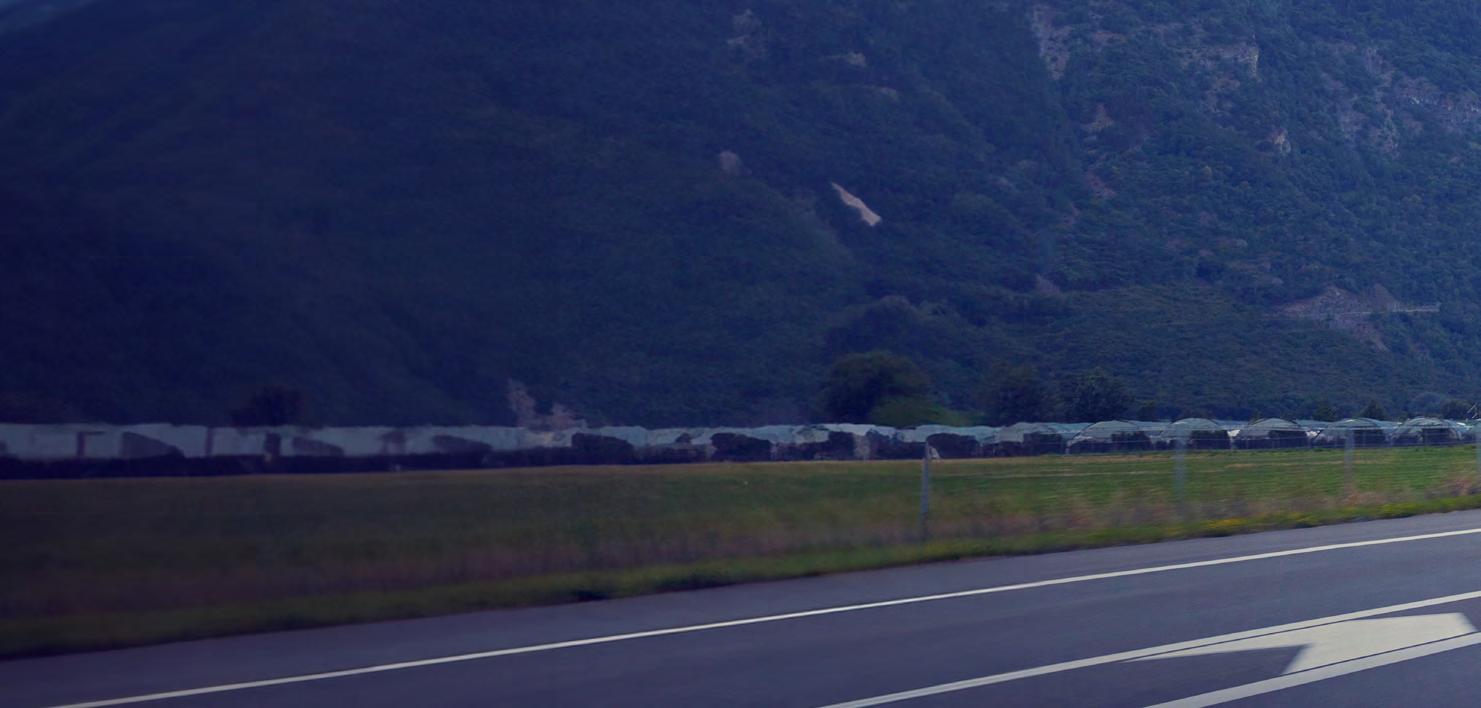
The Nors Mobility segment aggregates a set of solutions capable of responding to our customers' mobility and transportation needs.
From heavy vehicles, such as trucks and buses, to cars, generators and marine and industrial engines, we guarantee a dedicated offer with a global scope. In this business area, we integrate the Auto Sueco, Auto Sueco Automóveis, Galius and KinLai brands.
Auto Sueco started its activity in Portugal with the distribution of Volvo brand products. Today, with decades of history, besides Portugal, it is also present in 5 marketsAngola, Brazil, Botswana, Mozambique and Namibia - with a portfolio of products and services adapted to each geography. Taking a transversal approach, it distributes a diversified range of products, with a focus on Volvo trucks. The offer also encompasses Volvo buses, Volvo Penta marine and industrial engines, Kohler-SDMO generators and Isuzu buses, among others.
Auto Sueco Automóveis is the Nors Group brand that operates in the automotive retail market in Portugal. With six dealerships from the north to the south of the country, it represents a portfolio of brands in the light vehicle seg ment - Volvo, Mazda, Land Rover, Jaguar, and Honda. Ensures a complete response to market needs, combining commercial solutions with the guarantee of a 360º service in the after-sales area.

Galius began its operation in 2015, with the exclusive representation of Renault Trucks in the Portuguese market. Specialised in the commercialization of new and used trucks, it provides a transversal offer to the different transport sectors: distribution, construction, long distance, among others. It also guarantees an agile, integrated and efficient after-sales service, with a distribution and assistance network that includes nine locations throughout the country.
KinLai, founded in 2020, is the official distributor of Dongfeng Trucks in Angola. With a diversified portfolio of trucks, aimed at the medium and high ranges, it also operates in the medium duty segment, as well as in the pick-up and SUV segments.
It also bets on offering special solutions, responding to the Angolan market's most particular needs.
The Nors Off-Road segment includes the Nors Group's construction, industrial and agricultural equipment distribution business.
This business area includes the Agrofito, AgroNew, Auto Maquinaria, Strongco, Nors Centro Oeste and Ascendum brands.


Agrofito has been the official distributor of Case IH in the state of Mato Grosso for 20 years. It sells grain harvesters, tractors, planters, and sprayers and provides technical assistance services for this range of equipment. It has four branches in the municipalities of Rondonópolis, Primavera do Leste, Campo Verde, and Paranatinga.
AgroNew is the official distributor of Case IH Agriculture, the Case New Holland brand for agricultural equipment, in the state of São Paulo. Starting its operation in 2002, AgroNew ensures the supply of the municipalities of Catanduva and Votupuranga and encompasses the distribution of three main products: agricultural tractors, grain harvesters and sugar cane harvesters, the main product sold in this area of operation.


Focused on the premises of quality, safety and performance, Auto Maquinaria started its operation in 2005 with the goal of providing a wide range of construction equipment in the Angolan territory. Providing integrated sales and after sales solutions, Auto Maquinaria is the official distributor for Volvo Construction Equipment in Angola, also representing Groove, Hyster, Epiroc and SDLG products in this market.
Nors Centro Oeste distributes construction equipment from Volvo Construction Equipment in Mato Grosso and Mato Grosso do Sul, Brazil. It represents the Nors operation in Brazil in the construction equipment sector and has facilities in Campo Grande, Dourados, Cuiabá, Sinop, and Juínathe current Nors network in Brazil.

Strongco is the largest dealer of Volvo Construction Equipment construction and infrastructure equipment I n Canada. With operations in 26 branches spread across the provinces of Alberta, Ontario, Quebec, Nova Scotia, New Brunswick, Newfoundland and Labrador and Prince Edward Island. Strongco was acquired by Nors in March 2020.
Ascendum, present in 14 countries, is one of the largest global distributors of Volvo Construction Equipment. Founded in 1959, it sells industrial and construction equipment, providing the respective technical assistance, equipment rental and logistics operations. With a transversal offer, it operates in sectors as diverse as construction and public works, extraction and transformation, handling and logistics, agriculture, energy, among others.
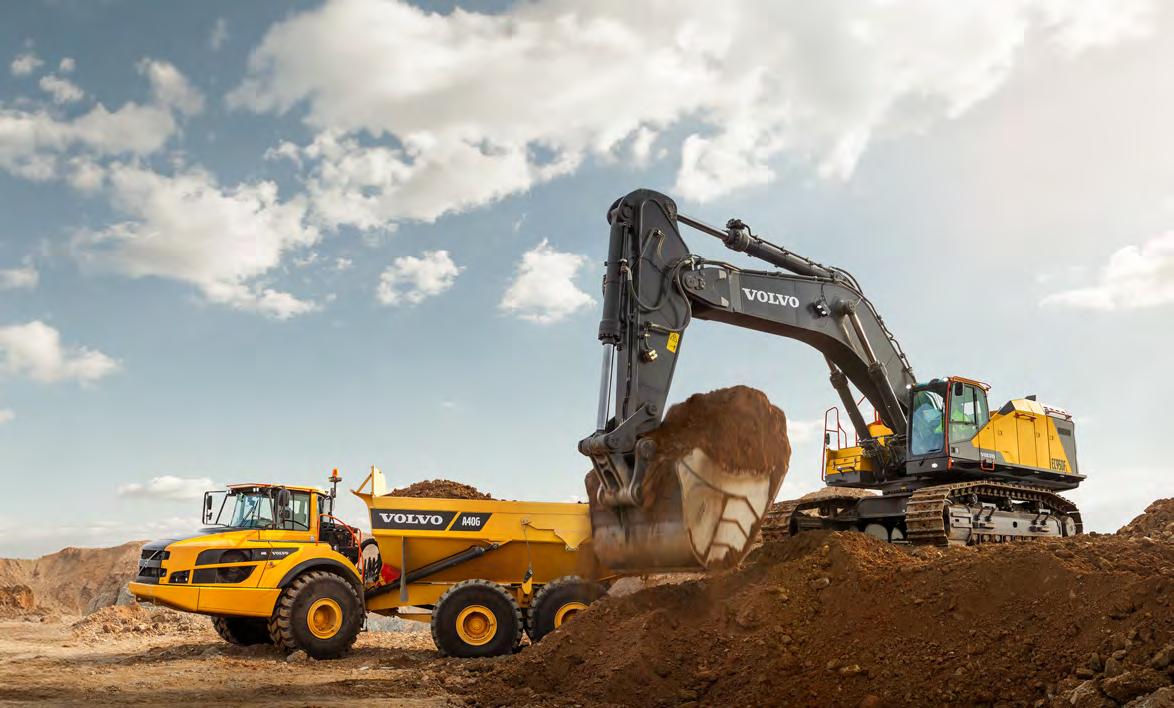

Nors Aftermarket is the Group's business segment that encompasses the distribution and retail of multi-brand parts for cars, trucks and buses.
This business area includes the brands Civiparts, in the heavy vehicle segment, and AS Parts and OneDrive, in the light vehicle segment.
Founded in 1982, Civiparts joined the Nors Group in 2003. Currently present in the Portuguese and Angolan markets, Civiparts specializes in the distribution of multi-brand workshop parts and equipment for the heavy vehicle segment (trucks and buses).
AS Parts starts its operation as a wholesaler in 2006, specializing in the independent distribution of parts, components and bodywork for the light vehicle segment, in Portugal.
With a wide multi-brand offer and having logistics efficiency and agility as its main competitive factors, AS Parts guarantees delivery coverage throughout the national territory, supplying numerous workshops and shops all over the country.

Under the OneDrive brand, the Group operates in the retail market of parts and accessories for light vehicles.
With distribution points in Portugal and Angola, OneDrive provides integrated services for parts identification, quotation, ordering and invoicing, ensuring a fast shipping and delivery service and specialised technical support.

Nors Ventures is the Group's business segment that encompasses complementary businesses and solutions. From insurance mediation to environmental solutions, through the commercialization of construction glass, this business axis has as its main goal to add value to the operation in a transversal logic. Here, we find the brands Sotkon and Amplitude Seguros.
Amplitude Seguros is an insurance and risk management consultancy, operating in different sectors of the economy and directing its offer to the Private and Business segments. Based in Portugal, Amplitude Seguros affirms a global presence through partnership agreements with different brokers, guaranteeing quality service to clients operating internationally, in any geography.
Present in Portugal, Spain, France, Angola and Turkey, Sotkon joined the Nors Group in 2008. Specialized in the development, marketing and distribution of modular systems for recycling and collection of urban waste through underground containers, it has more than 30,000 units installed worldwide.

1.3 big numbers
In the United States, Turkey, Central Europe, Mexico, Spain and Portugal, the Ascendum Group’s contribution is considered 100%, despite this joint venture being accounted for using the equity method.
1.3.1. business big numbers, bigger results

1.3.2. People
Training hours 30 Nationalities
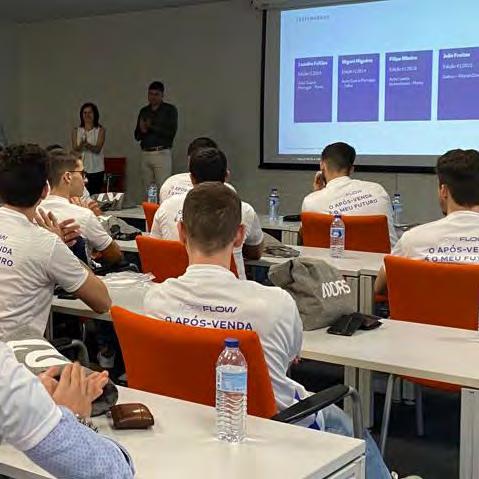
445 men
89 women management positions
534
1.4. governance model
The Governance Model identifies the Group's top management bodies and how they relate to each other. At Nors , the key governance bodies of the corporate model are the Board of Directors and the Executive Board, which has delegated powers for the day-to-day management of the Group. Other corporate governance bodies include the Statutory Auditor, the Remuneration Committee and the Company Secretary.
Nors ' Governance Model reflects the Group's purpose and value proposal, as well as a set of other governance principles that guide the organisation's morphology and its actions with its key stakeholders, of which we highlight:
Nors employees must guide their conduct by principles of honesty, integrity and absolute respect for Human Rights. legal and regulatory compliance
All Group employees must, within the scope of their functions, comply with the law and internal regulatory documentation.
The Group fosters an open, collaborative environment that promotes the sharing of organisational knowledge.
innovation and creativity
Nors promotes and values an environment of constant innovation and creativity, allowing the organisation to evolve and follow the latest market trends in its different areas of activity.
composition, operation and responsibilities by body
The General Meeting is made up of all the shareholders with voting rights in the Group's parent company, Nors , S.A..
remuneration committee
The Remuneration Committee is elected at a General Meeting. Is responsible to define the remuneration of the company’s governing bodies.
By law, supervision of the company is led by a Statutory Auditor, who will be a chartered accountant or a firm of chartered accountants. The Statutory Auditor has the powers that the law attributes to the Audit Committee.
The Group is managed by a Board of Directors elected at a General Meeting. The Board of Directors has the overall power to lead and manage the Group within the scope of the corporate purpose and the powers attributed to it by the Nors , S.A. articles of association.
The Executive Board is responsible for defining and implementing the transversal policies which materialise the strategy approved by the Board of Directors. It is also responsible for the day-to-day management of the Group's portfolio, monitoring the performance of its business areas and operations.

Tomás Jervell


Nascimento


Ana Peneda Member of Nors Executive

Jorge Guimarães
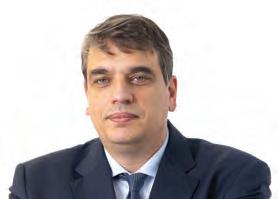
José Jensen Leite de Faria
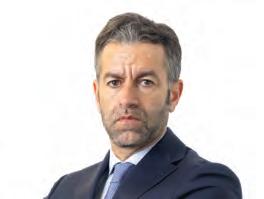
Júlio Rodrigues Member of Nors Executive








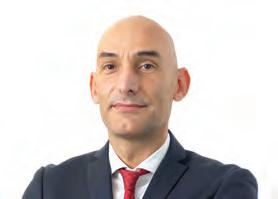
Luís Jervell Non


Tomás Jervell
Group CEO

Francisco Ramos Chief Operating Officer

José Jensen Leite de Faria Chief Corporate Officer

Jorge Guimarães Chief Operating Officer

Júlio Rodrigues Chief Corporate Officer

Peneda Chief People Officer

Rui Miranda Chief Financial Officer
Ana
structure portugal NORSMOBILITY NORSAFTERMARKET NORSVENTURES brazil NORSMOBILITY NORSOFF-ROAD canada NORSOFF-ROAD angola NORSMOBILITY NORSOFF-ROAD NORSAFTERMARKET botswana NORSMOBILITY NORSOFF-ROAD namibia NORSMOBILITY mozambique NORSMOBILITY NORSOFF-ROAD ascendum Portugal , USA , Mexico , Turkey ,
1.4.3. ownership structure

ownership structure
The share capital of Nors , S.A, which is fully subscribed and paid up, is 30 million Euros (30,000,000 shares with a nominal value of 1 (one) Euro).
Nors ’ capital is still held by the two founding families: the Jervell Family and the Jensen Family. On 31 December 2023, the breakdown of the company’s share capital was as follows:



2.1. our strategy for 2030

Throughout 2023, we stabilised and presented the Nors strategy until 2030, based on the motto 'Making our future work'.
This path will necessarily shape our future together and it implies everyone's involvement and participation in this journey from the beginning.
This new strategic cycle resulted from a collaborative exercise carried out over 18 months, involving the participation of People from different areas, sectors, and cultures, with the explicit intention of building an inspiring vision for the future, with the ability to mobilise all the People who make up the Nors universe.
With the assumption of reflecting the ambition to develop a company that is a source of pride for all, perpetuating the enduring legacy that already exists, we aim for a cultural change, ensuring an even more courageous, strong, and inspiring Nors in 2030.
This way, we have divided our actions into five pillars that systematise the Group's organisational commitment to the future: Growth, Efficiency, Transformation, People and Sustainability. Each of these pillars reflects ambitions and objectives that will determine Nors' future, and all of them play a crucial role in achieving the path we propose to pave.


efficiency
We want to grow, build a stronger Nors, and be ready to embrace the future. We know where we want to go and do it in a balanced, profitable, and secure way, emphasising portfolio diversification, strategic geographical expansion, and innovation. We need to focus daily on efficiency and results optimisation, always keeping the customer at the centre of our decisions and prioritising the value of their time.

Growth has played a pivotal role in Nors' success over the past 90 years and will play a fundamental role in building renewed success in its future. We aim to grow sustainably, promoting the development of a circular economy based on trusted partners who share our commitment to the future anchored in a culture of integrity.
NorsThe Nors Group's History over the past years is a tale of sustained growth. It's a journey that, far more than a sprint, resembles a marathon, and we aim to reach its final goal successfully, knowing that we are still at the beginning. In the sector where it operates, the Nors Group is already a truly global player, and we aspire to continue growing in a balanced manner, both in terms of products and geography.
Efficiency should be promoted in everything we do and deliver so that, in the end, we can achieve our ultimate ambition of a high-performance organisation that propels us to the level of differentiation and value addition we aspire to. To do so, we need to have a technological and sophisticated environment associated with our operations and leverage the Group's technological transformation and digitalisation project to underpin the challenges we face and enable customers to recognise our service's evolution, improvement and quality.
Francisco Ramos Group's COO Jorge Guimarães Nors Group's COO Júlio Rodrigues Nors Group's' CCOTransformation is a theme we have discussed extensively throughout the strategy's definition, and it is an essential pillar to achieve our ultimate vision, allowing us to create more value and remain relevant in the future. It seems clear to me that the roadmap we have designed for technological transformation will enable us to make the technological leap we need, but this leap is only relevant if the customer feels it. I am very proud of the customer focus and their presence at the centre of our decisions, which makes all the difference.
José Leite Faria Nors Group's CCO
We aim to be a driving force for transformation and always to remain relevant and adapt to the evolving context in which we live. Digitalisation and investment in innovation will be crucial for us to be prepared to face future challenges.
People are our most important asset; companies are the People who compose them and without our People we cannot embark on the growth and sustainability journey we have envisioned for the future. Hence, this pillar is the cornerstone of our strategy. We want to ensure we have happy and loyal employees eager to be part of Nors.
Ana Peneda Nors Group's CPOBecause we would not exist without People, we place our employees at the centre of our strategy. We aim to inspire, empower, and energise all our employees, promoting a more united Nors with a widespread sense of belonging through a strong and unique organisational culture.
Finally we want to be more sustainable, committed to leaving a better world for future generations through significant investment in sustainability actions and social initiatives within our communities. This is, indeed, the foundation of all the other pillars.
Sustainability appears as the foundation of our strategy, and I believe we genuinely embrace this because we understand that business behaviours that do not fulfill commitments to society, the environment, and future generations, focused solely on internal interests and financial returns, have a bleak future. Conversely, we believe responsible businesses will have a more prosperous future - at Nors, we have a range of initiatives contributing to this.
We want to leave a legacy we can be proud of in all these matters; therefore, these pillars, combined with the foundation of sustainability, are indeed our strategy for 2030. A strategy that seems solid, well-anchored, thoroughly discussed, and very well-constructed. I am delighted with the final result.
Tomás Jervell Nors Group's CEO

As it should be, we want the Strategic Plan created for 2030 to be truly a mission for all. We want our People to be involved and feel like an integral part from the very




In light of the Group's undeniable growth over the past years and considering that one of the strategic objectives for 2030 is to keep growing in a balanced, profitable, and secure manner, it is inevitable that we equip ourselves with the necessary tools to achieve this.
In addition to this factor, we operate in a constantly changing market environment, where we must be able to adapt and transform at an increasingly fast pace. We must ensure that our management models, processes, and systems can cope with the sector's dynamism and sophistication and sustain our competitiveness.
Thus, in 2023, we remain focused on prioritising the various fronts of transformation that we have underway, continuing the projects that foster our versatility and the agility with which we face the future.
Core is the digital and technological transformation programmeme that involves all functional areas of Nors, aiming to achieve a comprehensive model of application architecture and processes, which will provide greater efficiency and added value to the customer.
In 2023, the culmination of two years of hard work by all the teams involved took place with the go-live of Wave II of "Core Originals." This wave covered the operations of Auto Sueco Portugal and Galius, directly or indirectly impacting over 750 employees in Portugal. In this wave, integration with the administrative and financial back office was also reinforced.

To transform the after-sales areas and provide them with tools that sustain the future of Nors companies, Flow represents a new paradigm of Operational Efficiency based on a process improvement and optimisation journey supported by technological transformation. Based on lean methodologies, this programme assumes the adaptation of after-sales operations to the needs of our customers, ensuring service quality improvement and enhancing satisfaction. In 2023, the global implementation process of the Flow programme continued. After its launch in Brazil in 2022 at Auto Sueco São Paulo, the programme started at Auto Sueco Centro Oeste in 2023. Canada also joined the Flow programme map with the implementation kick-off at Strongco.




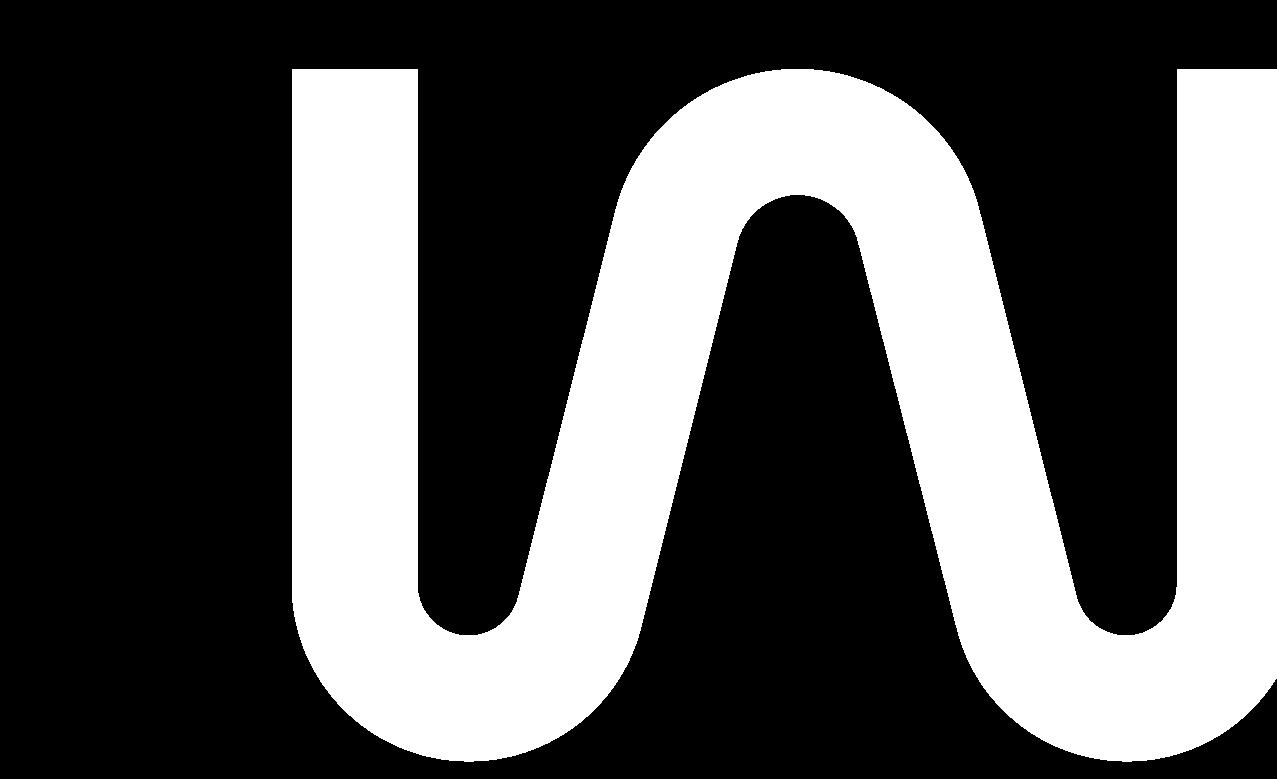
Through detailed mapping of all phases and touchpoints of the customer journey, and by identifying the gap between the customer experience and expectation at each touchpoint, Follow enables the company to adopt a customer-centric mindset and identify improvement opportunities through a set of initiatives with a defined roadmap. Follow associates this customer-centric process with implementing the Group's CRM tool, supported by the digital and technological transformation programme (Core). Follow will provide a competitive advantage in the market as it continually enhances the experience and ensures excellence at every stage of customer interaction. In 2023, this project was implemented at Auto Sueco São Paulo and Auto Sueco Centro Oeste and initiated at Auto Sueco Angola.

In its context, the Nors Group is exposed to a plurality of risks capable of affecting the pursuit of the defined strategy. To anticipate, identify, prioritise, manage, and monitor the risks that impact the organisation, the Group has implemented a rigorous risk control and management system. The Executive Committee supports these processes, which ensures alignment between the CEOs and the Risk Management team.
In this way, the Head Office of Audit and Risk aims to ensure the effectiveness of established processes and the efficiency and adequacy of internal control mechanisms, risk management, and internal audit, actively participating in the process of creating long-term value in an increasingly regulated and, simultaneously, unpredictable scenario.
The Group's risk control and management system are structured to support achieving the objectives in the Nors' strategic pillars, which embody the 2030 Strategy.

Responsible for ensuring appropriate risk management and internal control systems that promote a risk management culture. Also responsible for defining an adequate risk appetite, considering how the pursuit of the Group's long-term objectives may be affected by the crystallisation of one or more risks.


Responsible for identifying risks, managing the internal control environment, and monitoring potential changes in the risk profile adopted.
Responsible for developing and implementing policies and methodologies for integrated risk management; supporting the first line in coordinating the risk management process and respective control measures. Risk Owner



Perform analysis to ensure an independent level of confidence regarding the functioning of the internal control framework, the risk management system, and governance processes.


 1.st line of defense
2.nd line of defense
1.st line of defense
2.nd line of defense
The risk management and control system of Nors Group is based on the principles of ISO (International Organisation for Standardization) 31000 - Risk Management: risk management and control system information and comunication monitoring action plan risk response analysis and evaluation identification goals control environment

The Risk Management process is fully integrated into Nors Group’s processes at all levels:
• It involves the systematic application of policies, procedures, and practices;
• It is an integral part of management and decision-making;
• It is integrated into the organisation’s structure, operations, and processes.
A systematic approach consisting of six steps is adopted for its implementation: identification, analysis, assessment, response, monitoring, and reporting.
This process stimulates active thinking about the risks that impact operations and the respective role to be played.
control environment
Nors Group values building a solid compliance culture and adopting a risk-aware attitude. It clearly defines the roles and responsibilities of critical areas.
In this way, the Group promotes a controlled environment in pursuing its objectives and strategy, implementing various policies and procedures, such as:
• Code of Conduct;
• Anti-corruption Policy;
• Whistleblowing Channel;
• Risk Management Regulation.

People and communication

At Nors, we believe that our People are our most valuable asset and, therefore, our primary concern and the core of everything we do. In this 90-year journey, the commitment to our talent and the promotion of a culture of growth and development have been the centre of our success. We know that it is essential to equip our teams with the right tools and resources to evolve and unleash their full potential and unique skills. We aim to provide everyone with a good work environment and quality of life and ensure that we meet their needs on multiple fronts.
At the same time, we recognise that talent retention is as crucial as talent attraction to continue ensuring our legacy and future's simultaneous construction. Therefore, we strive to create an environment that stimulates and promotes the success of our talent and People through fair and personal development, fostering an inclusive and united culture where employees feel valued, respected, inspired, and motivated.
talent attraction & onboarding

compensation & benefits
talent, learning & development
Nors culture, employee experience & engagement internal communication brand & reputaion corporate & social responsability


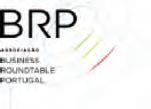
Local communities social support

In 2023, we launched Nors [intra]net: a new communication platform that aggregates the Group's information, initiatives, and functionalities impacting Nors.
This channel facilitated communication among our various companies, structures, and geographies, allowing employees to access all the information they need quickly and efficiently.
It becomes simpler to stay informed about everything happening within the Group worldwide, with news being continuously updated. This platform also promotes the culture of unity and sharing that we advocate, representing a space for interaction among everyone, more than just an exclusive space for institutional communication.


Nors+ is the new benefits programme at Nors that promises to aggregate in one place all the advantages of working within the Group so that all our People have access to a wide range of benefits that facilitate their daily lives. We aim to promote a balance between professional and personal life, offering various benefits in the areas of Education, Health, and Banking, as well as discounts on brands and services. Launched in 2023, this programme is currently available in Portugal and to be implemented in other geographies. It is structured into four main areas: flexible benefits, protocols, discounts, and flexibility.
The Nors Business Academy is the Group's corporate academy. This programmeme, spanning all geographies and companies in which Nors operates, aims to educate and develop our People by sharing internal knowledge. In this way, we encourage opportunities for technical, behavioural, and personal development for all employees, making them more comprehensive and fulfilled professionals. The NBA also features a platform and training concept adaptable to different profiles of Nors employees.

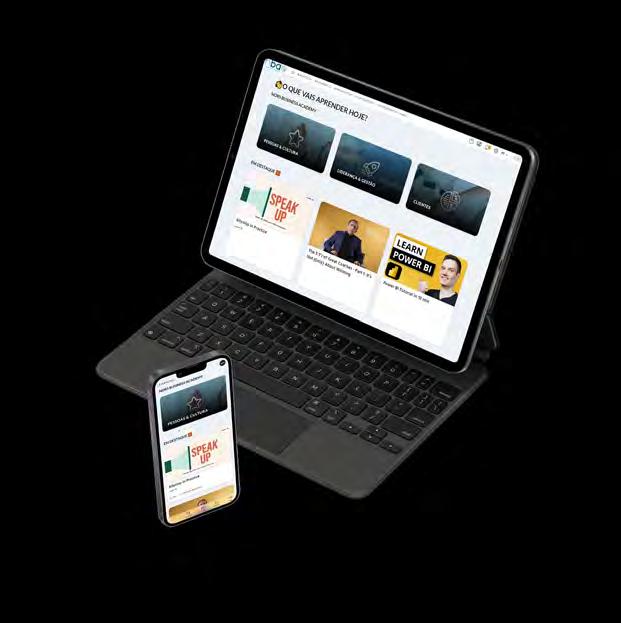

Nors Go is the Nors Group's trainee programme to attract, retain, and prepare the organisation's future talent. This programme is designed for recent graduates or those starting their professional experience with diverse backgrounds and skills. Nors GO aims to contribute to the professional growth of trainees by providing mentoring throughout the programme, continuous training, exposure to Nors leadership layers, and the possibility of integration into the Group.

This initiative is based on the strategy of providing the Group with a pipeline of young talent with excellent training and readiness for future challenges. This approach allows for the continuous revitalisation of Nors' structure and a refresh of the skill set, mindset, and preparation for future leadership.


The Nors Flow internship programme, resulting from an update and renaming of a previous initiative aimed at trainees in technical-operational areas, aims to associate operational efficiency with the Flow programme to attract young talent to integrate into Nors' after-sales and thus transform the future of this area.

Currently in its 7th edition, Nors Flow includes a paid internship of 9 months aimed at strengthening skills and providing certified training in areas such as Mechanics, Painting, Metalworking, Bodywork, Reception, or Logistics. Over 170 trainees have passed through Auto Sueco Portugal, Auto Sueco Automóveis, and Galius since 2014, with the programme boasting a retention rate of about 2/3 of the trainees integrated into it through their hiring by Nors companies.


2.5. sustainability

Today, the fast pace at which new needs, solutions and challenges arise requires organisations to have a full, and increasingly proprietary, understanding of the global challenges that impose themselves.
Considering numerous factors, from its position in the value chain to its geographical dispersion, current business models and the opportunities and risks inherent to its spheres of activity, Nors' proposal within the scope of its ESG (Environmental, Social and Governance) strategy aims to mirror a clear purpose regarding the performance of a relevant, integral and transparent role in all the relationships it fosters as an organisation: with employees, customers, partners and all the stakeholders, decision-makers and agents of transformation that orbit around it.
Therefore, in 2023, under the need to systematise, in a more tangible and concrete way, a sustainability approach capable of responding to the positioning and strategic goals of the Group, also under development, a path was started to reformulate the strategic assumption that had been in force since 2019. In this way, the intention is to establish a medium/long-term vision that is capable of increasing the value of our performance, defining commitments, political ambitions and environmental, social and governance performance metrics as criteria for strategic decisions. The presentation of a new strategic direction for the organisation materialised in the “Sustainability Pillar” integrated into the new Strategic Plan with a horizon to 2030.


· the future in the hands of the Goers - group
· local community support - portugal
· "Mãos à Obra" project - angola and southern africa
· local community support - brasil
The universal goals outlined in the United Nations Sustainable Development Goals aim to address environmental, political, and economic challenges by 2030, whose impact is global and cross-cutting. Nors' sustainability agenda is developed under these widely recognised guidelines, seeking to continuously implement concrete and consistent actions to reinforce these priorities.
· well-being and health promotion - portugal
· well-being and health promotion - angola and southern africa
· awareness-raising and health-prevention action - brasil
· "Mãos à Obra" project - angola and southern africa
· "Braço Direito" initiative - angola and southern africa ·

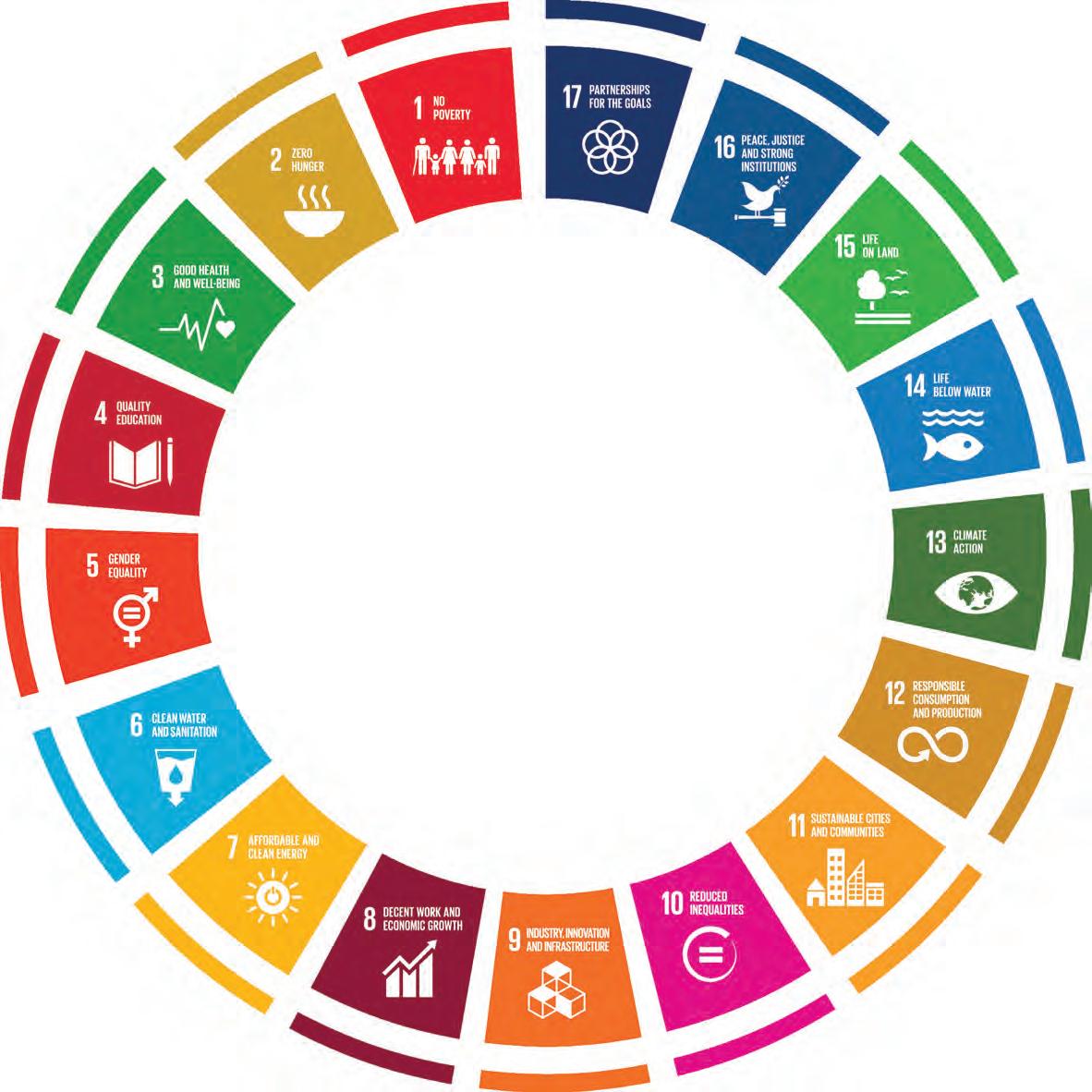
Faced with the destruction caused by the earthquakes that struck Turkey and Syria earlier this year, the Group joined the aid provided by the Anadolu Isuzu Group by donating 10 steel tents worth €5,000.

Group
the future in the hands of the Goers
Demonstrating young entrepreneurship and their concern for the future, the #Goers (trainees of the Nors GO Programme) repurposed damaged or obsolete uniforms from our workshops and, in collaboration with the social reintegration association Betel, commissioned the manual production of tote bags branded with the Nors identity to be distributed at job fairs and other promotional events. To date, 44 uniform pieces have been collected at Auto Sueco Automóveis and 76 pieces at Galius, resulting in 40 tote bags.
Continuing the premise of upcycling the waste we produce in our facilities, the Goers also collected damaged bumpers and fenders from the workshops, which were transformed into flower beds to decorate a renovated Nors building.


Portugal
local community support
The Nors Group once again partnered with the association Porto Solidário, this time for the "1 month = 1 goods x 2) campaign. This initiative involves collecting food items from employees of some companies within the Group in the Porto area. Every two months, different items are requested, and the Group doubles the quantity of products for every donation gathered by employees.
Additionally, Amplitude Seguros supported Porto Solidário by offering insurance for the vehicle used to distribute food products.
Sotkon also supported the community it serves by collecting clothes, household items, toys, books, games, personal hygiene products, and school supplies, among other things. The company also made a monetary donation, which, combined with the collected goods, was delivered to CAT - Temporary Reception Centre in Praia do Ribatejo, which provides urgent and temporary shelter for vulnerable children and young People aged between 6 and 17.
Furthermore, Norshare in Portugal supported the Santo Tirso Association for Solidarity and Social Action through a solidarity team-building activity held during its Kick-Off event. Additionally, they donated 8 bicycles to an institution supporting children in this locality.




Portugal
well-being and health promotion
Nors promoted the fulfilment of dreams for visually impaired children through the Terra dos Sonhos association, providing 10 blind or severely visually impaired children with the experience of a trip to Disneyland Paris.
The Group also partnered with ALMAZ - a holistic association in the prison environment - to support the "Prison Yoga Project" initiative. The primary purpose of this project is to support inmates with yoga and meditation practices to promote rehabilitation and social reintegration, reduce recidivism, improve mental and physical health, promote social and behavioural transformation, and prevent public safety issues.
During this year, we also highlight the Group's membership in ASM - the Alliance for the Promotion of Mental Health in the Workplace, which aims to place People at the core of organisations and mental health as a top priority.
Additionally, Norshare organised a collection of bottle caps to purchase a wheelchair for children with motor disabilities.
Finally, Auto Sueco Automóveis donated a simulation baby chair to the Gynecology and Obstetrics service at the Centro Hospitalar de Vila Nova de Gaia and Espinho. This bench facilitates the installation of child restraint systems, contributing to the promotion of safe behaviours and proper child transportation. It also provides parents with the opportunity for simulation and training.

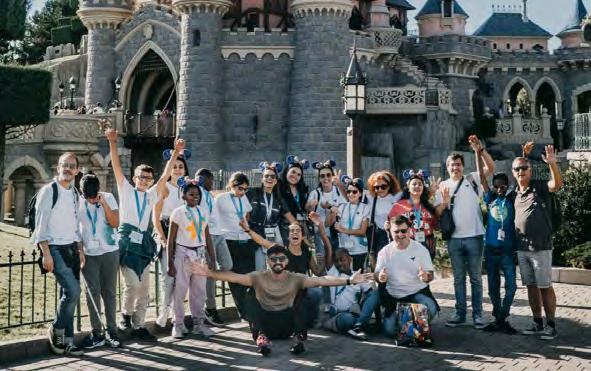
Portugal
environmental sustainability and renewable resources
Following the pilot unit in Maia in 2022, photovoltaic panels were installed at the Auto Sueco Portugal facilities in Guimarães and Setúbal. Currently, 579 solar panels have been installed, which have already reduced CO2 emissions by nearly 100 tons. By summer 2024, there is expected to be 885 MWh of photovoltaic production, with a projected selfconsumption rate of 60% to 70%.
Continuing in this subject, Auto Sueco Portugal joined the Route 25 consortium - a project under the National Recovery and Resilience Plan (PRR), led by Capgemini Portugal and involving 28 entities, to advance the agenda of autonomous, intelligent, interoperable, and inclusive mobility.
Finally, with this scope, Galius partnered with students from the Instituto Superior Técnico in Lisbon, providing the facilities, knowledge, and expertise of professionals to design and prepare molds for constructing highly efficient electric vehicles. Once produced, these vehicles have participated in national and international competitions and won numerous national and international awards.


“Mãos
The Local Corporate Centre of Angola & Southern Africa continued its social action plan by promoting the well-known and cherished project "Mãos à Obra" (Hands-on), which was also recognised at the last edition of the We Nors Awards with the Special "90 Years" Prize. This social responsibility project works with the Community of Nossa Terra, alongside the Salesians of Dom Bosco, as it empowers the community school.
As part of this initiative, scholarships were also awarded to 3 young People from underprivileged families, aged between 18 and 22, who are attending high school courses in Automotive Mechatronics and Machines and Engines at the Industrial Polytechnic Institute of Luanda.
In Namibia, this project contributed to improving conditions and safety in the community child centre by installing fencing and renovating the community kitchen.
In Botswana, assistance to disadvantaged children was provided through donations from Auto Sueco Botswana, including school uniforms, shoes, backpacks, writing and learning materials, and hygiene items, to the Tshwaragano primary school in Gaborone.
Learn all about "Mãos à Obra," one of the projects that fill us with pride.


“Braço Direito” in training encouragement
The Nors Group companies in Angola also organised the "Braço Direito" initiative, which offers young trainees from the National Institute of Employment and Professional Training, Nors scholarship holders, and students from the Nossa Terra Community, the opportunity to spend a day alongside our staff. 16 young people had the chance to learn about the daily activities of our staff from several areas, shadow them, and perform some tasks.

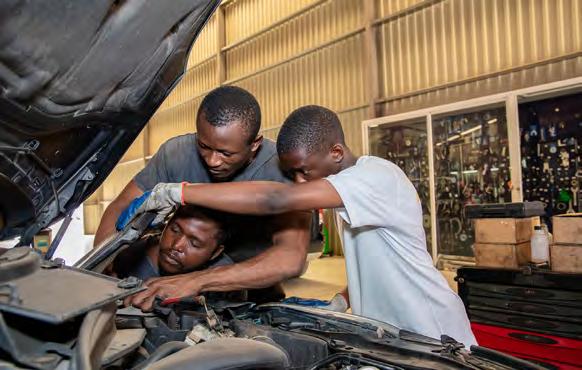
well-being and health promotion
The companies of Nors in Angola organised a health fair in the Community Nossa Terra in partnership with the Congregation of the Salesian Fathers of Dom Bosco and the National Youth Council. This initiative aimed to provide healthcare to the community in the areas of general medicine, pediatrics, physiotherapy, and psychology at a time when there was a growing number of diseases and significant healthcare deficits. This activity aimed to combat the spread and progression of clinical conditions. Additionally, the Human Resources Department of Angola and Southern Africa also promoted the 2nd edition of the well-being programme "Toca a Mexer" (Let's Move) in partnership with the OkuHuman consultancy. This initiative, which comprises physical exercise sessions, nutritional counseling, and yoga classes, among many others, is based on the premise that well-being encompasses not only physical health but also mental health and nourished relationships.


Brasil
local community support
Nors Centro Oeste donated used uniforms to make rugs, which are then sold, and the funds raised go towards supporting disadvantaged children in the local parish.

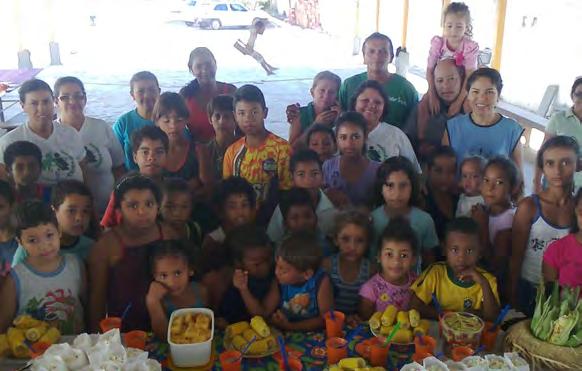
awareness-raising and health-prevention actions
Throughout this year, Nors companies in Brazil have promoted several awareness campaigns on health issues, focusing on raising awareness among employees about certain diseases and encouraging prevention. These campaigns included promoting preventive flu vaccination and providing information about breast cancer associated with "Pink October" and prostate cancer linked to "Blue November."
In the Catanduva region, AgroNew conducted a campaign to collect pull-tabs to support the Cancer Hospital and made a monetary donation to the voluntary association supporting cancer patients and their families in the region.
Finally, AgroNew organised a social gathering with the elderly residents of Asilo São Vicente de Paulo to reduce their isolation and loneliness during Easter.



we are building a better tomorrow with our People
Sustainability is the cornerstone of our strategy for the future, and it was one of the most discussed topics throughout the strategic definition process.
We began by developing a roadmap for a comprehensive strategy, focusing on topics such as decarbonization, our environmental footprint, the social impact we leave behind, and the governance policies that guide us.

Diagnosis: We started by understanding what we were already doing in this field, what we had proposed to do, and what priorities to follow.
We listened to experts and our people: We interviewed over 20 individuals and received responses from over 200 employees through a questionnaire.
Benchmarking: We identified the best practices in the market and industry to determine what was being done exceptionally well.
We facilitated workshops to identify priorities through exercises.
We aligned these results with the strategic vision we were pursuing and achieved our main objective: making sustainability a cross-cutting pillar of Nors, present in various areas, and integrated into the value creation process and our positioning as an organisation.

We conducted a materiality analysis for all regions where Nors operates and the Group as a whole, considering both financial and non-financial aspects.
We calibrated the results and identified eight key action areas for sustainability.
and so we have reached our main goals
We aim to promote sustainable growth.
How? By acting with integrity, embracing circularity, and fostering trusting relationships.
We aim to embrace transformation and innovation for the sake of our planet.
Our goal is to increase sales of zero-emission vehicles and foster strategic partnerships in innovation.
We aim to efficiently promote the reduction of our ecological footprint.
To achieve this, we will focus on reducing our environmental footprint and minimizing waste production.
We aim to have a positive impact on the people we serve
We want to help the communities where we are located by promoting inclusion and diversity.




3.1.main macroeconomic indicators
According to the latest projections for the end of the year, Portuguese GDP is expected to grow by 2.1% in 2023. The context of geopolitical tensions, particularly the ongoing war in Ukraine caused by the Russian invasion, and the conflict in the Middle East between Israel and the Islamist group Hamas, along with restrictive monetary policy, contributed to the slowdown in economic growth.
Following economic stagnation in the second and third quarters of 2023, there was low growth in the fourth quarter. The recent evolution of economic activity was constrained by weakening external demand, inflation experienced during the year (with an average annual HICP variation of 5.3%), and tighter monetary policy, which affected the financing conditions of economic agents.
In 2023, private consumption grew by 1.0%, in a context of real disposable income gains and an increase in the savings rate. Regarding public consumption, it also increased positively by 1.1%.
Despite the growth in private and public consumption, these are expected to lose weight concerning the growth of the Portuguese economy, which should be based on the dynamism of investment and exports, with the improvement of the macroeconomic context.
Export growth was more restrained compared to previous years, due to cooling demand from key trading partners. Goods exports declined in 2023; however, it is expected that in the following years, external demand will recover at a slower pace than the prepandemic period and support higher growth rates in goods exports.
Regarding services, there was significant growth in 2023, as a result of the postpandemic recovery of tourism. Overall, these effects led to an expected growth of 4.3% in export volume.
Meanwhile, import growth in 2023 was 1.3%, with gradually moderate growth expected in the following years.


The labor market maintained a favorable performance in 2023, with an unemployment rate of 6.5%. A rise in the unemployment rate to an average value of 7.2% is projected for 2024-26, which is close to the estimated trend unemployment rate. It is estimated that labor supply will continue to increase due to rising immigration and labor force participation rates compensating for the effects of population aging.
Regarding inflation, there was a reduction throughout 2023, reflecting monetary policy and the impact of reduced production costs on consumer prices.
After reaching 2.6% year-on-year in the last quarter of 2023, inflation is expected to be pushed higher, mainly due to prices of energy goods (an increase in electricity prices is expected at the beginning of the year, and unlike what happened in the first half of 2023, fuel prices are not expected to decrease to the same extent) and food prices (end of zero VAT in January). In 2025, inflation is expected to converge to 2.0%.
In 2024, the Portuguese economy is expected to slow down, with GDP growth around 1.2%, projecting an acceleration to 2.2% in 2025.
Inflation rate in Portugal
In Brazil, GDP grew by 3.1% in 2023, with a forecasted slowdown in growth to 1.7% in 2024, followed by growth of 1.9% in 2025. Agricultural exports drove growth in 2023, but this momentum is expected to fade in the following years, considering the context of lower commodity prices.
Regarding inflation, there was a decreasing trend throughout the year, estimated to be around 4.6% in 2023 and 3.2% in 2024. This allowed the Central Bank to ease monetary policy, resulting in effects such as a reduction in the basic interest rate (SELIC). Due to the expectation of continued inflation decline, it is estimated that the Central Bank of Brazil will continue an expansionary monetary policy, with a further reduction in SELIC to around 9.2% by the end of 2024 and 7.8% by the second half of 2025.
The loosening of monetary policy restored confidence to investors and is expected to boost private investment, improving financial conditions.
In 2023, fiscal policy was expansionary, driven by increased social transfers. New fiscal rules were approved with the aim of adding flexibility, particularly in investments, and improving mediumterm predictability. Additionally, a tax reform was approved in the Chamber of Deputies, aiming to create a unified value-added tax, which will simplify the tax system and boost economic growth.
The labor market has been strengthening, with the unemployment rate around 8.3% in 2023. Job creation is predominantly driven by the services sector.


After a GDP growth of 3.8% in 2022, Canada's GDP growth in 2023 is expected to reach only 1.1%. This slowdown reflects the slowdown in domestic demand, related to increased borrowing costs and reduced exports due to the slowing US economy. The economic outlook for 2024 predicts another timid growth, around 1.4%.
Regarding inflation, the highest value since 1982 was reached in 2022 (6.8%). In 2023, inflation was around 4.0%, heavily impacted by the increase in fuel prices. On the other hand, decreases in underlying inflation have been observed. For 2024, inflation is estimated to be around 3.0%, moving towards reaching 2.0% in the following years. In case of a slowdown in the first half of 2024, there is a possibility of interest rate relief in the second half of 2024, which should support economic growth – however, failure to meet inflation targets for 2024 may jeopardize economic growth forecasts.
In the labor market, the unemployment rate was around 5.5% in 2023, in line with the previous year, where it reached a historic low of 5.3%. Wage growth will be moderate in 2024, remaining in line with inflation. Economic growth is expected to strengthen in 2025, reaching 2.3%. Strong external demand will drive exports and business investment, as well as increase purchasing power.


In Angola, in the year 2023, there was a slowdown in GDP growth, which was around 1.3%, mainly due to the weakening of the oil sector. The decline in oil production and prices resulted in lower oil export revenues. On the other hand, there was positive performance in the non-oil economy, with the diamond and mineral sector contributing the most to this improvement, ending the third quarter with a growth of 41.7% compared to the same period last year.
Between May and June 2023, the Kwanza depreciated by about 40% against the US dollar. This depreciation is related to the decrease in oil revenues and higher external debt service. The end of debt moratoriums put pressure on the country's foreign currency reserves.
Regarding the inflation rate, although it remains high, it has shown a decreasing trend in recent years, standing at around 13.1% in 2023. However, it is estimated that inflation will increase significantly in 2024, reaching 22.3%. This increase in the inflation rate is due to the impact of exchange rate fluctuations on imported foodstuffs.
It is projected that total public debt service will be around 14.3 billion kwanzas, with 5.9 billion corresponding to domestic debt and 8.3 billion kwanzas representing external debt service. This effort in debt service again puts considerable pressure on the Angolan currency in 2024.
For the coming years, despite the significant increase in the inflation rate, prospects for the Angolan economy remain positive, with GDP growth forecasted to be around 3.3%.
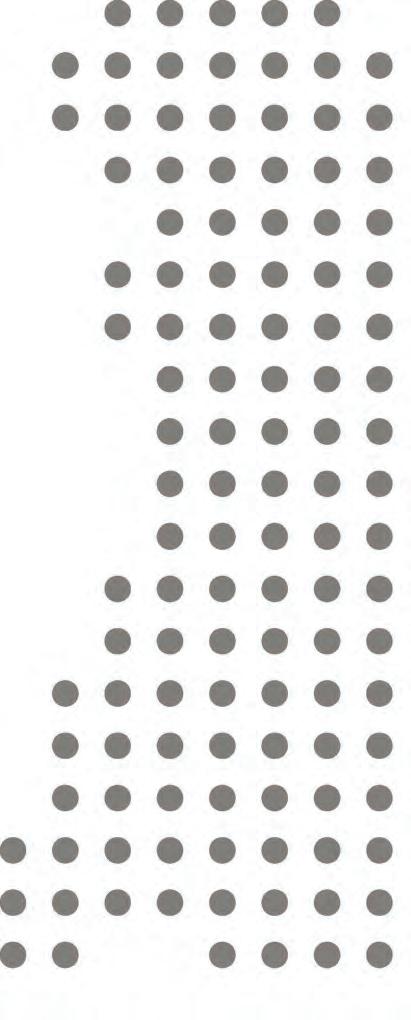

Inflation rate in Angola
The economic performance of Namibia has been recovering, with GDP growth in 2023 around 2.8%. This GDP growth was higher than pre-pandemic levels but lower than the growth recorded in 2022, which was around 4.6%. The mining sector has helped Namibia recover from production losses resulting from the pandemic, being the main sector contributing to economic activity. On the other hand, agricultural production contracted due to droughts and floods in 2023, as well as rising fertilizer prices due to the war in Ukraine.
Regarding inflation, it increased sharply in 2022, considering high international oil and food prices, which were around 6.1%. In 2023, the inflation rate was 6.0%, and it is expected to be 4.9% in 2024. The fiscal deficit is expected to decrease, driven by strong mobilization of domestic resources and tax compliance efforts by the Namibian Tax Authority, along with spending rationalization efforts. The current account deficit is expected to decrease due to increased revenues from the mining and tourism sectors.
Regarding the labor market, the employment rate remained below pre-pandemic levels, as labor-intensive manufacturing subsectors created jobs relatively slowly.
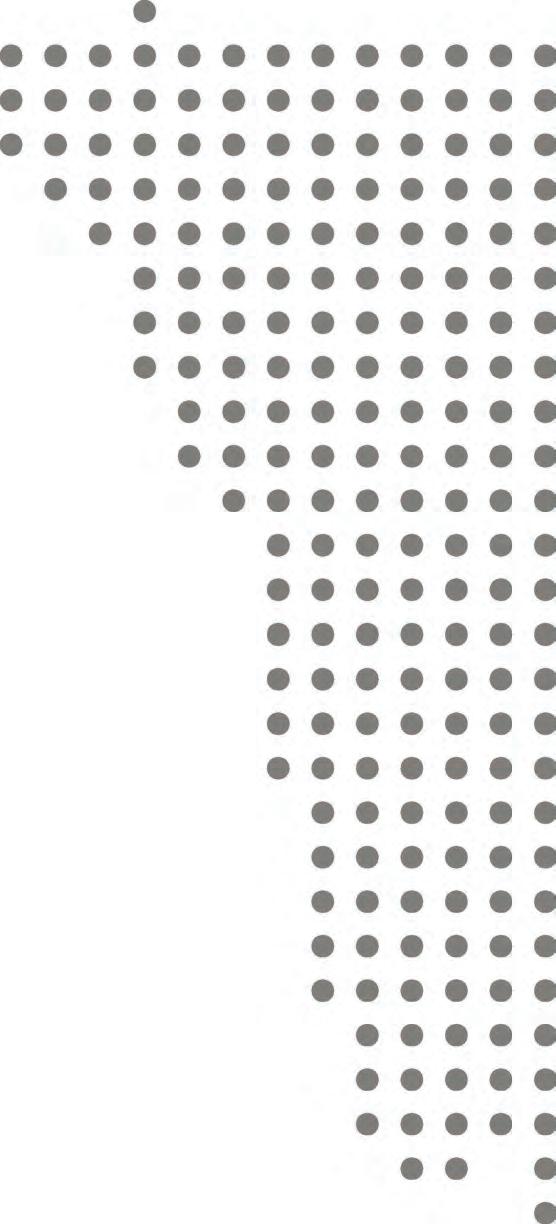

Inflation rate in Namibia
The economy of Botswana is heavily dependent on diamond production, representing about 90% of goods exports. In 2023, the decrease in diamond production led to a slowdown in GDP growth to 3.8%. However, the liberalization of the beef sector and the increase in copper and vaccine production contributed positively to the evolution of economic activity. The mining sector is expected to grow in the years 2024 and 2025, as diamond prices and quantities produced are expected to increase.
The performance of the non-mining sector is also expected to improve, driven by government actions to support economic activity. Climate shocks continue to challenge growth prospects, posing a threat to activities in agriculture, mining, and tourism. In 2023, the unemployment rate and level of inequality remain quite high in the country, with the unemployment rate hovering around 25%.
Regarding inflation, it was quite high in 2022, reaching 12.2%. In 2023, inflation decreased, reaching around 5.9%, mainly due to the decrease in international oil prices starting in May and the fact that regulated prices remained unchanged.
Despite the forecasted GDP growth of around 4.1% for 2024, growth prospects remain unstable. This vulnerability is mainly related to the dependence on the mining sector (diamond exports) and high levels of unemployment.


After the impact of the pandemic crisis, Mozambique resumed its growth trajectory, registering GDP growth of 2.4% in 2021 and 4.2% in 2022. In 2023, there was an acceleration in the pace of GDP growth to 7.0%, mainly driven by the production of Liquefied Natural Gas and the extractive and agricultural sectors. In 2024, GDP growth is estimated to be around 5.0%.
Mozambique aims to use the Liquefied Natural Gas sector as a supplier of energy for electrifying the country.
The government is investing in agricultural productivity, which should lead to overall growth in the sub-regions, resulting in increased use of Mozambique's logistical routes.
Despite the good prospects for the country, the main risks identified for consolidating this trajectory are climate shocks, security risks, and pressures on food and fuel prices, which could cause a reduction in medium-term GDP growth.
Regarding inflation, it was lower than initially expected, around 7.4% in 2023, mainly reflecting lower prices of food and fuel.


After GDP growth of 5,8% in 2022 and a closing estimate of around 2,4% in 2023, Spanish economic activity is believed to lose strength throughout 2024, with growth expected to be around 1,5%.
Economic growth in 2023 exceeded expectations, mainly due to the fact that the energy crisis dissipated more quickly than anticipated and the strong momentum of the external sector. For 2024, the impact of rising interest rates is expected to remain significant; however, the economy will continue to have supportive elements that will allow it to keep growing, albeit at a slower pace. Particularly noteworthy is the labor market, which supports confidence and income growth for households, along with the support from European funds.
Regarding the pace of price growth, it is estimated that 2023 closed with an average inflation of 3.5%, which will evolve to 3.9% in 2024. Despite the increase in oil prices between July and September 2023, signs of moderation were observed in both October and November, with a downward trajectory expected in the coming months. However, underlying inflation, which excludes the energy component and unprocessed food products, has remained persistent, with a year-on-year growth of 4.5% in November.
The labor market has shown very positive signs, in line with activity evolution and the assumption of some productivity recovery. The unemployment rate continues to decline, although at a slower pace than in recent years - the unemployment rate in 2023 is estimated to have been 12.1%. The labor market appears robust, reflected in the growth of the active population, as well as the incorporation of immigrants into the workforce.


The year 2022 was marked by a slowdown in GDP growth, reaching 1.9%. In 2023, growth was 2.5%, with an expected slowdown in 2024 and 2025 to around 2.1% and 1.7%, respectively. As a consequence of restrictive monetary policy, a slowdown in private consumption and investment is expected. In 2023, the unemployment rate was 3.6%, with estimates suggesting it will remain stable in 2024 compared to 2023.
Regarding the inflation rate, it was 8.0% in 2022, showing a deceleration in 2023 to 4.1%, with an estimated rate of around 2.8% in 2024. As for underlying inflation, housing market and services inflation are the main highlights.
Oil exports reached record levels in 2023, despite the high effective dollar exchange rate. The trade balance with China improved after exports performed in line with previous years, while imports decreased by 25%.
It is estimated that consumption and investment growth will increase in 2024 and 2025 as inflation decreases and monetary policy becomes more flexible. However, the geopolitical environment continues to present uncertainties and risks, given the high trade tensions with China, the ongoing Russia-Ukraine conflict, and conflicts in the Middle East. Additionally, the presidential elections in 2024 could also have significant impacts on the future macroeconomic context.


In 2023, the Turkish economy again experienced a decline in GDP growth, resulting in a growth rate of 4.0%. It is estimated that in the years 2024 and 2025, growth will continue to slow down, reaching 3.1% and 3.2%, respectively. Investment growth will remain high due to ongoing reconstruction efforts following the earthquakes that struck the country earlier in the year. It is expected that exports will significantly evolve in 2025, driving strong overall growth.
Regarding price developments, inflation reached 72.3% in 2022. Despite decreasing in 2023, inflation remains at high levels, around 52.8%, with an estimated decrease to 47.4% in 2024. Inflation is strongly driven by increasing production costs, strong demand, and the devaluation of the Turkish lira.
The unemployment rate decreased from 10.5% in 2022 to 9.6% in 2023, with an estimate to settle around 10.0% in 2024.
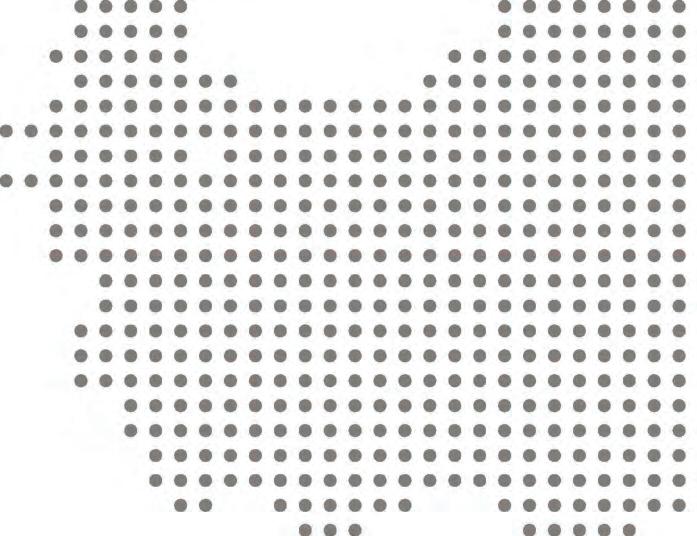

In 2023, the Austrian economy experienced an economic contraction of around 0.4%, and it is expected to grow by 0.6% in 2024. High inflation, rising interest rates, and labor shortages have dampened investment and weakened external demand. Exports account for more than 50% of GDP, making Austria vulnerable to fluctuations in global trade and external demand. Investment is expected to remain moderate due to high financing costs and increasing labor costs.
Inflation in 2023 was 7.7%, with notable increases in energy, restaurants, and hotels. A decrease in inflation is projected for 2024, reaching 3.9%.

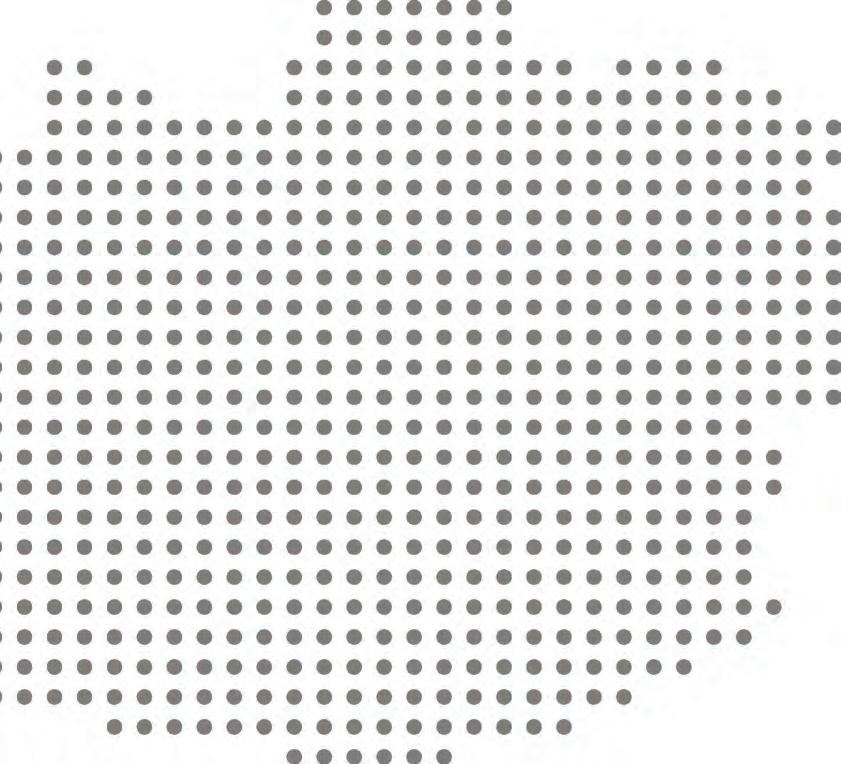
Hungary experienced an economic contraction of 0.6% in 2023, with GDP growth projected to reach 2.4% in 2024. The contraction in 2023 is directly linked to a loss of investor confidence, especially in the construction and retail sectors, as well as a decline in private consumption.
In 2023, the inflation rate peaked at 17.5%, but it is estimated to decrease significantly to 4.6% in 2024. The decrease in inflation, driven mainly by
energy and food prices, will allow for a gradual recovery in investment and private consumption.
It's worth noting that the main risks regarding future projections relate to the pace of inflation decline and the outcome of negotiations with the EU regarding the implementation of European funds.

Romania recorded a GDP growth of 1.9% in 2023, showing a decrease from the 4.6% value in 2022. For 2024, the growth is projected to be around 3.0%. Infrastructure projects funded by the EU will continue to positively impact economic activity, with this sector being the main contributor to GDP, while the industrial and agricultural sectors have been losing weight in this indicator.
Exports and imports decreased due to the fall in oil and gas prices. Although the current account deficit has decreased, it still remains high. The unemployment rate in 2023 was 5.7%, above pre-pandemic levels.
Regarding inflation, there is a decreasing trend, as it was around 10.4% in 2023, and it is estimated to reach 5.0% in 2024, with monetary policy expected to remain restrictive in 2024. By the end of 2025, overall inflation will decelerate to 3.5%.
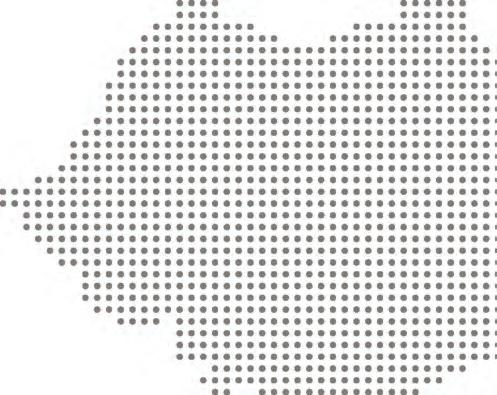 Fonte
Fonte

In the Czech Republic, there was an economic contraction in 2023, around 0.3%. Despite this decline, GDP is expected to grow by 1.6% in 2024. Domestic demand is heavily affected by high inflation and restrictive monetary policy. On the other hand, public investment shows improvements, driven by the final phase of the EU 2014-2020 programme and the use of funds from the Next Generation EU.
Weak domestic demand has led to a reduction in imports, but nevertheless,
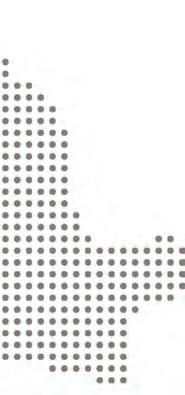
significantly in 2023, around 10.7%, and is expected to be around 3.1% in 2024. This decrease in inflation, coupled with an increase in real wages and an unemployment rate below 3%, will have positive effects on private consumption. However, the Czech economy is subject to various uncertainties, such as potential disruptions in energy supply, unexpected increases in raw material prices, and sharp depreciation of the Czech crown.

In 2023, the Croatian market saw GDP growth of 2.5%, and it is projected to stabilize in 2024, around 2.6%.
Growth was driven by the recovery of consumption, as wages and employment increased, boosting real household incomes. Robust tourism activity, partly driven by integration into the Eurozone and Schengen Area, supported demand in labor-intensive services, helping to reduce the unemployment rate. These factors offset the weakening of the
As for the Mexican economy, GDP growth is expected to slow from 3.4% in 2023 to 2.5% in 2024 and 2.0% in 2025. It is estimated that exports will be affected due to the more moderate growth in the United States.
In 2023, consumption proved resilient and investment grew, especially in non-residential construction, supported by public infrastructure projects and investment in machinery and equipment for the relocation of industrial parks near the border with the United States.
industrial sector, which saw decreases in goods exports, affected by higher energy costs and weaker external demand.
Inflation slowed down in 2023, reaching 8.6%, and it is expected to decrease in the years 2024 and 2025, hovering around 4.2% and 2.6%, respectively.
Source International Monetary Fund
OECD: Economic report november 2023
The inflation rate was 5.5% in 2023, showing a decreasing trend for the coming years, translating into a projection of 3.9% in 2024 and 3.2% in 2025. Therefore, monetary policy is expected to remain restrictive, aiming to ensure that inflation decreases gradually and sustainably.

Source International Monetary Fund
OECD: Economic report november 2023
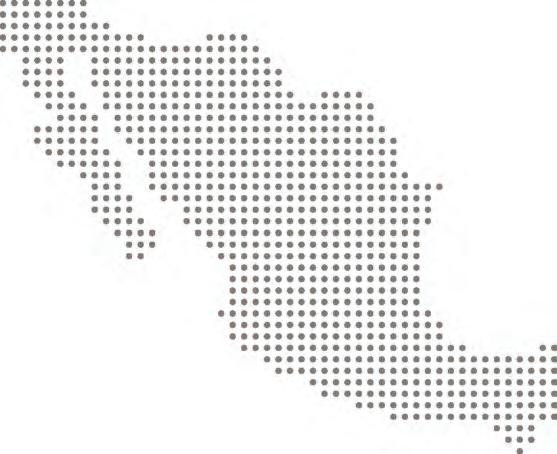


Economic growth in Slovakia in 2023 was 1.1%, and it is estimated to be 1.8% in 2024 and 2.4% in 2025, respectively.
The continuation of a restrictive monetary policy will pressure private investment. However, EU recovery and resilience funds will sustain public investment over the next few years. Projections indicate an increase in exports, in line with external demand, due to fewer disruptions in the supply chain in the short term.
The labor market remains resilient, with an unemployment rate close to pre-pandemic levels. As for inflation, it reached 11.1% in 2023; however, it is estimated to decrease significantly in the coming years to 5.2% in 2024 and 3.4% in 2025.
Source International Monetary Fund OECD: Economic report november 2023

3.2. economic performance
3.2.1. global economic performance
The year 2023 was marked by the consolidation of business volume, with the Nors Group recording a value in line with 2022. We demonstrated, with great success, that the growth strategy pursued in recent years enabled the Group to reach the milestone of 1.5 billion Euros in 2023 - a result that represents a new sales record for the Nors Group. In a context of high macroeconomic and geopolitical challenges, the Group showed resilience and adaptability to market circumstances. These factors were critical in capturing value from all the geographies where the Group operates, ensuring the importance of operational diversification.

We highlight the sales growth in Portugal, which exceeded the previous year by 75.4 million Euros (+21.0%), largely associated with the business portfolio that transitioned from the previous year. In Brazil, despite initial investor skepticism leading to postponed purchase decisions, we saw a maintenance of business volume (+0.3% compared to 2022), favored by the inclusion of Agrofito and Nors Centro Oeste in the operational scope in Brazil. Canada experienced a decrease in business volume of 44.5 million Euros (-11.4%), reflecting the effects of restrictive economic policies.
In Africa, sales decreased by 9.3% (15.5 million Euros), closely related to the impact of activity in Angola. In this geography, the effect of currency devaluation, which occurred in the second half of the year, negatively impacted sales by 14.4 million Euros compared to the same period.


The breakdown of turnover by geography and business area is as follows:

The Group's gross margin, like the business volume, showed a stabilization in growth, increasing from 264.4 million Euros in 2022 to 267.2 million Euros in 2023 - a 1.0% increase primarily driven by the after-sales segment.
The commercial gross margin contributed 118.7 million Euros (-1.4% compared to 2022). Portugal experienced a growth of 35.3%, which was not sufficient to offset the declines seen in other regions, with Brazil and Canada showing the largest variations - -10.2% and -4.1%, respectively.
In the after-sales segment, the excellent performance in gross margin across all markets, except for Angola, contributed 148.0 million Euros – an increase of 5.8 million Euros compared to 2022. Excluding the effects of acquisitions, on a comparable basis, the impact would remain positive at 3.5 million Euros.
In 2023, the consolidated profitability of the gross margin reached 18.1% of the business volume, compared to the 17.9% achieved in 2022, representing a growth of 0.2 percentage points. This was only possible due to the consolidation of selling margins in our operations in 2023, especially in the after-sales activity, capitalizing on the investments made in recent years.
In 2023, the EBITDA amounted to 188.8 million Euros, representing a reduction of only 1.8% compared to the historic result achieved in 2022.
It's worth noting the positive contribution from Portugal (+6.2 million Euros) and Ascendum (via Equity Method) with a growth of 11.0 million Euros, while the remaining geographies reduced their contributions compared to the same period, notably Canada (-9.6 million Euros), Angola (-6.4 million Euros), and Brazil (-5.6 million Euros).
The EBITDA margin presented in 2023 was 12.6%, similar to the 13.0% EBITDA percentage in 2022 – the prudent increase in indirect expenses was offset by the excellent performance of the margin across various Nors businesses and the increased contribution from Ascendum's EM in 2023.
In addition to the evolution of EBITDA, it is important to highlight its geographical dispersion in terms of its origin. In this regard, we demonstrate a healthy distribution of EBITDA, with none of the geographies exceeding 30% of the total Group weight.
breakdown of ebitda by main contributors
The year 2023 was marked, as previously mentioned, by the effects of restrictive monetary policies in most countries where the Group operates, resulting in a significant increase in borrowing costs. Additionally, the normalization of inventory levels (associated with supply chain regularization) and investments in company acquisitions made during the year led to an increase in the Group's average debt. Consequently, we witnessed an increase in net interest expenses, with an impact of 3.0 million Euros.
It is also important to note that the significant depreciation of the Kwanza had a negative impact of 6.4 million Euros compared to the same period last year. Overall, these effects resulted in a worsening of the Group's financial performance.
However, the Group ended the year 2023 with a net profit of 110.0 million Euros, representing 7.3% of the turnover. This result consolidates the Group's position, surpassing the 100 million Euros mark for the second consecutive year.
The consolidated asset in 2023 amounted to 1,157.3 million Euros, representing an increase of 231.9 million Euros (+25.1%) compared to the value recorded at the end of 2022. This significant increase is directly related to the acquisitions made in 2023, which increased the asset by 111.3 million Euros, and the return to normalcy of distribution chains in the markets where Nors operates, resulting in an inventory increase of 87.4 million Euros.
Capital employed continues to be one of the indicators to which Nors pays special attention. Always focused on the careful allocation of resources to the existing businesses in the various geographies. In 2023, we saw the employed capital increase by 59.4% (93.6 million Euros).
This effect was due to the increase in working capital requirements, which grew by 38.8 million Euros, supported by the robust increase in inventories and accounts receivable balance surpassing the accounts payable balance. Consequently, the working capital requirements in days of sales increased from 5 days in 2022 to 15 days in 2023.
Additionally, in the process of allocating the purchase price of the agricultural equipment distribution businesses and construction equipment in the states of Mato Grosso and Mato Grosso do Sul, intangible assets related to supplier relationships were established, with an impact of 43.9 million Euros at the end of the year.
We close the year 2023 with a Net Debt (including Lease Liabilities) of 133,1 million Euros, representing an increase of 82,8% (or 60,3 million Euros) compared to the end of 2022.
It's worth noting that we ended the fiscal year with net bank debt (obtained financingcash and bank deposits - investments available for sale - debt instruments at amortized cost) of 52.0 million Euros, compared to a negative net bank debt position of -7.9 million Euros in 2022. This increase is related to the financial effort associated with the aforementioned effects of inventory normalization and operations acquired in 2023.
The acquisition of Agrofito and the integration of Nors Centro Oeste led to an increase in net debt in the amount of 19.7 million Euros and 11.4 million Euros, respectively - without this effect, net bank debt would amount to 20.9 million Euros, representing an increase of 28.8 million Euros compared to 2022.
debt (with securities) and net cost of financial activity
Nevertheless, the Group's indebtedness in relation to the generated EBITDA remains at very conservative levels, reflecting the effort to maintain a solid balance sheet capable of accommodating any unfavorable market movements.
The equity section increased from 338.3 to 402.8 million Euros, representing an increase of about 19.1%. The main movements in this section are related to the positive contribution from Nors' net income and the dividend distribution. It's worth noting the negative impact of currency devaluation amounting to 4.6 million Euros, mostly associated with the depreciation of the US Dollar against the Euro. The increase in equity was lower than the growth of assets (which grew by +25.1%), resulting in a financial autonomy of 34.8%, compared to 36.6% in 2022.
Regarding profitability ratios, the ROE decreased from 53.7% to 39.1%. This reduction is explained by the slight decrease in net income attributable to the shareholders of Nors Group in the face of a 32.6% increase in shareholder investment - measured by the increase in equity excluding net income.
The ROI also decreased in 2023 compared to the same period (from 36.9% to 27.8%). This performance is explained by the increase in invested capital combined with the reduction in pre-tax income.
Despite this, both ratios remain at highperformance levels - far surpassing the results achieved in periods prior to 2022.
¹ Sales + service provision + work for the company itself
² Earnings before interest, taxes, depreciation and amortisation
³ Costs and revenues associated with financing activities
performance

3.2.2. economic performance by business unit
In Portugal, 2023 was a year marked by the normalization of supply chains, which impacted the heavy and light vehicle market. In this context, the high-range truck market grew by 28%, reaching 4,462 units. Regarding market share, the combined Auto Sueco Portugal and Galius achieved a 31.5% market share - translating to 1,406 registrations compared to 1,202 in the same period.
In Brazil, 2023 was expected to be a highly challenging year, which turned out to be the case. After the market growth seen in 2021 and 2022, which exceeded expectations, 2023 was marked by a slowdown in activity - the high-range truck market in São Paulo and the Midwest region experienced a decline of 25.8% and 12.2%, respectively. This decline originated from some
skepticism among entrepreneurs in the period following the elections and some uncertainty about the economic policy to be pursued by the new government. Throughout the year, activity gained traction, although not enough to recover from the setback in the first months.
In Angola, the year started strong, supported by the closed business portfolio of 2022. However, the second half was marked by a shortage of foreign exchange, leading to the depreciation of the local currency and consequent loss of purchasing power. Nevertheless, the high-range truck market showed an 80% growth compared to the same period, closing the year with 570 registered units (compared to 316 in 2022). Auto Sueco Angola and KinLai presented a combined market share in the official
high-range truck market of 79.9%, up by 5.2 percentage points from the market share in 2022.
In Namibia, Botswana, and Mozambique, 2023 reinforced the ongoing evolution of the markets in which these companies operate. There were growths in Namibia (14.2%) and Mozambique (70.6%), while in Botswana, the market grew by 3.7% compared to 2022. However, Auto Sueco Namibia and Auto Sueco Botswana saw their market share decline, affecting their results. Auto Sueco Mozambique, with the Volvo and Dongfeng brand alliance, solidified its position in the official market, with a market share exceeding 90%.
Auto Sueco Portugal is the exclusive distributor of Volvo trucks and buses, ISUZU buses, and Volvo Penta marine and industrial engines for Portugal. The company is also the exclusive distributor of Kohler power generators for this market.
In 2023, the high-end truck market saw a growth of 28%, totaling 4,462 registered units. Auto Sueco Portugal, the market leader with a 19.4% share (866 registered units), boosted its commercial sales by 12.9% compared to 2022.
After-sales activity decreased by approximately 3.4% compared to the same period, heavily influenced by the results of the last two months of the year - during which the company was in the startup phase of a new business information system.
Auto Sueco Portugal achieved an EBITDA of €17.7 million, representing an improvement of 33.5% compared to 2022. This result comes in a context of careful expense management but also in profitability improvement, with growth in the percentage margin in the commercial area and in the after-sales segment.
Auto Sueco Angola is the official distributor of Volvo trucks, buses and cars in Angola, and is also the representative for Kohler-SDMO generator sets in this country. Taking into account the aforementioned Angolan market context and as shown by the analysis of the indicators, the company's overall results were positive.
After the growth recorded in 2022 (+125.7%), the official high-end truck market (over 16 tons) experienced another strong growth of 80.4%, increasing from 316 units to 570. Auto Sueco Angola achieved a market share of 40.4% in 2023, compared to 54.1% in 2022. Despite the decrease of about 13.7 percentage points, it ended the year leading the high-end truck market in Angola.
However, the devaluation of the Kwanza during 2023 severely affected the profitability of the business, resulting in margin declines in both the commercial and after-sales segments.
In this context, Auto Sueco Angola saw a decrease in its sales by 10.9% and an EBITDA of €8.2 million, compared to €10.8 million in 2022. Given the circumstances, these results demonstrate the business's ability to adapt to market cycles.
trucks
Auto Sueco Botswana is the exclusive representative of Volvo trucks and buses. Meanwhile, Auto Sueco Namibia holds the exclusive representation of Volvo trucks and buses as well as UD Trucks. In both geographies, the companies are authorized repairers of Renault Trucks.
On the other hand, Auto Sueco Mozambique operates in the distribution of Volvo trucks and Dongfeng, Volvo buses, as well as VCE and SDLG construction equipment. In these markets, the companies also distribute their own brand of Vesper Energy Solutions generators.
In 2023, there was a cross-market increase in the high-end truck market (+16 tons) for all three operations, with growth of 70.6% in Mozambique, 14.2% in Namibia, and 3.7% in Botswana. After significant market share growth in 2022, Namibia and Botswana saw a reduction in this indicator in 2023 - Namibia from 31.8% to 24.6% and Botswana from 36.4% to 30.4%. However, in Mozambique, with the combination of Volvo and Dongfeng share, the company increased its market share from 81.2% to 90.4%.
Auto Sueco Botswana ended the year with 85 registered units, a decrease of 16.7% compared to the previous period. In this regard, the company saw a 24% decrease in commercial sales, while after-sales activity showed sales volume in line with the previous year. The slight increase in spending, coupled with the decline in commercial activity, led to a deterioration of €0.5 million in EBITDA compared to 2022.
Meanwhile, Auto Sueco Namibia recorded 99 registered Volvo units in 2023, remaining in second place in the high-end truck market. Regarding the high-end UD, the company continues to make its presence felt in the market, increasing from 2 units in 2022 to 5 in 2023. Nevertheless, the turnover saw a decrease of 5.4% compared to the previous period, contributing to a lower EBITDA by €0.4 million.
On the other hand, Auto Sueco Mozambique substantially strengthened its position in the high-end truck market, assuming a dominant position in the official truck market, which has been showing an evolutionary path. In this context, commercial turnover almost doubled compared to 2022 (97%), followed by an increase in after-sales volume of 29%. These factors resulted in an increase in EBITDA by €0.4 million.
Auto Sueco Botswana Volvo Trucks
Auto Sueco Namibia Volvo Trucks
trucks
Auto Sueco Mozambique Volvo Trucks
Auto Sueco Centro Oeste e Auto Sueco São Paulo Auto Sueco São Paulo
Auto Sueco São Paulo and Auto Sueco Centro Oeste are Volvo truck and bus dealers in Brazil, respectively in the state of São Paulo and in the states of Mato Grosso, Rondônia and Acre (Centro Oeste).
The high-end truck market in the states where both companies operate continued the downward trend that began at the end of 2022. In 2023, the market in São Paulo contracted by 25.8%, reaching 6,186 registered units. Meanwhile, in the states of Mato Grosso and Rondônia, the market decreased by 12.2%, closing the year with 3,069 registered units.
From 2022 to 2023, Auto Sueco São Paulo strengthened its market share in the high-end segment from 23.0% to 25.7% and from 14.5% to 16.1% in the mediumrange segment. This improvement in market share, coupled with an increase in the average price, partially offset the market decline. Consequently, Auto Sueco São Paulo reported an EBITDA of €26.2 million, down by 14.2% from the previous year.
On the other hand, the market share of Auto Sueco Centro Oeste declined from 32.9% to 25.8%, accompanied by a decrease in the medium-range market share from 14.5% to 12.4%. This directly impacted the EBITDA, which was 25.2% lower than the previous year. Recognizing the contraction in the Brazilian market, the combined efforts of both companies contributed €41.9 million to Nors' EBITDA.
Auto Sueco Centro Oeste

Auto Sueco Automóveis is the Group's retail car company in Portugal, with multibrand dealerships in the region of Porto (Volvo, Mazda and Honda), greater Lisbon (Volvo, Jaguar, Land Rover and Mazda), Braga (Volvo) and Guimarães (Volvo).
The year 2023 was marked by the recovery of the automotive sector, especially in terms of production and logistics, which contributed to the recovery of the Portuguese automotive market, which grew by 26.9% compared to the previous year. Auto Sueco Automóveis ended the year with 1,640 registrations, representing a 23% growth compared to the previous year. It is also worth noting that during this period, the company continued to strengthen its extensive commercial portfolio. The normalization of production relieved pressure on the used car market, where the average price decreased due to increased supply. In this segment, Auto Sueco Automóveis recorded a 2% decrease in units and an 11% decrease in turnover. However, commercial turnover reached €71.9 million, surpassing the previous year by 21.9%.
Regarding the market share of the brands it represents in the passenger car market, the company slightly decreased its market share compared to the previous year. As for Auto Sueco Automóveis' market share within the Volvo brand universe, the company decreased its brand share from 26.8% in 2022 to 20.7% in 2023.
In summary, 2023 saw a strong growth in turnover, with increased after-sales activity and improved operational margins leading to a 205.4% increase in EBITDA, resulting in the company's best year in recent years.
Galius is the exclusive distributor of Renault Trucks in Portugal.
In 2023, the high-end truck market in Portugal grew by 27.9% compared to 2022, with a total of 4,462 registrations. This increase was also reflected in the mid-range segment, where the market grew by 65.3% and registered 238 units. In this context, Galius significantly increased its turnover related to commercial activity by about 17.1%. In terms of market share, the company decreased by 1 percentage point in the high-end segment and by 1.2 percentage points in the mid-range segment compared to the previous year.
However, the current market conditions allowed Galius to increase the gross margin percentage of commercial activity, especially in the used truck segment, due to the combined effect of high demand and a shortage of vehicles.
Regarding the after-sales segment, results stabilised at a high level, with a 3.2% increase in sales compared to 2022. In this regard, the company's performance in terms of gross margin was substantially higher, as a result of increased expenses, while EBITDA remained in line with 2022, decreasing from €4.4 million in 2022 to €4.2 million in 2023.
Regarding the implementation of the new computer system, similar to what was observed in Auto Sueco Portugal, it was a year of great focus on this project but resulted in difficulties in after-sales in the last two months of the year.
KinLai is the official distributor of Dongfeng Trucks - the Chinese brand of high-end trucks in Angola - and of Dongfeng light vehicles.
Over the past few years, KinLai has been consolidating its position in the high-end truck market (+16 tons). In 2023, it gained +18.9 percentage points of market share, positioning itself in the second position with 39.5%, compared to the market leader's 40.4%. As previously highlighted, the official high-end truck market in Angola experienced strong
growth. As a result, KinLai closed the year with 225 registrations (+246% compared to 2022), strengthening its market share.
In the after-sales segment, KinLai saw its business volume increase by 242.8%, driven by the growth in service orders, which recorded a +88.2% increase compared to the previous year.
In its third year of operation, KinLai stands out with an EBITDA of 2.3 million Euros, supported by its penetration of the truck market and the improvement of the after-sales business through an increase in the fleet size.

Nors directly operates the off-road business in Canada, Brazil and Angola. Additionally, it is present, indirectly, through its subsidiary Ascendum, in the markets of Portugal, Spain, USA, Turkey, Mexico and in Central Europe (Austria, Hungary, Czech Republic, Slovakia, Romania, Croatia, Slovenia, Bosnia and Moldova).
In Brazil, 2023 was marked by the Group's reinforcement in the agricultural sector with the acquisition of Agrofito in March 2023. This year, the agricultural machinery business decreased compared to the previous year, influenced by the
macroeconomic and climatic context. Additionally, the Group reinforced its commitment to the construction equipment sector through the integration of Nors Centro Oeste, which distributes VCE and SDLG equipment in the states of Mato Grosso and Mato Grosso do Sul.
In Angola, the year started with a good pace of commercial sales, mainly from the order backlog of 2022. However, the second half of the year was marked by a strong currency devaluation that restricted activity, as mentioned earlier.
The Group's activity in Canada in 2023 was impacted by a decrease in the market after the year 2022, during which the Group had grown counter to the market trend. However, as a result of the implementation of new projects and methodologies, improvements are already evident in terms of business volume and profitability, especially in the after-sales segment.
Ascendum Group, owned by Nors at 50%, is one of the world's largest suppliers of construction equipment and infrastructure from Volvo Construction Equipment (VCE).
units amount in thousands of Euros

Strongco sells, rents and services heavy equipment for various sectors, such as construction, infrastructure, mining, utilities, municipalities, waste management and forestry, and has 26 branches in Canada, in the provinces of Alberta, Ontario, Quebec and the Atlantic provinces.
The GPE (General Purpose Equipment) market, Strongco's main market, fell for the second consecutive year, recording a decrease of 4.1% compared to 2022. After a significant increase in market share in 2022, Strongco lost 3.1 percentage points in 2023, ending the year with a 8.0% share in the GPE market.
Regarding GPE equipment lines, the decrease in market share was consistent across various equipment types, except for wheeled excavators, which saw a slight improvement of 0.3 percentage points. Articulated trucks had a market share of 20.4%, compared to 26.8% in 2022. As for wheel loaders, the market share dropped from 16.0% to 10.7% in 2023. Lastly, for tracked excavators, there were 19 fewer units sold this year, resulting in a decrease of 0.9 percentage points in market share. The Road market experienced a decrease of 29.9% compared to the same period last year. However, the company's market share grew compared to 2022, with 13 more units sold.
In the Compact market, there was a contraction of approximately 13.3%, with Strongco slightly decreasing its market share in this range from 0.8% in 2022 to 0.6% in 2023.
Despite the loss of units, Strongco prioritised improving profitability, managing to increase gross margin in most of its products—GPE (+1.8 percentage points), Compact (+1.1 percentage points), and Road (-0.6 percentage points).
In 2023, the Rental business accounted for about 3.1% of the company's turnover, almost in line with the previous year's value. This scenario is closely linked to the priority given to equipment sales, in a scenario of equipment supply constraints by manufacturers, which reduced fleet availability allocated to this segment in the first half of the year.
In the after-sales segment, the company grew by 10.0% in turnover, followed by an improvement in gross margin of 1.9 percentage points, reflecting the efforts of projects that the Group has been developing, particularly in the area of operational efficiency.
In summary, the company recorded a -11.4% decrease in turnover and a -20.9% decrease in EBITDA. In absolute terms, EBITDA had an impact of -9.6 million Euros compared to the same period last year—largely due to the payment of 7.5 million Euros related to a customer warranty claim process that had been ongoing since before the acquisition of the company. Associated with this claim is a contingent asset where the majority of this amount is claimed from a third party involved in the process.
Nors Centro Oeste joined the perimeter of the Nors Group in November 2023, as a result of the acquisition of the VCE and SDLG equipment distribution operation in the states of Mato Grosso and Mato Grosso do Sul.
With just two months of operation, Nors Centro Oeste closed the year 2023 with a residual EBITDA, given the lack of chassis inventories at the start of the activity, a situation already returning to normal at the beginning of 2024.
Auto Maquinaria is the Angolan distributor of Volvo Construction Equipment and SDLG construction equipment, and is also the exclusive representative of Grove, Hyster and Epiroc products in this market.
In the GPE market, after a strong growth in 2022, driven by investments in the mining sector, the market showed signs of strengthening again by growing 25.0% in 2023.
Auto Maquinaria saw a decrease in its market share from 26.4% to 20.8%, resulting in a 3.1% decline in the turnover of this product segment.
As for after-sales activity, despite the turnover decreasing approximately 9.7% compared to the same period last year, the activity grew by about 40% compared to 2022, due to open service orders. Thus, the loss of volume is intrinsically linked to the country's economic situation, which led to a significant devaluation of the currency.
In this context, the EBITDA experienced a decline of 33.1%, ending the year with 11.9 million Euros compared to the 17.9 million Euros achieved in 2022.
GPE
AgroNew represents Case IH Agriculture in the Catanduva and Votupuranga region, in the interior of the State of São Paulo. The main products of AgroNew are sugar cane harvesters, grain harvesters, and agricultural tractors.
In 2023, the company showed a significant sales growth of 14.9% compared to 2022, standing out for its strong commercial performance, especially in the sale of harvesters, which saw a growth of 130% compared to the same period. Additionally, there was a steady increase in the tractor market, with 92 units sold in 2023 compared to 88 units in 2022. In the harvester market, AgroNew ended the year with 35 units sold, contributing to a market share of 5.4% - a decrease of 1.4 percentage points compared to the same period.
In after-sales, sales growth was 21.0%, contributing to a 9.7% increase in EBITDA compared to 2022.
Agrofito joined the Nors Group in March 2023. The company represents Case IH Agriculture in the southeast region of the state of Mato Grosso, particularly in the regions of Rondonópolis, Primavera de Leste, Campo Verde, and Paranatinga. The product portfolio focuses on agricultural tractors, planters, and grain harvesters, with the latter being the main focus of this operation.
The harvester market in the state of Mato Grosso saw a 31.4% decrease compared to the previous year, significantly affecting Agrofito's commercial activity. However, sales of sprayers and planters exceeded the previous year by 30.4%, mitigating the overall decline in the company's commercial activity to 22.1%.
After-sales activity showed very similar values to 2022, with a slight variation in business volume of -1.9%.
The company ended 2023 with a market share of 4.6% in the harvester market, compared to 5.3% in 2022.
Ascendum operates primarily in three major business areas - construction and industrial equipment; infrastructure equipment; and vehicles (trucks), with a presence in 14 countries. Since 2021, Ascendum has also been involved in the agricultural sector, with a fully dedicated company in Portugal.
In terms of business segments, construction and industrial equipment maintained their share compared to 2022 (increasing by 1 percentage point compared to the same period, with a growth of 10%), representing 96% of the Group's total turnover at the end of 2023. The vehicle business area saw a decrease in its relative share from 4% to 2% (a decrease of 37% in absolute terms compared to the same period, mainly due to divestment in the automotive business in July 2022), while the agricultural equipment business area accounted for 2% of the total turnover in 2023 (increasing by 1 percentage point compared to the same period, with a growth of 21%).
In terms of the markets where the Ascendum Group operates, the Americas (USA and Mexico) stood out in 2023, accounting for 38% of the total, followed by the Iberian Peninsula (25%), Turkey (19%), and Central Europe (18%).
In Portugal, Ascendum operates through Ascendum Máquinas, Ascendum Camiões, and, more recently, Ascendum Agro.
Ascendum Máquinas distributes and sells construction and industrial equipment from Volvo Construction Equipment and provides rental and after-sales services to its customers. The turnover of Ascendum Máquinas increased by 15.5% to 73.8 million Euros in 2023, driven by a 16.0% increase in the sale of new construction, infrastructure, and industrial equipment and a 13.2% boost in the after-sales business, outperforming the market in terms of performance.
On the other hand, Ascendum Camiões recorded a turnover of 30.1 million Euros, representing a growth of 2.4% compared to 2022 driven by increased after-sales activity.
Ascendum Agro is dedicated to distributing the Vartra and Kioti brands through a network of dealers. In this context, Ascendum Agro showed strong performance, with its turnover increasing by 82.3% to 21.0 million Euros, mainly driven by the incorporation of the Kioti business. On a comparable basis, agricultural activity grew by 19.3% in 2023.
Ascendum Maquinaria has a network of support agents for its business, offering a wide range of products and services and being considered by its main customers as one of the companies with the highest quality in its business line in the Spanish market.
In 2023, the Spanish construction equipment market, where Ascendum Maquinaria operates, rose by 25% compared to 2022, to 4,441 units sold, driven mainly by growth in the compact segment, which added 693 new units.
As the market growth was driven by compact equipment, the turnover of Ascendum Maquinaria remained stable in 2023, at 107.1 million Euros. The business was impacted by restrictions in machine supply and inflationary pressures that arose during the second half of 2023, and consequently, the sale of new equipment decreased by 6.1% (76 fewer units sold than in 2022).
In the United States of America, maintaining the growth trend that was interrupted in 2020 due to the COVID-19 pandemic, the construction equipment market, where Ascendum Machinery operates, increased by 11% in 2023, reaching a total of 17,095 units sold.
In 2023, in line with market trends, the operation in the US saw its turnover increase by 8.7% to 464.3 million US Dollars (429.4 million Euros), mainly driven by the equipment sales business, which added an additional 31.8 million US Dollars (29.4 million Euros), representing 77.9% of the turnover in 2023 (compared to 77.2% in 2022).
The after-sales business also showed very positive performance, increasing by 7.1% in 2023 to 84.6 million US Dollars (78.3 million Euros), while the rental business remained stable at 18.2 million US Dollars (16.8 million Euros).
In February 2023, Turkey was struck by devastating earthquakes that caused a high number of casualties, as well as material damage to buildings and infrastructure. Therefore, the main investments planned for the coming years are related to the recovery of the affected areas.
The market where Ascendum Makina operates confirmed the recovery trend since the financial crisis of 2018 and grew by 37% to 9,900 units in 2023. Ascendum Makina showed a very robust performance, despite the adverse macroeconomic context regarding inflation and interest rates, with its turnover increasing by 29.5% to 251.7 million Euros, driven by the strong performance of equipment sales, which totaled 61 units in 2023, and by the increase in after-sales by 10.7% to 40.6 million Euros.
In 2023, the Mexican market experienced growth due to two factors: the completion of presidential projects to be concluded before the 2024 elections, as well as regional infrastructure projects and private investments related to nearshoring initiatives led by the United States of America. The participation of Ascendum Maquinaria México in the gas pipeline project in the northern region of the country drove the positive performance in 2023.
The national market for construction and industrial equipment, where Ascendum Maquinaria México operates, grew by 28%, totaling 2,958 units sold in 2023.
Ascendum Maquinaria México saw its turnover decrease by 7.6% to 72.1 million US Dollars (66.7 million Euros) in 2023, mainly due to the completion of the Tren Maya project. However, it is worth noting that after-sales activity increased by 32.9%, reaching 12.1 million US Dollars (11.2 million Euros).
The operation in Central Europe showed strong turnover growth of 10.5%, primarily driven by the sale of new and used machinery, which saw an increase of 16.7%, accounting for 71.8% of the turnover in 2023 (compared to 68.0% in 2022). In terms of origin, 52.7% of the turnover in 2023 came from Austria, followed by the Czech Republic with 19.9% and Romania with 8.8%.
In consolidated terms, Ascendum's turnover in 2023 increased by 8% to 1.3 billion Euros, with operations in Turkey, the US, and Central Europe leading the contribution to a new historic high.
Regarding EBITDA, an unprecedented milestone was also achieved, with a growth of 23.6% compared to 2022, reaching the mark of 186.2 million Euros.

The Aftermarket sector in 2023 recorded a turnover of 62.4 million Euros, a value in line with the previous year. It's worth noting the growth of this business in Portugal (+8.4%), which compensated for the decline in the Angolan market by 32.7%. In this context, the total EBITDA of the Aftermarket area was 4.4 million Euros, compared to 6.4 million Euros in 2022.
In Portugal, the Aftermarket business is represented by AS Parts, as a distributor of parts for light vehicles, OneDrive as a brand responsible for the retail of parts in the same segment, and Civiparts Portugal, which distributes parts and multi-brand workshop equipment for trucks and buses.
This business experienced an increase in sales of 8.4% in 2023 compared to 2022a growth driven by the benefits derived from the improved efficiency of the company through the implementation of the Core and OCLA projects and the restructuring of the logistics process carried out in previous years.
As a result of these projects, the operation in 2023 achieved an EBITDA of 3.6 million Euros, surpassing 2022 by 2.1%.

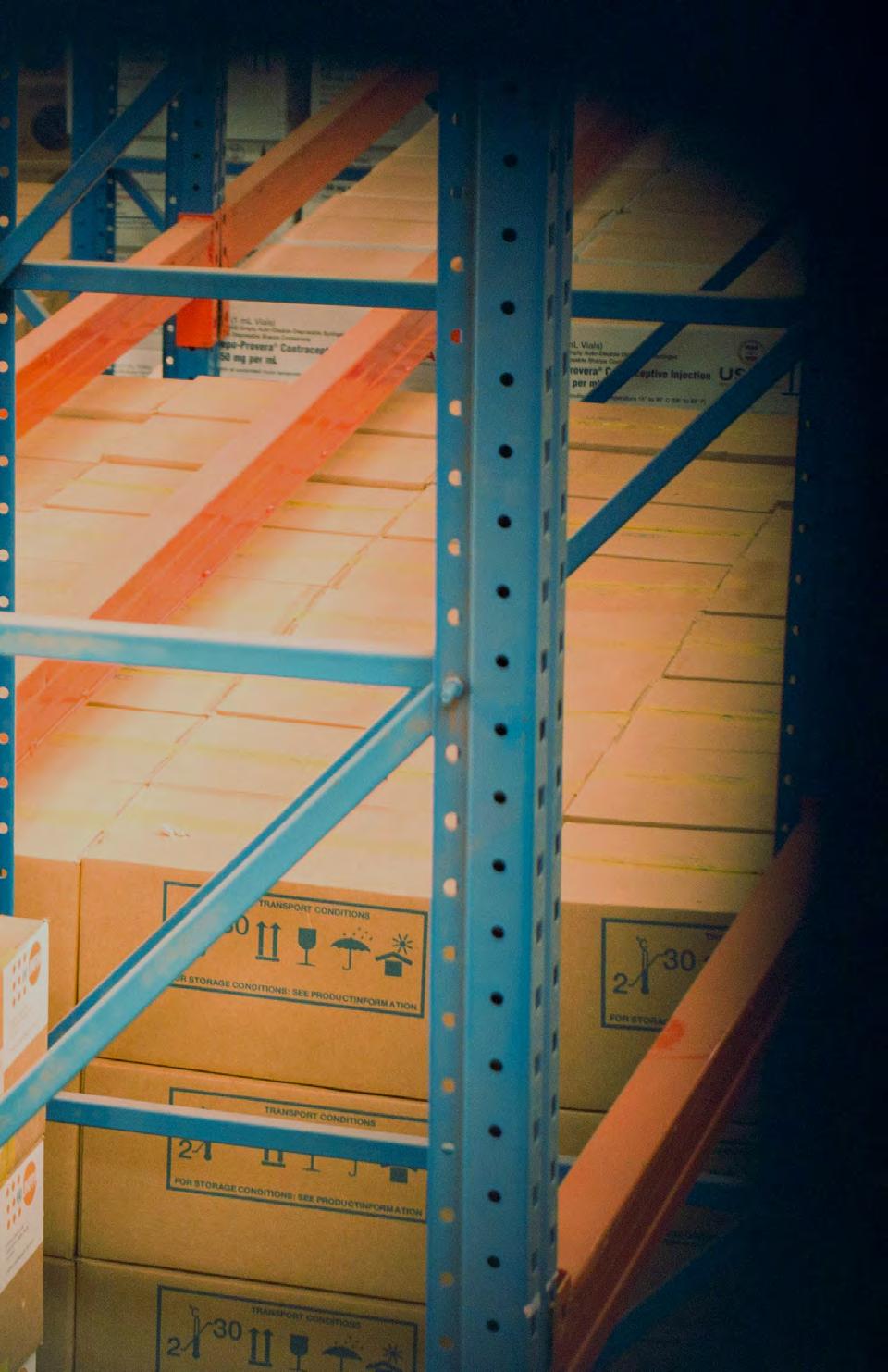
The Aftermarket Angola comprises Civiparts Angola, which distributes parts and workshop equipment for trucks and buses, and OneDrive Angola, responsible for retailing parts for light vehicles in this market. The Aftermarket Angola had a year with different rhythms between the first and second semesters. In the latter, as we previously mentioned, the Angolan market was heavily affected by currency devaluation. Faced with this situation, the company experienced a decrease in sales compared to the same period last year, by -32.7%, and in EBITDA by -72.0%, reaching an absolute value of 796 thousand Euros for this latter indicator.
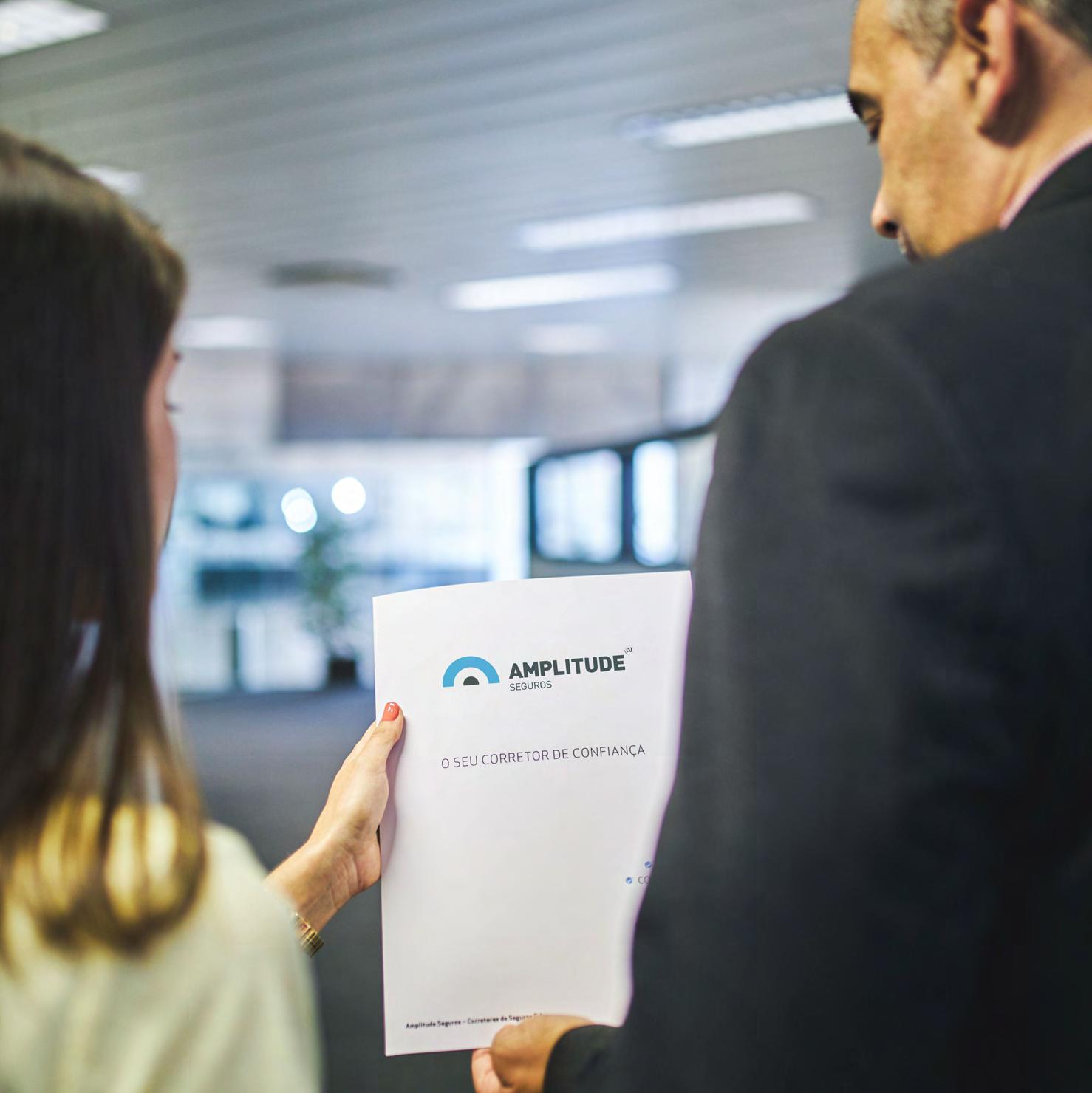
In 2023, Nors Ventures presented an absolute EBITDA of 2.1 Million Euros. The year was marked by the positive evolution of Amplitude's results, which showed an EBITDA 8.4% higher than the corresponding period. However, this result was not enough to offset the decline in Sotkon and Vitrum's results, which showed EBITDA variations of -4.4% and -220.4%, respectively.
Sotkon is a company dedicated to the design, manufacturing, and sale of modular systems for recycling and collection of urban solid waste, primarily through underground containers. The company operates in various markets, with a notable presence in Portugal, Spain, and France.
In 2023, Sotkon made a strong commitment to its commercial activities, expanding its sales in markets such as Croatia, Georgia, and Greece by enlarging its distribution network with reputable partners in the sector.
This execution of strategy consolidates the company's international growth strategy.
Financially, Sotkon performed well in 2023, with its turnover exceeding €10.5 million (a 3.9% increase compared to the previous year) and an EBITDA of €1.96 million. The year was marked by continued inflation, which impacted the expense structure. However, a 3 percentage point increase in gross margin partially offset this impact, contributing to an EBITDA close to the previous year's level.
With a view to the sustainability of its growth, Sotkon will continue to invest actively in research and development, evaluating new opportunities for collaboration with entities in the scientific and technological sector. It will also focus on activities that promote its products and the visibility of the Sotkon brand in markets of strategic priority, in particular Portugal, Spain, France and Eastern Europe.

Amplitude Insurance is an insurance and risk broker that operates in various segments and sectors of the economy.
In 2023, the company continued to strengthen its position in the Insurance Brokers segment, presenting a turnover of €1.7 million (+16,1% compared to 2022) - growth supported by the acquisition of new clients and the increase in variable commissions related to the quality of the management of the insurance portfolio.
Sales growth translated into a 8,4% growth in Amplitude's EBITDAexcellent performance for the company after a 23,2% growth in 2022.
Amplitude will maintain its strategy of organic growth, always keeping in mind its role as the Nors Group's insurance and risk consultant, while leveraging the business opportunities generated by the sale of complementary services.
Vitrum is positioned in the Angolan market as a company specialised in construction glass and production and application of vinyl projects.
In 2023, Vitrum experienced a decline in turnover of 45.9% compared to 2022, attributed to the challenges faced in the Angolan market, as explained earlier. The decrease in activity had a direct impact on the absolute EBITDA for the year, which ended negative at 517 thousand euros.
Following the strategy outlined by the Nors Group, it was decided to cease Vitrum's operations at the end of 2023.

3.3. risks and uncertainties

Our presence and international dimension is inherent to a set of risks that we quickly seek to identify and explore in order to mitigate their impact on the organisation. These can be characterised as endogenous, when related to quality policies, human resources or financing, or exogenous, encompassing factors such as exchange rate variation, regulation, political instability or economic evolution. Thus, the year 2023 was marked by the risks presented below.

Exposure to default risk correlates with the commercial and operational activity of Nors' companies. In order to ensure its management, Nors has a specific area, governed by defined procedures and mechanisms for collecting financial and qualitative information. It is in the wake of this scenario that the assessment of debtors takes place, in compliance with their obligations, as well as the management of customer accounts and respective collection.
The fact that the majority of our operations are international exposes us to the possibility of registering gains or losses resulting from variations in the exchange rate between the different currencies in which we operate. This risk, which has an impact on shareholders' equity, earnings and cash flow, affects the operational view and the measurement of the capital invested in foreign subsidiaries with a currency other than the Euro. Occasionally, in order to mitigate this impact, foreign exchange forwards are contracted, namely in commercial transactions where the purchase and sale currencies are different, and financing instruments in a currency other than the functional currency, in order to implement a natural hedge with monetary balances in the same currency. In the scope of exchange rate risk management on equity, we seek to opt, whenever possible, for natural hedging strategies, without resorting to complex financial instruments.
Although part of our structured debt is contracted at a fixed rate, the interest rate risk opens the possibility of fluctuations in the amount of financial charges borne by Nors, related to borrowings in the countries where we operate. However, with a wide presence over several markets and different inherent economic environments, we obtain a financing and investment portfolio that is less sensitive to interest rate increases affecting certain countries. We use this geographical dispersion as a means of maintaining diversified sources of external financing with different interest rates, mitigating the risk of sudden increases in interest rates.
The oil price variation affects the economy of some markets where we are present, becoming a risk indicator, namely in the Angolan market and, to a lesser extent, in the province of Alberta, Canada.
The impact of the oil sector on the Angolan economy has a decisive influence on the country's economic performance, affecting the various economic agents in a direct or indirect manner - from the State to the corporate layer, to the individual consumer, including families.
Nors' main objective is to maintain the capacity to ensure the continuity of operations, providing adequate returns to shareholders and the corresponding benefits to the company's other stakeholders. In order to make this objective achievable, it is fundamental to carefully manage the capital employed in the business, establishing an optimal capital structure and ensuring the necessary reduction of its cost. With the purpose of maintaining or adjusting the
As observed in the recent past, when there are significant drops in the price of oil on international markets, the impact on the Angolan economy is felt directly and expressively - tax revenues and the stock of foreign currency fall, leading to a contraction of imports and local trade.
More recently, The decrease in the price of this commodity has impacted the liquidity of the Angolan economy, reflecting in the devaluation of the currency.

capital structure considered adequate, the Board of Directors can propose to the Shareholders' General Meeting the measures it considers necessary.
Simultaneously, we seek to maintain a level of equity capital that is adequate to the characteristics of the core business, preserving a vision of continuity and expansion, guaranteeing shareholders a return on equity that is aligned with their expectations.
In other markets, such as the province of Alberta in Canada, exposure to the exploration of oil correlates the levels of investment with the price of this commodity, reducing it at times of decline and increasing it at times of inflation, opening the door to fluctuations in the activity of the Group's operations in these markets.
The liquidity risk is the possibility of a lack of capacity to settle or meet obligations within the defined timeframes and at a reasonable price - the so-called liquidity risk. In this context, it becomes urgent to achieve three fundamental objectives: liquidity, security and financial efficiency. Liquidity allows permanent, efficient and sufficient access to funds, in order to meet current payments on their due dates, as well as possible requests for funds within the defined deadlines. Security, on the other hand, guarantees that the probability of default in the reimbursement of any application of funds is minimised.
Finally, financial efficiency ensures that Nors and our business units/management structures maximise the value created and minimise the opportunity cost of holding excess liquidity in the short term. The responsibility for managing liquidity risk lies with Nors' Finance Department. However,
to ensure the existence of liquidity, both within the Group and in the various business units, there are working capital management parameters that allow, in a safe and efficient manner, to maximise the return obtained and minimise the associated opportunity costs. At Nors, all surplus liquidity is used to repay short-term debt: for this, the worst case scenario is taken into account for the maturity analysis of each of the liability financial instruments, minimising the liquidity risk associated with these obligations.
In the context of uncertainty related to the war in Ukraine and the increase in interest rates, in order to mitigate undesirable effects, such as reduction of its turnover, constraints in supply or significant increase in prices, Nors implemented several measures to maintain credit lines available, the reduction of gross debt and careful analysis of its investment plan for 2024.

The Board of Directors of the Group believes that, given its financial and liquidity situation, Nors will overcome any negative impacts that may arise from developments at international level, without calling into question the going concern principle applied in the preparation of these financial statements.
On December 31st , 2023, we reached a negative net bank debt position, i.e. a net cash position of 51,9 million euros. This value compares to a negative net debt position in 2022, meaning a record of available funds amounting to 7.9 million euros.
These values are divided among current and non-current borrowings, cash, and bank deposits contracted with various institutions.
3.4. 2024 in perspective

The year of 2023 was marked by the context of geopolitical tensions, notably the continuation of the war in Ukraine caused by the Russian invasion and the conflict in the Middle East between Israel and the Islamist group Hamas, the consequences of which continue to reflect on the global macroeconomic dynamics.
Additionally, the measures taken during the pandemic period, combined with the increasing challenges of war, triggered a wave of global inflation between late 2021 and 2023, leading to the implementation of restrictive monetary policies.
Facing this context, 2023 was a year in which economic growth exceeded expectations despite the predicted adversities.
2023 turned out to be a year of consolidation for the Nors Group, reflecting a result in line with 2022, which was the best year in its 90-year history.
For 2024, the Group anticipates a challenging year, with distinct situations in the various geographies where it operates. Nevertheless, it is expected that the Group will continue its strategy of consolidating its core business through the acquisition of new ventures.
In Portugal, it is estimated that the truck market, after the strong growth period in 2023, will present a scenario of stabilization with a positive trend. Therefore, a year of consolidating the results of 2023 is anticipated.
However, in pursuit of the strategic objective of concentrating efforts on the core activity, the decision was made to divest from the automotive retail business in this geography. This operation will be completed with the sale of the share capital of Auto Sueco Automóveis, with the operation expected to be concluded by the end of the first semester of 2024.
Brazil presents itself as a geography in which the Group recognises high potential and where it has been strengthening its presence. In the agricultural sector, the group acquired in March 2023, Agrofito – a distributor of Case IH agricultural equipment in the state of Mato Grosso – reinforcing its presence in a sector identified as strategic.

Additionally, in November 2023, Nors Centro Oeste was integrated following the acquisition of the VCE and SDI G equipment distribution operation in the states of Mato Grosso and Mato Grosso do Sul.
Consequently, the Group enters 2024 with a more diversified presence in its operating area and anticipates growth in its business within this market.
In Canada, a scenario of stabilization is anticipated for 2024, evidenced by the outlook for maintaining the General Purpose Equipment (GPE) market.
Considering the success of the Group’s investment in this geography, on March 1, 2024, it was completed the acquisition of Great West Equipment, a distributor of construction and forestry equipment in the Province of British Columbia and in the Yukon Territory, which alongside Strongco, encompass approximately 90% of Volvo Construction Equipment’s activity in this country.
Lastly, the African markets present distinct scenarios for the year 2024. While businesses located in Southern Africa show a growth outlook supported by the performance of the mining sector and the export of other natural resources, the Angolan market anticipates an extremely challenging year due to the imperative need to meet the country’s budgetary goals and external debt service.
The Nors Group, through its corporate management, actively seeks to anticipate impacts and prepare contingency plans to mitigate risks and undesirable effects.
In this regard, a significant exposure to foreign exchange risk in Angola has been identified and a plan has already been initiated, the impacts of which are conservatively reflected in the financial statements and projections for 2024.
We approach the year 2024 with optimism, driven by the work done to strengthen the Group’s financial position and the clear definition of a strategic plan that will guide our actions.
The Nors Management is firmly confident in the continuity of operations, ensuring that the assumptions used in preparing the consolidated financial statements remain appropriate.
The Board of Nors is responsible for maintaining an appropriate internal control system. The company’s internal control over financial reporting is designed to provide reasonable assurance of the reliability of the information and the preparation of the financial statements for internal and external purposes, in accordance with prudent criteria determined by top management and in compliance with the international accounting standards and principles issued by the IASB.
The company’s internal control includes policies and processes that:
i. relate to maintaining records that provide reasonable detail in order to accurately and appropriately reflect the transactions and changes in the company’s assets, minimising its equity risk;
ii. provide a reasonable guarantee that the transactions are recorded as necessary to enable the financial statements to be prepared in compliance with IFRS, enabling uniform accounting of the financial information obtained from the different Nors companies in different countries;
iii. ensure, with a high degree of confidence, that the company’s receivables and expenditure are solely realised upon authorisation from the management and the board;
iv. provide reasonable security with regard to the timely prevention and detection of the inappropriate use of Nors ’ assets.
Due to the inherent limitations, all and any internal control over the financial reports may not prevent errors from being detected. In addition, projections of any assessment of efficacy in the future are subject to the risk that the controls may become inadequate due to changes in the conditions or that the degree of compliance with the policies and procedures may deteriorate.
Porto, April 10, 2024
the board of directors
Tomás Jervell
Álvaro Nascimento
Álvaro Neto
Ana Peneda
Artur Santos Silva
Francisco Jervell
Francisco Ramos
Joana Jervell
Jorge Guimarães
José Jensen Leite de Faria
Júlio Rodrigues
Luís Jervell
Paulo Jervell
Pedro Leite Faria
Rui Miranda


4.1. consolidated financial statements
consolidated statement of income for the years ended on December 31, 2023 and 2022
the certified accountant
Lúcia Mendonça the board of directors
Tomás Jervell
Álvaro Nascimento
Álvaro Neto
Ana Peneda
Artur Santos Silva
Francisco Jervell
Francisco Ramos
Joana Jervell
Jorge Guimarães
José Jensen Leite de Faria
Júlio Rodrigues
Luís Jervell
Paulo Jervell
Pedro Leite Faria
Rui Miranda
consolidated statement of comprehensive income for the years ended on December 31, 2023 and 2022
the certified accountant
Lúcia Mendonça the board of directors
Tomás Jervell
Álvaro Nascimento
Álvaro Neto
Ana Peneda
Artur Santos Silva
Francisco Jervell
Francisco Ramos
Joana Jervell
Jorge Guimarães
José Jensen Leite de Faria
Júlio Rodrigues
Luís Jervell
Paulo Jervell
Pedro Leite Faria
Rui Miranda
consolidated statement of the financial position at December 31, 2023 and 2022
the certified accountant
Lúcia Mendonça
the board of directors
Tomás Jervell
Álvaro Nascimento
Álvaro Neto
Ana Peneda
Artur Santos Silva
Francisco Jervell
Francisco Ramos
Joana Jervell
Jorge Guimarães
José Jensen Leite de Faria
Júlio Rodrigues
Luís Jervell
Paulo Jervell
Pedro Leite Faria
Rui Miranda
consolidated statement of changes in equity for the years ended December 31, 2023 and 2022
the certified accountant
Lúcia Mendonça the board of directors
Tomás Jervell
Álvaro Nascimento
Álvaro Neto
Ana Peneda
Artur Santos Silva
Francisco Jervell
Francisco Ramos
Joana Jervell
Jorge Guimarães
José Jensen Leite de Faria
Júlio Rodrigues
Luís Jervell
Paulo Jervell
Pedro Leite Faria
Rui Miranda
consolidated statement of cash flow for the years ended December 31, 2023 and 2022 the certified accountant
Lúcia Mendonça the board of directors
Tomás Jervell
Álvaro Nascimento
Álvaro Neto
Ana Peneda
Artur Santos Silva
Francisco Jervell
Francisco Ramos
Joana Jervell
Jorge Guimarães
José Jensen Leite de Faria
Júlio Rodrigues
Luís Jervell
Paulo Jervell
Pedro Leite Faria
Rui Miranda
4.2. annex to the financial statements
Nors, S.A. is a public limited company whose origins date back to 1949, with head office in Porto, Portugal. The company and its subsidiaries are mainly engaged in trading in vehicles, namely cars, trucks, buses, machines and other industrial equipment, their components and workshop services. Nors corresponds to the corporate and institutional designation as a group of companies, with specific commercial designations according to each company's business. The Group's business is carried out with special relevance in Portugal, Angola, Brazil and Canada, directly, and also in the United States of America, Central Europe and Turkey, through joint ventures.
Company: NORS, S.A.
Head Office: Rua Manuel Pinto de Azevedo, n.º711, 1.º, Porto, Portugal
Legal Nature: Public Limited Company
Share Capital: €30,000,000
N.I.P.C.: 500 038 015
1.1. basis for presentation
1.1.1. approval of the financial statements
These consolidated financial statements were approved by the Board of Directors on April 10, 2024. Additionally, the accompanying consolidated financial statements as of December 31, 2023 are pending approval by the General Meeting of Shareholders. However, the Board of Directors of Nors believes that they will be approved without changes.
1.1.2. accounting reference
The consolidated financial statements for the year ended December 31, 2023 have been prepared in accordance with International Financial Reporting Standards (IFRS) and International Accounting Standards (IAS) issued by the International Accounting Standards Board ("IASB") and interpretations issued by the International Financial Reporting Committee ("SIC"), effective January 1, 2023 and as adopted by the European Union.
The consolidated financial statements of the Nors Group were prepared using the financial and accounting information of the companies included in the consolidation. To do so, the historic cost principle was followed and, for some financial instruments, the fair value principle, based on a going concern basis (notes 7.1. and 8.)
The consolidated financial statements are comparable in all material respects with the previous year.
1.1.5.1. subsidiaries
Financial holdings in companies in which Nors has control were included in the attached consolidated financial statements by the full consolidation method. Nors is understood to have control when the company has power over the affiliate or is exposed to or has rights over the variable returns of the company in question. This power arises directly form (e.g. by voting rights at general meetings and/or board of directors) or in a complex form (e.g. through contractual agreements with third parties). The ability to affect returns is determined by the effective power that Nors holds in the investee without the need to ally itself with third parties.
The net income and other items of other comprehensive income and equity of controlled companies corresponding to third party participation in them (non-controlling interests) are presented in the consolidated statement of financial position and consolidated statement of other comprehensive income under specific items of "Non-controlling interests". The Nors companies included in the consolidated financial statements are detailed in note 10.1.
Accrued losses of a subsidiary are attributed to non-controlling interests, in the proportions held, which may imply the recognition of negative non-controlling interests. In business combinations prior to 2010 the purchase method is followed. The assets and liabilities of each subsidiary are identified at their fair value at the acquisition date. Any excess of the cost of acquisition over the fair value of the net assets and liabilities acquired is recognised as goodwill (note 3.1.).
If the difference between the acquisition cost and the fair value of the net assets and liabilities acquired is negative, it is recognised as a gain in the income statement for the year, after new confirmation of the fair value attributed. Non-controlling interests are presented in proportion to the fair value of the identified assets and liabilities.
For business combinations occurring after January 1, 2010, Nors has applied the revised IFRS 3. Under this revised standard, the purchase method continues to be applied to business combinations, with some significant changes:
a. all amounts comprising the purchase price are valued at fair value, there being the option on a transaction-by-transaction basis to measure the "non-controlling interests" at the proportion of the value of the net assets of the acquired entity or at the fair value of the assets and liabilities acquired.
b. all costs associated with the acquisition are recorded as expenses. .
The revised IAS 27 has also been applied since January 1, 2010. This requires that all transactions with "non-controlling interests" be recorded in Equity, when there is no change in the control over the Entity, and goodwill or gains or losses are not recorded. When there is loss of control over the entity, any remaining interest in the entity is again measured at fair value, and a gain or loss is recognised in the results for the year.
The results of subsidiaries acquired or sold during the period are included in the income statement from the date of acquisition of control or until the date of loss of control.
Where necessary, adjustments are made to the financial statements of subsidiaries to bring their accounting policies in line with those used by Nors. Transactions, margins generated between Nors companies, balances and dividends distributed between Nors companies are eliminated in the consolidation process.
In situations where Nors has, in substance, control over other entities created for a specific purpose, even if it does not directly hold equity interests in these entities, they are consolidated using the full consolidation method.
1.1.5.2. associates and joint ventures
Financial investments in associated companies and joint ventures (companies where Nors exercises significant influence, but does not have control over them by participating in the companies' financial and operating decisions independently - usually investments representing between 20% and 50% of a company's capital and/or for which there are shareholder agreements) are recorded using the equity method.
According to the equity method, financial investments are initially recorded at cost and
are adjusted annually by the amount corresponding to the group's share in the variations in equity (including the net income) of the associates against gains or losses for the year, plus the dividends received and possible gains or losses generated in operations with other group companies, which affect the value of the group’s assets.
The differences between the acquisition cost and the fair value of the associate’s identifiable assets and liabilities at the date of acquisition, if positive, are recognised as Goodwill. If those differences are negative, they are recorded as a gain for the period in the item “Other Income and Gains” in the income statement, after reconfirming the attributed fair value.
An evaluation is made of the investments in associates when there are signs that the asset might be impaired, and the impairment losses that are confirmed are recorded as an expense. When impairment losses recognised in previous periods no longer exist, they are reversed.
When Nors ’ share in the accrued loses of the associate company exceeds the book value of the financial investment, the investment is reported at nil whilst the equity of the affiliate is not positive. An exception to this is when Nors has taken on commitments with the associate, in which case a provision is recorded to meet those obligations
Unrealised gains in transactions with these associates are eliminated in proportion to Nors ’ interest in them, to offset the financial investment in it.
Unrealised losses are eliminated in a similar manner, but only up to the point where the asset transferred has no sign of impairment.
Whenever necessary, adjustments to the financial statements of the associates are made to align their accounting policies with those adopted by Nors
1.1.5.3. concentration of business activities
When recording concentration transactions involving entities under the Group's control, assets and liabilities are valued at their book value, with no impact on results.
1.1.6. presentation currency and transactions in foreign currency
1.1.6.1. presentation currency
The consolidated financial statements presented are prepared in euros and presented in thousands of euros. .
Assets and liabilities expressed in the financial statements of foreign companies (companies that do not use the euro as their working currency) are converted into Euros using the exchange rates in force on the reference date of the consolidated statement of financial position. Income and expenses, as well as cash flows, are converted into Euros using the average foreign exchange rates ascertained during the financial year. The foreign exchange difference generated after January 1 is recorded in equity in the item “Other Reserves”. Accrued foreign exchange differences generated up to January 1,2009 (date of transition to IFRS) were cancelled in the equity item “Other reserves”.
Whenever a foreign entity is sold or liquidated, the accrued foreign exchange difference is recognised in the income statement as a gain or a loss on the disposal or on the liquidation.
In the 2023 and 2022 financial years, the rates used for converting Euros in the accounts of consolidated foreign entities were as follows:
standard
Amendments to IAS 1 Presentation of Financial Statements and IFRS Practice Statement 2: Disclosure of Accounting policies
Amendments to IAS 8 Accounting policies, Changes in Accounting Estimates and Errors: Definition of Accounting Estimates
Amendments to IAS 12: deferred tax related to assets and liabilities arising from a single transaction
IFRS 17 – Insurance Contracts
Amendments to IFRS 17 - Insurance contracts: Initial Application of IFRS 17 and IFRS 9 – Comparative Information
Standards and amendments endorsed by the European Union
Following feedback that more guidance was needed to help companies decide what accounting policy information should be disclosed, the Board has today issued amendments to IAS 1 Presentation of Financial Statements and IFRS Practice Statement 2 Making Materiality Judgements. The key amendments to IAS 1 include: i) requiring companies to disclose their material accounting policy information rather than their significant accounting policies; clarifying that accounting policies related to immaterial transactions, other events or conditions are themselves immaterial and as such need not be disclosed; and clarifying that not all accounting policies that relate to material transactions, other events or conditions are themselves material to a company’s financial statements. The Board also amended IFRS Practice Statement 2 to include guidance and two additional examples on the application of materiality to accounting policy disclosures. The amendments are consistent with the refined definition of material: “Accounting policy information is material if, when considered together with other information included in an entity’s financial statements, it can reasonably be expected to influence decisions that the primary users of general purpose financial statements make on the basis of those financial statements”.
Implementing these changes didn't have a significant impact on the disclosures presented by Nors Group in the 2023 disclosures, given the restructuring carried out back in 2022.
The IASB has issued amendments to IAS 8 Accounting Policies, Changes in Accounting Estimates and Errors to clarify how companies should distinguish changes in accounting policies from changes in accounting estimates, with a primary focus on the definition of and clarifications on accounting estimates. The amendments introduce a new definition for accounting estimates: clarifying that they are monetary amounts in the financial statements that are subject to measurement uncertainty. The amendments also clarify the relationship between accounting policies and accounting estimates by specifying that a company develops an accounting estimate to achieve the objective set out by an accounting policy. The effects of changes in such inputs or measurement techniques are changes in accounting estimates. The amendments are effective for periods beginning on or after 1 January 2023 and will apply prospectively to changes in accounting estimates and changes in accounting policies occurring on or after the beginning of the first annual reporting period in which the company applies the amendments. No significant changes were recorded in the adoption of this amendment.
The IASB (‘the Board’) issued amendments to IAS 12 - ‘Income Taxes’, on 7 May 2021. The amendments require companies to recognise deferred tax on transactions that, on initial recognition, give rise to equal amounts of taxable and deductible temporary differences. In specified circumstances, companies are exempt from recognising deferred tax when they recognise assets or liabilities for the first time. Previously, there had been some uncertainty about whether the exemption applied to transactions such as leases and decommissioning obligations—transactions for which companies recognise both an asset and a liability. The amendments clarify that the exemption does not apply and that companies are required to recognise deferred tax on such transactions. The aim of the amendments is to reduce diversity in the reporting of deferred tax on leases and decommissioning obligations. No significant changes were recorded in the adoption of this amendment.
The IASB issued on 18 May 2017 a standard that superseded IFRS 4 and completely reformed the treatment of insurance contracts. The standard introduces significant changes to the way in which the performance of insurance contracts is measured and presented with various impacts also at the level of the financial position. The standard is not applicable to Nors Group.
The International Accounting Standards Board (IASB) has issued a narrow-scope amendment to the transition requirements in IFRS 17 - Insurance Contracts, providing insurers with an option aimed at improving the usefulness of information to investors on initial application of the new Standard. The amendment does not affect any other requirements in IFRS 17. IFRS 17 and IFRS 9 Financial Instruments have different transition requirements. For some insurers, these differences can cause temporary accounting mismatches between financial assets and insurance contract liabilities in the comparative information they present in their financial statements when applying IFRS 17 and IFRS 9 for the first time. The amendment helps insurers to avoid these temporary accounting mismatches and, therefore, improve the usefulness of comparative information for investors.
The standard is not applicable to Nors Group.
January 1, 2023
January 1, 2023
January 1, 2023
January 1, 2023
January 1, 2023
Amendments to IAS 12 – International Tax Reform – Pillar Two Model Rules
On 23 May 2023, the IASB issued International Tax Reform—Pillar Two Model Rules – Amendments to IAS 12 to clarify the application of IAS 12 Income Taxes to income taxes arising from tax law enacted or substantively enacted to implement the OECD Pillar Two model rules.
The amendments introduce:
- A mandatory temporary exception to the accounting for deferred taxes arising from the jurisdictional implementation of the Pillar Two model rules; and - Disclosure requirements for affected entities to help users of the financial statements better understand an entity’s exposure to Pillar Two income taxes arising from that legislation, particularly before its effective date.
- The mandatory temporary exception – the use of which is required to be disclosed – applies immediately. The remaining disclosure requirements apply for annual reporting periods beginning on or after 1 January 2023.
The group falls within the scope of the BEPS 2.0 Pillar Two Global Anti-Base Erosion Model Rules (GloBE MR), as it is a multinational enterprise group with annual revenues equal to or exceeding EUR 750,000,000 in at least two of the four fiscal years immediately preceding the 2024 fiscal year.
As the Pillar Two legislation has not yet been transposed into Portuguese law as of the reporting date (Directive no. 2022/2523 of 14 December 2023 should have been transposed by 31 December 2023), and since it will only become effective from 1 January 2024, the group, as of 31 December 2023, has no current tax exposure related to the adoption of Pillar Two. It is also important to note that the group applies the exception to the recognition and disclosure of information on deferred tax assets and liabilities related to income taxes under Pillar Two, as provided in the amendments to IAS 12 issued in May 2023.
Despite this, the group is assessing its exposure to Pillar Two legislation for when it comes into effect, taking into account the potential obligation to pay an additional tax ("top-up tax") corresponding to the difference between the effective GloBE tax rate per jurisdiction and the minimum rate of 15%. Although in some jurisdictions the average effective rate may be below 15%, due to the potential application of transitional safe harbours and specific adjustments provided for in Pillar Two legislation, which result in different effective tax rates compared to those calculated according to paragraph 86 of IAS 12 (which determines that the average effective rate is the tax expense [income] divided by the accounting profit), the group considers, based on the analyses carried out, that it is not exposed to the payment of any material additional tax.
Due to the complexities in applying the legislation and calculating the GloBE income, the quantitative impact of both European and forthcoming national legislation is not yet reasonably estimable. The group is currently working to ensure the correct implementation of this legislation.
Nonetheless, based on the analyses conducted so far, a material impact on the payment of the additional tax is not anticipated.
Standards and amendments endorsed by the European Union that the group opted not to apply in advance
January 1, 2023
Clarification requirements for classifying liabilities as current or non-current (amendments to IAS 1 – Presentation of Financial Statements)
IASB issued on 23 January 2020 narrow-scope amendments to IAS 1 Presentation of Financial Statements to clarify how to classify debt and other liabilities as current or non-current. The amendments clarify an IAS 1 criteria for classifying a liability as non-current: the requirement for an entity to have the right to defer the liability’s settlement at least 12 months after the reporting period.
The amendments aim to:
a. specify that an entity's right to defer settlement must exist at the end of the reporting period and have substance;
b. clarify that covenants with which the company must comply after the reporting date (i.e., future covenants) do not affect a liability’s classification at the reporting date. However, when non-current liabilities are subject to future covenants, companies will now need to disclose information to help users understand the risk that those liabilities could become repayable within 12 months after the reporting date; and
c. clarify the requirements to classify the liabilities that an entity will settle, or may settle, by issuing its own equity instruments (e.g. convertible debt). This amendment is effective for periods starting on 1 January 2024. The implementation of this amendment will not have significant impacts on the financial statements of the group.
January 1, 2024
Lease liability in a sale-and-leaseback (amendments to IFRS 16 – Leases)
The IASB issued amendments to IFRS 16 - Leases in September 2022 that introduce a new accounting model for variable payments in a sale and leaseback transaction.
The amendments confirm the following:
- On initial recognition, the seller-lessee includes variable lease payments when it measures a lease liability arising from a sale-and-leaseback transaction.
- After initial recognition, the seller-lessee applies the general requirements for subsequent accounting of the lease liability such that it recognises no gain or loss relating to the right of use it retains. A seller-lessee may adopt different approaches that satisfy the new requirements on subsequent measurement.
The amendments are effective for annual reporting periods beginning on or after 1 January 2024, with earlier application permitted. Under IAS 8 - Accounting Policies, Changes in Accounting Estimates and Errors, a sellerlessee will need to apply the amendments retrospectively to sale-and-leaseback transactions entered into or after the date of initial application of IFRS 16. This means that it will need to identify and re-examine sale-andleaseback transactions entered into since implementation of IFRS 16 in 2019, and potentially restate those that included variable lease payments.
The implementation of this amendment will not have significant impacts on the group's financial statements.
Standards and amendments not yet endorsed by the European Union
January 1, 2024
Amendments to IAS 7 Statement of Cash Flows and IFRS 7 Financial Instruments: Disclosures –Supplier Finance Arrangements
On 25 May 2023, the International Accounting Standards Board (IASB) published Supplier Finance Arrangements with amendments to IAS 7 Statement of Cash Flows and IFRS 7 Financial Instruments Disclosures. The amendments relate to disclosure requirements in connection with supplier financing arrangements - also known as supply chain financing, financing of trade payables or reverse factoring arrangements. The new requirements supplement those already included in IFRS standards and include disclosures about:
- Terms and conditions of supplier financing arrangements;
- The amounts of the liabilities that are the subject of such agreements, for which part of them the suppliers have already received payments from the financiers, and under which item these liabilities are shown in the balance sheet;
- The ranges of due dates; and
- Information on liquidity risk.
The amendments are effective for annual periods beginning on or after 1 January 2024.
The group is currently assessing the impacts that this amendment will have on its financial statements.
On 15 August 2023, the International Accounting Standards Board (the IASB or Board) issued Lack of Exchangeability (Amendments to IAS 21 The Effects of Changes in Foreign Exchange Rates) (the amendments).
The amendments clarify how an entity should assess whether a currency is exchangeable and how it should determine a spot exchange rate when exchangeability is lacking.
January 1, 2024
Amendments to IAS 21 The Effects of Changes in Foreign Exchange Rates: Lack of Exchangeability
A currency is exchangeable into another currency when a company is able to exchange that currency for the other currency at the measurement date and for a specified purpose. When a currency is not exchangeable, a company needs to estimate a spot rate. Under the amendments, companies will need to provide new disclosures to help users assess the impact of using an estimated exchange rate on the financial statements.
These disclosures might include:
- a natureza e os impactos financeiros da moeda não ser convertível;
- the spot exchange rate used;
- the estimation process; and
- risks to the company because the currency is not exchangeable.
The amendments apply for annual reporting periods beginning on or after 1 January 2025.
Earlier application is permitted.
The group is currently assessing the impacts that this amendment will have on its financial statements.
The adoption of the amendments did not cause any material impact on the Group's consolidated financial statements, nor are any material impacts expected from the future application of the applicable standards.
During the year ended December 31, 2023 there were no changes in accounting policies.
January 1, 2025
The preparation of consolidated financial statements requires the Group to make estimates and judgments that affect amounts and disclosures at the date of the consolidated financial position. To this end, the Board of Directors used its best knowledge and experience of past and/or current events in making certain assumptions as to future events.
The most significant estimates and judgments are presented below:
estimates and judgments notes
Actuarial assumptions
Recoverability of goodwill
Recoverability of property, plant and equipment
Interest rates associated to assets and lease liabilities
Recoverability of inventories
Recoverability of customer balances
Recognition of provisions
Determination of the fair value of acquired assets and liabilities
The estimates and underlying assumptions were determined based on the best knowledge existing at the date of approval of the financial statements of the events and transactions in progress, as well as the experience of past and/or current events. However, situations may occur in subsequent periods that were not foreseeable at the date of approval of the financial statements and were not considered in these estimates.
Changes to the estimates that occur after the date of the financial statements will be corrected prospectively. For this reason and given the degree of uncertainty associated, the actual results of the transactions in question may differ from the corresponding estimates.
Changes to the estimates used by the management that occur after the date of these consolidated financial statements, will be recognised in net income, in accordance with IAS 8, using a prospective methodology.
2.4. Employee benefits
3.1. Goodwill
3.3. Tangible fixed assets
3.5. Assets under right of use
4.1. Inventories
4.2.1. Customers
9.1. Provisions
10.2. Changes in the consolidation perimeter

The Group presents operating segments based on internally produced management information.
In accordance with IFRS 8, an operating segment corresponds to a component of the Group:
a. that engages in business activities from which it may earn revenues and incur expenses (including revenues and expenses related to transactions with other components of the same entity);
b. whose operating results are regularly reviewed by the entity's chief operating decision maker to make decisions about resources to be allocated to the segment and assess its performance;
c. and for which separate financial information is available.
The Group's main business activities are the vehicle trade, namely, cars, trucks, buses, machinery and other industrial equipments, their components and repair services, developing its activity focusing on 4 business areas:
• Mobility: represents vehicles (trucks, buses, cars, generators and marine and industrial engines) where the Auto Sueco, Auto Sueco Automóveis, Galius and KinLai brands are integrated;
• Off-Road: represents the business of distribution of construction, industrial and agricultural equipment, comprising the brands Agro New, Auto Maquinaria, Strongco and Ascendum;
• Aftermarket: represents the distribution and retail business of multibrand parts for cars, trucks and buses where the brands Civiparts, AS Parts and OneDrive are integrated;
• Ventures: represents complementary businesses and solutions, including insurance mediation, environmental solutions, marketing of construction glass. It includes the brands Sotkon, Amplitude Seguros and Vitrum.
Thus, from the standpoint of segment reporting, in addition to the segments mentioned above, the Group classifies as "Other, eliminations and adjustments" the remainder of entities associated with holding companies, consolidation adjustments and elimination of movements between related parties.
Accounting policies
Net sales refer to revenues from sales and services rendered, and these are recognised when the responsibility is transferred from the Nors Group to the customer.
A sale is recognised when the responsibility is transferred to the customer and usually occurs upon delivery to the customer. The value of discounts, returns and the variable sales price were taken into account when recognizing sales for the year. In accordance with IFRS 15, revenue from sales and services is recognised according to the 5-step model:
1. Identification of a contract with the customer;
2. Identification of separate performance obligations in the contract;
3. Determining the transaction price;
4. Allocating the transaction price to the separate performance obligations;
5. Revenue recognition when the entity satisfies a performance obligation.
Step 1
There is a contract covered by IFRS 15 when:
• It has been approved
• It establishes rights and obligations of the parties
• It establishes payment terms
• There is commercial substance
• Receipt is probable
There is a contract combination when the contracts are entered into on the same date or on dates close to each other with the same customer, as long as the following criteria are met:
• Contracts are negotiated as a pack with a sole commercial objective; comercial;
• The value of the consideration to be paid in a contract depends on the price or performance of another contract;
• The goods or services promised in the contracts are a sole performance obligation.
Contract modifications are treated as separate contracts when there are new products/services at market price. Contract modifications are treated as part of the original contract when there are new products/services at prices different from the market or when there are new products/services that are not different from the original contract. In the first case the adjustment is prospective and in the second case it is cumulative (the adjustment to the values already realised affects the profit or loss for the year).
Performance obligations may be:
• A distinct product or service that may be used/sold separately;
• Different products or services only sold jointly;
• A set of different services provided over time (uniform pattern for transferring services within a period of time).
When a contract has an option to buy additional goods/services at no cost or with a discount, it is considered to have an additional performance obligation.
The variable price component is only considered if it is highly probable that there will be no reversal of income to be recognised in the future. When there is no such risk, the entity determines the most probable result or the expected result.
When there is a significant financial component, not charged to the customer at a market interest rate, the price is adjusted, except if:
• The period between the performance obligation and the payment is less than one year;
• The payment time depends on the customer;
• The payment deferral is not related to the customer’s financial needs;
• The payment time varies according to factors not controlled by the customer or the seller.
The discount rate used is:
• the customer’s discount rate: if the payment occurs after the performance obligations have been fulfilled;
• the seller’s discount rate: if the payment occurs before the performance obligations have been fulfilled.
The discounted value is recognised as revenue. Interest is recognised against receivables applying a discount rate on the amount owed. When there is no cash consideration, the non-monetary consideration received is measured according to the fair value of the non-monetary consideration received. If this is not possible to determine, the fair value of the products/services delivered is used.
Values payable to customers are recorded as follows:
• as a price reduction, if the sum paid is not related to any service to be incurred by the seller as a means of meeting the performance obligation;
• as an expense, if the sum paid is similar to other purchases of goods/ services made by the entity.
Step 4
The price is allocated to each identified performance obligation based on their relative prices.
The relative price (separate sale price) is estimated, if not directly observed, considering:
• Increased cost method;
• Market price of similar goods/services;
• Residual approach.
Discounts are allocated proportionally to all performance obligations. Specific performance obligations are attributed only if:
• The goods or services are sold separately;
• The goods or services are sold as a pack with a discount on a regular basis;
• The discount attributed to goods/services sold as a pack is similar to the discount in the contract under analysis.
The variable component is allocated proportionally to all performance obligations. It is attributed to specific performance obligations only if:
• The variable price component refers to specific goods/service.
Allocation of the variable component is consistent with the principle of allocating the contract price to the performance obligations.
Revenue is recognised: :
• On a specific date;
• Or over time.
Revenue is recognised when there is a transfer of control, which may occur when there is:
• Legal property ownership;
• Physical property;
• Acceptance by the customer;
• Right to receipt.
When revenue is recognised over time, the following are used:
• Output methods (units produced or delivered);
• Or input methods (costs incurred, time spent).
Revenue is measured according to the fair value of the consideration received. Revenue is recorded net of returns, write offs and similar situations. Revenue from service provision is recognised in accordance with the percentage of finishing or based on the contract period when the provision of services is not linked to the execution of specific activities, but to providing a continuous service.
The cost of these repairs includes the incorporated materials and labour, the final cost and concomitantly the price to be paid by the customers known only on the date of concluding the repairs, with the issue of the respective invoice
and delivery of the repaired item to the customer; it is also at that time that the respective revenue is recognised. During the repair period, the cost is considered in “Inventories - Works in Progress”.
Incremental costs from contracts are capitalised if the contract period is more than one year and a return is expected. Incremental costs are costs that would not be incurred if the contract were not obtained (such as commissions). Marketing costs and salaries of the commercial department are not incremental costs.
An entity is acting as a principal if:
• It is responsible for the services provided or the products delivered ;
• It retains the inventory risk;
• It has the liberty to establish prices and offer additional prices/services.
Revenue is recognised by the principal when the merchandise is sold by the agent to third parties. The agent accounts for the commission received as revenue.
A repurchase agreement is a contract where an entity sells an asset and has the obligation or the option to repurchase the asset at a later date. Repurchase agreements generally take three forms:
• obligation of an entity to repurchase the asset (forward);
• right of an entity to repurchase the asset (call option); and;
• obligation of an entity to repurchase the asset at the customer’s request (“put option”).
If an entity sells products and has the right (call option) or the obligation to repurchase (forward) at a lower price than the original price and:
a. the transaction is a sale and leaseback operation, the contract is accounted for as a financing contract:
• the sale is not recognised ;
• the sum received is accounted for through financial liabilities;
• the asset is reclassified from Inventories to Tangible Fixed Assets;
• the difference between the book value of the inventory and the repurchase;
• price is depreciated over the period of the contract;
• the rentals paid during the lease period are recorded against financial debt and interest.
b. the transaction is not a sale and leaseback operation, the contract is accounted for as an operating lease:
• the sale is not recognised;
• the part of the sum received corresponding to the book value of the inventory is recorded against lease liabilities;
• the difference between the sale price and book value of the inventory is deferred and recognised in profit or loss for the period of the lease;
• the asset is reclassified from Inventories to “Assets through lease”;
• the difference between the book value of the inventory and the repurchase;
• price is depreciated over the period of the contract;
• the difference between the initial lease debt and the updated repurchase;
• price at the present time is recognised as rentals in profit or loss during the lease period.
If the entity has the obligation to repurchase at the customer’s request (put option) and the repurchase price is lower than the original price and the fair value at the date of repurchase and:
a. the customer has no economic incentive to exercise the option: the contract is accounted for as a sale with the right of return:
• on the sale date: the sale and corresponding sale cost are recognised according to the amounts that are not expected to be returned and a contractual asset (for the sale cost pending recognition) and a contractual liability (for the sale pending recognition) are accounted for in the amounts expected to be returned;
• on the date of repurchase:
• if the customer does not exercise the option and keeps the asset, the value of the sale and the cost of the sale that had been pending recognition are recognised and the contractual asset and contractual liability are derecognised;
• if the customer exercises the option to return the asset, the repurchase price must be paid to the customer, the asset must be recognised in inventories and the contractual asset and contractual liability are derecognised.
b. the customer has an economic incentive to exercise the option: the contract is recognised as a lease (note 3.3.1.).
The following procedures are followed:
• Recognition of revenue in the value of the expected consideration;
• Non-recognition of revenue for products that are expected to be returned;
• Recognition of a contractual liability for the sum expected to be reimbursed to the customer;
• Capitalisation of an asset according to the right to recover products from customers (adjustment to the sales cost).
The customer’s right to exchange a product for a product of the same type, quality, price and condition is not a sale with the right of return. If the customer only has the right of return when the product sold is not working properly, IAS 37 is applied.
This type of transaction generally involves 3 entities:
• Nors (supplier);
• The customer (lessee);
• The finance entity (lessor);
The normal process is:
• Nors issues an invoice to the lessor, in accordance with the sale price agreed with the Customer (lessee), and the Finance Entity (lessor) pays Nors the value of the invoice;
• At the same time, a rental contract is signed by the 3 parties, with the schedule of the instalments that must be paid by the lessee to the lessor, and the supplier undertakes, in favour of the financial institution, to repurchase the asset at the end of the rental period at a certain fixed price, should the lessee not exercise the option to buy the asset;
• Upon delivery of the asset, the supplier no longer has any control over the asset or management of it.
In cases where the repurchase value is less than half the initial value and where the contract period is more than half the useful life of the asset, and historically, it is found that the customer exercises the option to keep the asset, sales are accounted for as sales with the right of return. In any other cases, sales are accounted for as sales with repurchase agreements.
Revenue from licenses to grant use of software is accounted for on a specific date. Revenue from licenses to grant access to software is accounted for over time.
Bill and hold operations are sales where the delivery is delayed at the request of the customer, but the buyer receives ownership and accepts invoicing. The revenue is recognised when the buyer receives ownership as long as:
• It is probable that the delivery will be made;
• The items are available, identified and ready to deliver to the buyer at the time at which the sale is recognised;
• The buyer specifically recognises the deferred delivery instructions;
• And usual payment terms are applied.
The revenue is immediately recognised when the customer accepts the goods, the installation is a simple process and the inspection is only made to check the contract values.
If the installation is a complex process, the revenue is recognised when the customer accepts the goods and the installation has been concluded.
If the customer can buy the guarantee separately, the latter is recognised as a separate obligation. Otherwise, the guarantee is accounted for in accordance with IAS 37.
There is no separate obligation when the guarantee is required by law, when the duration of the guarantee period is less than one year or when the guarantee pledge only includes services to guarantee the promised specifications of the product. When the equipment is sold, the provision for costs arising from a repair obligation is made when the obligation is probable and the costs can be reliably measured. The guarantees linked to the goods sold by Nors are the responsibility of their manufacturers.
As standard guarantees cannot be sold separately from the equipment, a provision for estimated future costs that are not reimbursable by the factories is considered in accordance with IAS 37.
Guarantee extensions and assistance contracts may be sold separately or in conjunction with the equipment. Sales of guarantee extensions and assistance contracts are considered to be a separate performance obligation. The revenue from these is accounted for during the validity of the guarantee or the duration of the assistance contract, based on historic curves of use of the contract. Their related costs are accounted for when borne.
A provision is set up when, on the date of sale, the foreseen costs for fulfilling the contract are higher than the revenue from the sale. Recognition follows the pattern for standard guarantees.
Financial information of income and expenses by operating segments in 2023 and 2022
In 2023, Nors had a turnover of 1 500 million euros, with mobility sales representing 62,7% of turnover (+0,8p.p.), off-road sales 32,2% (-0.7p.p.), aftermarket sales 4,2% (=) and sales of the ventures segment 0.9% (=). The year 2023 was marked by the generalized growth of the most relevant business segments, associated with strong market demand.
In general, all geographies registered a positive evolution, highlighting the 21,0% growth in the Portuguese market and the 11,4% decrease in the Canadian market.
Breakdown of revenue by country
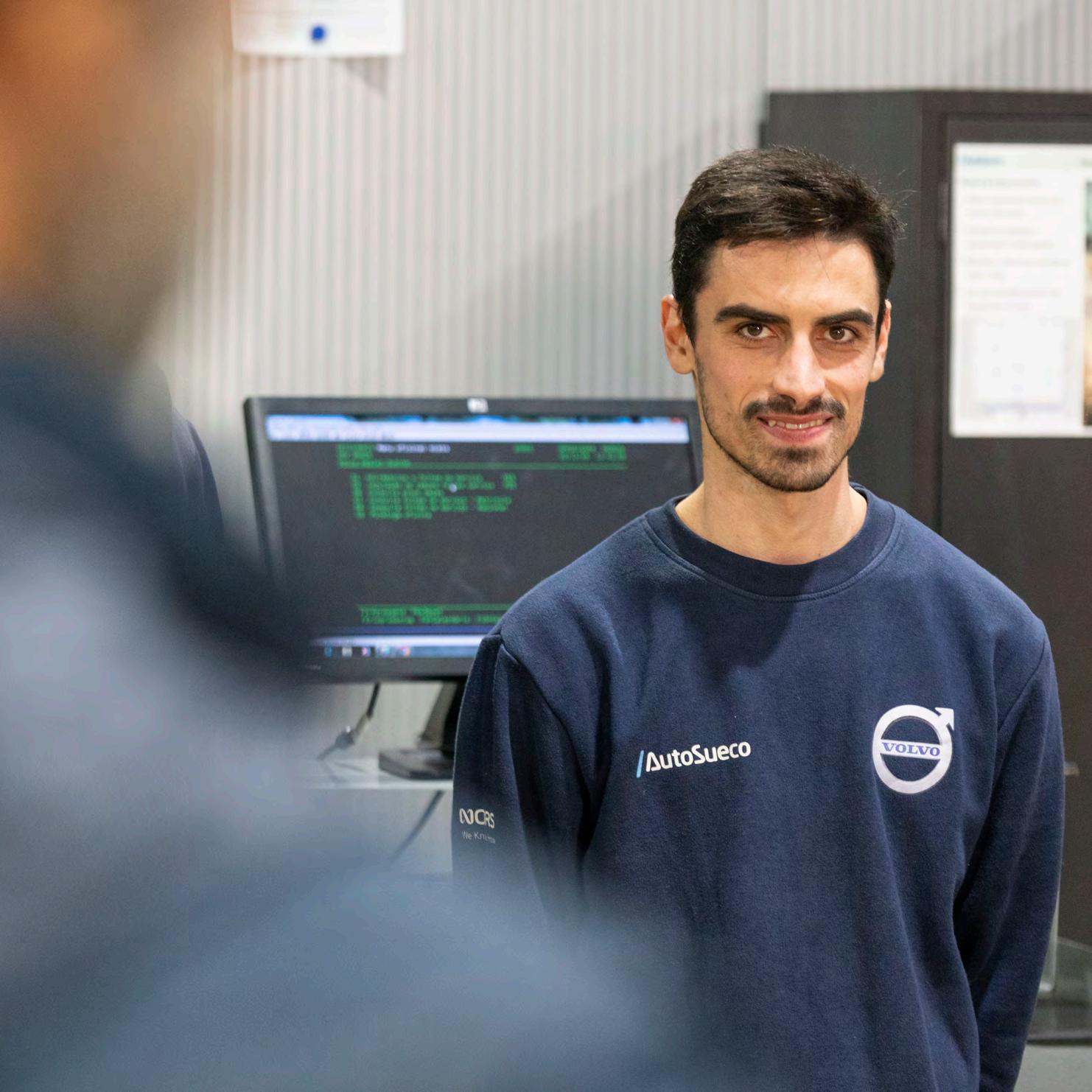
The total allocated assets and liabilities, by segment, are presented as follows:
The unallocated assets and liabilities arising from investment, financing and tax activities managed on a centralized and consolidated basis, are presented as follows:
The breakdown of the main totals of the financial statements by geography as of December 31, 2023 and 2022 is as follows:
¹ The Net Banking Debt equals “Obtained financing - cash and bank deposits - available financial investments”
Accrual accounting
Income is recorded in accordance with the accruals principle, whereby it is recognised as it is generated, regardless of when it is received or paid. The differences between the amounts received and paid and the corresponding income generated are recorded under the accruals and deferrals headings under "Accounts receivable" and "Accounts payable".
Income whose real value is not known is estimated based on the best assessment of the Boards of Directors of Nors and its subsidiaries.
For the periods ended December 31, 2023 and 2022, other operating income and gains are broken down as follows:
Income and expenses are recorded according to the principle of accrual accounting, and so they are recorded as they are generated, regardless of the time when they are received or paid. The differences between the amounts received and paid and the corresponding income and expenses generated are recorded in the items “Other accounts receivable” and “Other accounts payable”.
Expenses and income whose real value is not known are estimated based on the best evaluation of the Boards of Directors of Nors and of its affiliates.

For the periods ended December 31, 2023 and 2022, operating expenses and losses are broken down as follows:
The amount under “Compensation paid in out-of-court settlements” pertains to an out-of-court settlement with a former Strongco customer, which led to the conclusion of a warranty claim in court in Canada. The claim process was already ongoing at the time of Nors’ acquisition of the company in 2020, and its progression increased the likelihood of loss. However, this claim by the former customer arises from a project of a business unit sold by Strongco while it was still ongoing. According to the sale contract, we consider that the compensation would be owned by the entity that acquired the business unit. Therefore, legal proceedings are underway to recover the amount paid by Strongco.
2.4. staff costs and other employee benefits
2.4.1. staff costs
In the periods ended December 31, 2023 and 2022, the personnel expenses were as follows:
On December 31, 2023 the number of employees is 3,036 (344 more than the previous year).
Remuneration of the members of Nors ’ governing bodies in the years 2023 and 2022 were as follows:
2.4.2. defined benefits obligation
In geographies where this is mandatory, employees have rights under the group's pension plans, which are either defined contribution or defined benefit plans.
The liability recognised in the consolidated statements of financial position in respect of defined benefit pension plans is the present value of the defined benefit obligation at the end of the reporting period less the fair value of plan assets. The defined benefit obligation is updated annually by the Board of Directors with key assumptions provided by independent actuaries using the projected unit credit method. Actuarial valuations of the defined benefit plans are performed at least every three years. The present value of the defined benefit obligation is determined by discounting estimated future cash outflows using interest rates of high quality corporate bonds that are denominated in the currency in which the benefits will be paid and that have terms to maturity approximating to the terms of the related pension obligation.
Net interest is determined by multiplying the defined benefits obligation or net asset by the discount rated used to determine the defined benefits obligation (at the beginning of the year) and is included in the employee’s future benefits.
Changes to actuarial gains and losses that arise when calculating the present value of the defined benefits obligation and of the fair value of the plan’s assets are recognised in OCI in the period in which they arise and are debited or credited in retained earnings. On a provisional basis, management estimates the changes in actuarial gains and losses. These estimates are adjusted when the annual evaluation or estimate is concluded by the independent actuaries.
The cost of past services are immediately recognised in operating expenses in the consolidated income statements.
For defined contribution plans, the contributions are recognised as post-employment benefit expenses when they are due. Contributions paid in advance are recognised as an asset, in as far as a monetary reimbursement or a reduction in future payments is available.
The Group also has other future obligations to its employees, including a pension plan without an associated fund and a noncontributory dental and healthcare plan. The expected costs with these benefits are accrued throughout the employment period, using the same accounting method used for the defined benefit pension plans. These obligations are evaluated annually by independent, qualified actuaries.
Each provision typology takes into consideration:
typology description
Employee retirement benefits
Defined benefit pension funds
post-employment benefits acquired by former Strongco employees and which have no underlying assets ("unfunded liabilities").
post-employment benefits acquired by current and former Strongco employees that have funded liabilities but whose value is insufficient to meet future liability projections.
In determining the obligations with benefits for retired employees and with defined benefit pension funds, the Group uses actuarial assumptions, such as the discount rate and expectations of average life expectancy, being a matter that requires judgments and estimates to be made by the Board of Directors.In the actuarial assumptions, the group evaluated the discount rate applicable to the defined benefit plan for employees and other post-employment benefits. As a result of this evaluation, the Group updated the discount rate in accordance with the indicative market reference rates for calculating the liability with post-employment benefits and other long-term benefits.
For the periods ended December 31, 2023 and 2022, the breakdown is as follows :
The benefits to retired employees correspond to 3 retired beneficiaries and are associated with benefits with health and dental plans not covered by active employees. The employee pension fund has benefits attributable to current and former employees, of which only 29 employees are still accruing benefits. Prior to the acquisition by the Nors group, Strongco transferred the majority of employees participating in the defined benefit pension plan to a closed defined contribution plan effective January 1, 2019. The employees retained their rights to the pension benefits they had earned up to December 31, 2018. The executive pension fund currently has 6 beneficiaries already in the retirement period.
In the periods ended December 31, 2023 and 2022, the movements occurred as follows:
The current position of each defined benefit pension fund is as follows:
The risks associated with these plans are similar to those typical of benefit plans, including market risk, interest rate risk, liquidity risk, credit risk, longevity risk, etc.
There are no significant risks associated with these plans that might be considered unusual or require special disclosure.
For the periods ended December 31, 2023and 2022, the investment structure of plan assets is as follows:
The group measures its accrued benefit obligations and the fair value of plan assets for accounting purposes as of December 31 of each year. The main actuarial assumptions used were the following:
The sensitivity of the main assumption of the current value of future liabilities is the following:
In the 2023 and 2022 financial years, the fees paid to the firms of statutory auditors in the various countries in which Nors is present is related to the companies included in the consolidation using the full method, and is as follows:
In 2023 and 2022, the statutory audit firms corresponded to firms in KPMG's international network (made up of independent member firms associated with KPMG International Limited).
Following the transition to the IFRS and as permitted by IFRS 1 - “First time Adoption of IFRS”, Nors chose to maintain the Goodwill resulting from business combinations that took place prior to the transaction date, recorded according to the previous accounting rules used by Nors . Goodwill represents the difference between the fair value of the acquisition cost and the fair value of the identifiable assets, liabilities and contingent liabilities of the subsidiaries included in the consolidation at the date control is acquired and is allocated to each lowest cash-generating unit (CGU) or group of CGUs to which it is intended. Up to January 31, 2009, the contingent acquisition prices were determined based on the best estimate of probable payments, while subsequent changes were recorded in Goodwill. Since January 1, 2010, Goodwill is no longer corrected according to the final calculation of the value of the contingent price paid, that impact being recognised in profit or loss.
The value of Goodwill is not amortised but is tested annually to check if there are any impairment losses. The recoverable amount is determined based on the highest out of the present value of estimated future cash flows expected to arise from continued use of the asset, and the value of the disposal less its sale costs. Goodwill impairment losses recorded in the financial year are recorded in the income statement for the year in the item “Impairment of non-depreciable assets” under "Other operating costs and losses". Impairment losses related to Goodwill cannot be reversed.
Recoverability of goodwill
The complexity and level of judgment inherent to the model adopted for the calculation of impairment and the identification and aggregation of cash-generating units (CGU's) imply considering this issue as a significant accounting estimate. For the purposes of the impairment analysis, the recoverable amount was determined based on the value in use, according to the discounted cash flow method, based on the "business plan" developed by the persons in charge of the companies and duly approved by the Board of Directors of Nors and using discount rates that reflect the inherent risks of the business, or in the case of the real estate companies the sale value less costs to sell, as provided for in the regulations.
In the periods ended December 31, 2023 and 2022, the method and assumptions used in assessing the existence, or not, of impairment occurred as follows:
In the periods ended December 31, 2023 and 2022, the movements in goodwill occurred as follows:
During the year ended December 31, 2023, Agrofito and P8/Nors Máquinas Centro Oeste were acquired. The goodwill generated by these operations results from the purchase price allocation process, as provided for in IFRS 3- Business Combinations. For more information see note 10.2
The Board of Directors, based on the value of the projected cash flows at 5 years, which are based on historical performance and expectations of efficiency and organic growth, discounted at the applicable rate, concluded that, at December 31, 2023, the book value of the cash generating units does not exceed their recoverable value. In companies with real estate activities, the recoverable amount was determined by the fair value of the properties minus disposal costs, which is higher than the book value of net assets, including goodwill, and for this reason it is not necessary to consider an impairment of assets.
The cash flow projections were based on historical performance and expectations of efficiency and organic growth. The management believes that a possible change (within a normal scenario) in the main assumptions used in the calculation of the recoverable amount will not result in impairment losses, making the WACC and the business growth rate vary by 1 p.p., Goodwill remains unimpaired.
Accounting policies
Recognition and initial measurement
Intangible assets are recorded at acquisition cost, less the accrued amortisations and accrued impairment losses. They are only recognised if it is probable that they will generate future economic benefits for Nors , if it is possible to reasonably measure their cost and if Nors has control over them.
Research expenses incurred with new technical knowledge are recognised as an expense in the income statement when incurred.
Development expenses, for which Nors demonstrates its ability to complete the development and begin marketing and/or using them, are capitalised if it is probable that the asset created will generate future economic benefits.
Development expenses that do not meet these criteria are recorded as an expense in the income statement for the year in which they are incurred. Internal costs linked to the maintenance and development of software are recorded as expenses in the income statement when incurred, except when such costs are directly linked to projects which will probably generate future economic benefits for Nors . In such situations, these costs are capitalised as intangible assets. The assumptions used in determining the value of the intangible asset “Supplier Relationship” are detailed in note 10.2.
Intangible assets are amortised using the straight-line method, for a period of three to six years, except for those related to: (i) supplier relationships, which are depreciated over 9 to 15 years; and (ii) concession rights, which are considered to have an indefinite useful life, and as such, are not amortised, but subject to an annual impairment test. Amortisation of intangible assets in the year is recorded in the income statement under "Depreciation, amortization and impairment losses on non-financial assets".
In the periods ended December 31, 2023 and 2022, the movements in intangible assets, as well as in the respective accumulated amortization and impairment losses, occurred as follows:
Accounting policies
Recognition and initial measurement
Tangible fixed assets acquired up to January 1, 2009 (transition date to IFRS) are recorded at their deemed cost, which corresponds to their acquisition cost, or revalued acquisition cost in accordance with generally accepted accounting principles in Portugal (and the countries of the respective Nors subsidiaries) up to that date, less depreciation and accumulated impairment losses.
Tangible fixed assets acquired after that date are recorded at acquisition cost, less accumulated depreciation and accumulated impairment losses.
impairment
Accounting policies
Pursuant to IAS 36 - Impairment of Assets, an impairment test is performed on Nors' assets at the date of each statement of financial position and whenever an event or change in circumstances is identified that indicate that the asset's book value might not be recoverable.
Whenever the asset’s book value is higher than its recoverable amount (defined as the highest out of the net sale price and the value in use, or as the net sale price for held-forsale assets) an impairment loss is recognised. The net sale price is the amount that would be obtained with the disposal of the asset, less the costs directly attributable to the disposal, in a transaction between independent and knowledgeable entities. Value in use is the present value of the estimated future cash flows which are expected to arise from the continued use of the asset and from its disposal at the end of its useful life.
The recoverable amount is estimated for each asset individually, or if that is not possible, for a cash flow-generating unit to which the asset belongs.
The reversal of impairment losses recognised in previous periods is recorded when it is concluded that the recognised impairment losses no longer exist or that they have decreased. This analysis is performed whenever there are signs that the previously recognised impairment loss has reversed. The reversal of impairment losses is recognised in the income statement. However, the reversal of an impairment loss is carried out up to the maximum amount that is recognised (net of amortisation or depreciation) should the impairment loss not have been recognised in previous reporting periods.
Impairment losses detected in the realisable value of the tangible fixed assets are recorded in the income statement for the year in which they are estimated, in the item “Impairment of depreciable investments”.
Depreciation is calculated as from the time when the assets are ready for use, using the
straight-line method, according to the following estimated useful lives:
Subsequent costs
Expenses with repair and maintenance of tangible fixed assets are considered an expense in the year in which they occur. Improvements of significant amount, which increase the estimated period of use of the respective assets, are capitalized and depreciated in accordance with the remaining useful life of the corresponding assets.
Tangible fixed assets in progress represent a tangible asset that is still in the construction/development stage, and are recorded at acquisition cost, less accrued impairment losses.These assets are transferred to tangible fixed assets and amortised as soon as the underlying assets are available for use and in the right condition to operate as intended by management.
Gains or losses resulting from the sale or write off of tangible fixed assets are determined as the difference between the selling price and the net book value on the date of disposal write off, and are recorded in the income statement as “Other income and gains” or “Other expenses and losses”. Depreciation of the tangible fixed assets for the year is recorded in the consolidated income statement under the item “Depreciation, amortization and impairment losses on non-financial assets. "
Leases from the lessor's point of view are classified as:
1. finance leases when all the risks and advantages inherent to the possession of the vehicles are substantially transferred to the third party;
2. operational leases if all the risks and advantages inherent to the possession of the leased asset are not substantially transferred through them.
The leasing contracts where the Group acts as lessor under operating leases, the values of the assets are maintained in the statement of financial position, under the heading of tangible fixed assets, and income is recognised over the lease contract on a straight-line basis (note 2.1.2).
The main sources of uncertainty arise from the period during which the assets will be in condition for use, the forecasts of their cash flows, estimates of their recoverable amounts, obtaining market comparables, growth rates, discount rates and sensitivity assumptions.
In the periods ended December 31, 2023 and 2022, the movements in property, plant and equipment, as well as in the respective accumulated depreciation and impairment losses, were as follows:
In 2023 and 2022, the amounts disclosed in the lines "Transfers, disposals and writeoffs" also include accounting reclassifications in accordance with Nors policies, namely of Investment Property due to change in the use of the assets.
Accounting policies
Initial recognition and measurement
Investment properties, which correspond to real estate assets held to obtain income through rental or for capital appreciation, and not for use in the production or supply of goods and services or for administrative purposes, are recorded at cost and their fair value is disclosed.
Whenever the fair value of these assets is shown to be below their respective acquisition cost, an impairment loss is recorded in the year in which it is estimated, under the caption "Impairment of depreciable investments" in the income statement. When the accumulated impairment losses recorded cease to exist, they are immediately reversed by a counter-entry under the same caption in the profit and loss statement up to the limit of the amount that would have been determined, net of depreciation, if no impairment loss had been recognised for the asset in prior years. The fair value of investment properties that is subject to disclosure is determined based on property valuations performed by an independent specialised entity.
Depreciation is determined on a straight-line basis, as from the date the assets are in condition to be used, over a period of 20 to 50 years.
The Board of Directors believes that a possible change (within a scenario of normality) in the main assumptions used in the calculation of the fair value will not result in impairment losses, apart from the loss already recorded. Despite the changes in the book value, the fair value of the properties has not changed based on the valuations carried out.
The fair value of investment properties that are subject to disclosure at December 31, 2023 and 2022 was determined through a real estate evaluation carried out by the an expert evaluator who used the arithmetic average of the results of the market comparison method and the costs method.
During the year ended December 31, 2023 and 2022, operating income and expenses directly associated with investment properties were as follows:
During the periods ended December 31, 2023 and 2022, movements in investment property, occurred as follows:
In 2023 and 2022, the amounts disclosed in the lines "Transfers, disposals and write-offs" also include accounting reclassifications in accordance with Nors policies, namely to Tangible Fixed Assets due to changes in the use of the assets.
3.5.1. leases from the point of view of the lessee
Accounting policies
Starting on January 1, 2019, operating leases where Nors is a lessee are recognised within the scope of IFRS 16 - Leases. During the transition, Nors opted for the modified partial retrospective approach.
As such, a lease contract is based on “the right to control the use of an identified asset”. For all lease contracts, Nors recognises operating lease liabilities that reflect future lease payments, and “right of use” assets under “Assets through lease”. Exceptions to this recognition are only permitted in certain short-term leases, in contracts under 12 months whose renewal is not foreseen, and with low-value assets.
At the beginning of each contract, in order to determine its “rights of use” and its lease liability, future rentals are updated to the present time, for which fixed discount interest rates are used, taking into account the risk profile of each Nors subsidiary, its country of origin and the asset leased. These are defined for each contract following the practical procedures provided for in the standard. The main interest rate ranges in use at Nors are:
Lease liabilities are initially measured based on the present value of the liabilities at that date. Subsequently, the lease liabilities are adjusted for the effect of profits, lease payments and possible changes in the lease contracts.
For the calculation of the present value of lease payments, where it is not possible to obtain the implicit interest rate, the Group uses the incremental financing rate.
The lease term is considered to be the non-cancellable lease period, taking into account the periods covered by an option to extend the lease, if it is reasonable for the Group to exercise that option. The lease term is comprised between the minimum corresponding to the non-cancellable period and the maximum corresponding to the period during which the contract is enforceable. Therefore, in determining the lease term, the Group makes judgement regarding the relevant factors that create an economic incentive to exercise the renewal or termination option.
In the periods ended December 31, 2023 and 2022, the movements in the rights of use of assets, occurred as follows:
3.6.depreciation, amortization and impairment losses on non-financial assets
Depreciation, amortization and impairment expenses on non-financial assets in 2023 and 2022 were as follows:
3.7.financial holdings
Accounting policies
Financial investments in associates and joint ventures are recorded using the equity method and are included in the dconsolidated statement of financial position under the caption "Investments in associates and joint ventures".
When impairment triggers exist, financial investments in associates and joint ventures are subject to impairment testing. A loss is recognised in the income statement for the amount by which the asset's carrying amount exceeds its recoverable amount, the recoverable amount being the higher of the fair value of the investment less costs to sell and its value in use.
Impairment losses on financial investments in associates are reversible.
For periods ending December 31, 2023 and 2022, the item breaks down as follows:
The movements registered between the two periods are the following:
In the year of 2023, the main indicators of the companies entering by the equity method are:
3.8. Assets and liabilities held for sale
Accounting policies
The group’s business unit portfolio management processes may lead to the disposal or closure of operations by decision of the Group’s Board of Directors. When a definitive decision is made until the approval of the financial statements to close a business unit, either through its sale or liquidation, the Assets and Liabilities comprising that business unit are presented in the Consolidated Statement of Financial Position at their net value under “Non-current assets held for sale” at the lower of their fair value and the carrying amount, with any loss recognised in the Consolidated Statement of Comprehensive Income under “Other operating expenses and losses”.
If it concerns the disposal of a business unit but there would be no definitive closure if it were not executed, with the unit remaining within the Nors Group, it is treated differently. The group of assets classified as held for sale is included in “Assets held for sale” at the lower of their selling price and the carrying amount, and the liabilities directly associated with the group of assets classified as held for sale are included in “Liabilities held for sale”, with any net loss recognised in the Consolidated Statement of Comprehensive Income under “Other operating
and losses”.
On April 3, 2024, Nors S.A., as the seller, signed a “Sale and Purchase Agreement for Shares and Credits” for 100% of the share capital of Auto Sueco II Automóveis, S.A., and a “Promise of Sale and Purchase Agreement” for the properties in Queluz and Almada, both 100% dedicate to the automotive retail activity developed by this company.
The contracts include standard contractual clauses, especially the authorization from Volvo Car Portugal and the Competition Authority in Portugal, which are expected to be obtained in the coming months. Given the nature of the contractual conditions.
Nors management considers that they retain full control over the operation until these authorizations are obtained.
The value of the sale of both the shares and the properties individually exceeds their net book value, so no losses were recorded in the 2023 financial statements.
Applying the above concepts, it is considered that Auto Sueco Automóveis, despite having operations and cash flows that can be standalone, does not represent a separate segment itself and is encompassed within the Mobility segment. Considering its weight within that segment, it does not constitute a major line of business under IFRS 5 and therefore is not reported in the consolidated financial statements as a discontinued operation.
The opening balances for “Assets held for sale” and “Liabilities held for sale” are as follows:
Accounting policies
Goods and raw materials, by-products and consumables
Goods and raw materials, by-products and consumables are valued at the lower out of the acquisition cost and the respective net realisable value (estimate of its selling price less the costs incurred with the disposal).
Equipment that was, or is, under short-term rental contracts (less than 1 year) during the year are considered to be available for immediate sale, and are included in the balance sheet under “Inventories” at the net book value.
Such equipment is depreciated based on the production units method, as this best reflects its specific wear and tear. The expenses of this depreciation are shown in the income statement under "Depreciation, amortization and impairment losses on nonfinancial assets".
Finished and semi-finished products and works in progress
Finished and semi-finished goods, as well as products and works in progress are valued at production cost, which is lower than the market value.
Production costs include the cost of the incorporated raw materials, direct labour, general manufacturing expenses and services carried out externally.
Accrued impairment losses for depreciation of inventories reflect the difference between the acquisition or production cost and the market net realisable value of the inventories.
In the case of Inventories, impairment losses are calculated based on market values and on various inventory turnover indicators, which are subsequently reviewed and adjusted by the departments responsible, so as to ensure that the value of the inventories does not exceed their net realisable value.
With regard to recoverability, the Group was obliged to temporarily close points of sale during the lockdown in 2020 and 2021, and therefore immediately adapted the level of orders of goods, avoiding the accumulation of stocks in the value chain and preserving its working.
The group believes that compared to the margins practised during the pandemic, the net realisable value of its inventories is higher overall than their book value, impairments having been created on inventories following the group’s accounting policies, without the need to significantly reinforce them during 2022 and 2023.
In the periods ended December 31, 2023 and 2022, inventories were broken down as follows:
4.1.2.
In the periods ended December 31, 2023 and 2022, the cost of goods sold and materials consumed were broken down as follows:
At December 31, 2023 and 2022, this item had the following composition:
Clients and other accounts receivable
Non-interest-bearing accounts receivable are recorded according to their nominal value, less any impairment losses so that they reflect their present net realisable value. These amounts are not discounted, as the effect of being financially updated is not considered to be material.
Nors recognises expenses on an accrual basis, regardless of their payment. At the end of each period, expenses already paid but which should only economically affect the following period(s) are deferred under this heading.
As far as the recoverability of trade balances and other amounts receivable are concerned, impairment losses are recorded based on the simplified model provided for in IFRS 9, recording the expected losses until maturity. In order to measure the estimated losses, balances are aggregated based on shared credit risk characteristics as well as days past due. The group periodically assesses expected credit losses and the impacts on all financial assets measured at amortized cost.
Nors follows the simplified approach to calculate impairment related to customers and other debtors. Under the simplified approach, an entity measures impairment
losses at an amount equal to lifetime expected credit losses for receivables arising from transactions within the scope of IFRS 15, and which do not contain a significant financing component. For receivables that have a significant financing component it is also Nors' option to apply the simplified approach. Expected credit losses are a probability-weighted estimate of credit losses. A credit loss is the difference between the cash flows that are due to an entity under the contract and the cash flows that the entity expects to receive discounted at the original effective interest rate. Because expected credit loss considers the amount and timing of payments, a credit loss arises even if the entity expects to receive in full but after the contractually defined timing.
Nors considers unpaid balances after 180 days from the agreed collection date to be in default and uses two levels to recognise impairments:
Specific impairment
Recognised in relation to cases in litigation, namely cases where collection relies on the intervention of third parties external to Nors (lawyers and similar agents), including in these cases those which are already in court, due to dispute or insolvency. The specific impairment is recognised on the total balance due by the third party, only excluding the amounts covered by credit insurance and/or real guarantees.
Generic impairment
When calculating generic impairments third-party balances are excluded, namely Nors companies (parent company; subsidiaries; associates; other related parties), Financial Entities (lessors and banks), Nors employes, third parties with an overall creditor balance (for example, advances), and values covered by credit insurance and/or real guarantees.
To estimate credit losses to customers, contractual assets, and amounts receivable from leases, not included in the specific impairment, Nors uses the following intervals:
• not overdue;
• 30 days overdue;
• 31-60 days overdue;
• 61-90 days overdue;
• 91 -180 days overdue;
• More than 180 days overdue.
For the “not overdue”, to “91 - 180 days overdue” periods, the values ascertained for 2023 for Nors led to an impairment percentage of 0% being applied on the book value.
In the periods ended December 31, 2023 and 2022, the customers item breaks down as follows:
The amounts shown in the statement of financial position are net of accrued impairment losses that were estimated by Nors in accordance with the accounting policy adopted and disclosed, as well as on the assessment of the climate and economic environment at the date of the statement of financial position. Credit risk concentration is limited as the customer base is wide and not inter-related. The Board of Directors believes that the book values of trade accounts receivable is close to their fair value, hence it is considered that the credit risk does not exceed the recorded impairment losses.
Impairment losses at December 31, 2023 can be allocated to customers with doubtful debts,
corresponding to customers for whom the group has turned to legal support (internal or external) for their recovery. The group assessed the current exposure to credit risk and the possible impact of future economic forecasts, and concluded that the impact of this component is small.
The amounts of trade balances recorded in assets are not influenced by advances made for acquiring services/goods, which are presented in liabilities in the item “Other accounts payable (customer advances)” and which at December 31, 2023 and 2022, amount to 51 879 thousand Euros and 59 826 thousand Euros respectively (note 4.4.2).
At December 31, 2023 and 2022, this item had the following composition:
(note 4.3)
Impairment losses at December 31, 2023 and 2022 can be allocated to others debtors with doubtful debts, corresponding to third-party balances for whom the group has turned to legal support (internal or external) for their recovery.
“Other balances with the State and other public bodies” corresponds to tax balances receivable/deductible by Nors entities in the various countries where they operate, other than value added tax and income tax for the year.
At December 31, 2023 and 2022, this item in Assets had the following composition:
The balance of other expenses to be recognised relates to deferred invoices awaiting credit notes, sickness allowance and rentals to be recognised in short-term contracts.
In the periods ended December 31, 2023 and 2022, the movements under the accumulated impairment losses heading are broken down as follows:
Impact on results (reinforcement and reversals):
In the periods ended December 31, 2023 and 2022, accounts payable break down as follows:
Accounting policies
Suppliers
The balance of suppliers is initially recorded at fair value and subsequently measured at amortized cost.
Other accounts payable
Debts to third parties that do not bear interest are recorded at their nominal value as the effect of financial activity is not considered material.
At 31st December 2023 and 2022, this item was composed of current supplier balances payable, which are all due in the short term.
On these dates, the aggregate balance of the item suppliers was not affected by payment plans that incorporated interest payment and so the financial risk related to changes in interest rates here is residual.
Advances to suppliers are presented in Assets, in the item “Other accounts receivable” (note 4.2.2).
4.4.2.
The value of other non-current accounts payable corresponds to long-term liabilities (5 years) with investment suppliers related to the acquisition of Agrofito and Nors CO. For further information, please refer to note 10.2.
At December 31, 2023 and 2022 this item had the following composition:
The value of "Advances from Customers" is directly related to advance payments from customers to guarantee future deliveries of vehicles and equipment, and are due in a period of less than 12 months.
The value of “Investment Suppliers” includes €21,707 thousand related to short-term payments associated with the acquisition of Nors CO. For further information, please refer to note 10.2.
In the periods ended December 31, 2023 and 2022, the liability item related to deferrals is broken down as follows:
Nors' capital structure, determined by the proportion of equity and net debt, is managed in order to ensure the continuity and development of its operating activities, maximize shareholder return and optimize financing costs. The Group periodically monitors its capital structure, identifying risks, opportunities and the necessary adjustment measures to achieve these objectives.
5.1.1. share capital
At December 31, 2023, the capital of Nors , S.A, which is fully subscribed and paid up, is 30 million Euros (30,000,000 shares with a nominal value of 1 (one) euro).
Identification of the corporate entities with more than 20% of the subscribed capital is as follows:
and registered office
Prime Jervell Holding - Consultoria e Gestão, S.A.
Headquarters: Largo do Terreiro, nº4 4050-603 Porto
CADENA - S.G.P.S., LDA.
Headquarters: Rua Alberto Oliveira, 83 4150-034 Porto
5.1.2. earning per share
Accounting policies
Earnings per share may be expressed from a “basic earnings” or “diluted earnings” point of view.
Basic earning
Basic earnings per share is calculated by dividing the profits or losses for the year by the weighted average number of ordinary shares in circulation during the period.
Diluted earning
Diluted earnings per share is calculated by dividing the profits or losses for the year by the weighted average number of ordinary outstanding shares during the period, adding the number of ordinary shares that can be issued, as a result of converting other instruments issued by the entity.
Earning per share is disclosed below:
During 2023 and 2022 there were no movements in the issuance, reduction or cancellation of shares, so the average number of ordinary shares outstanding during the year was 30,000,000. Nor has there been any issuance or redemption of any instruments that may be convertible into common shares. There are no shares with special and/or limited rights.
In accordance with the decision at the General Partners Assembly (April 20, 2023) this year dividends were paid through the distribution of free reserves in the total amount of 40, 000 thousand Euros.
Portuguese commercial legislation establishes that at least 5% of the annual net income of each company, ascertained in their individual accounts, must be used to reinforce the legal reserve until the latter represents at least 20% of the share capital. This reserve is not distributable unless the company is liquidated, but it may be used to absorb losses after other reserves are depleted or incorporated into capital.
The sum shown in the Financial Position corresponds to the Legal Reserve of Nors , S.A.
5.1.5.
Adjustment to financial assets covers variations from applying the equity method to the company’s affiliates. This reserve cannot be distributed to the partners.
This item includes translation reserves that reflect the exchange rate variations that occurred in the transposition of the financial statements of subsidiaries in a currency other than the Euro.
Reserves available for distribution to the partners are ascertained based on the Individual Financial Statements of Nors , S.A.
In the periods ended December 31, 2023 and 2022, the movements in non-controlling interests occurred as follows:
Information on the affiliates that contribute to Non-Controlling Interests can be found in note 10.1. Of the balance on December 31, 2023, the most relevant amount refers to Auto-Sueco Angola (9 457 thousand Euros).
Accounting policies
Loans are recorded in liabilities according to their nominal value less the transaction costs that are directly attributable to the issue of those liabilities. Financial charges are calculated according to the effective interest rate and accounted for in the income statement for the period in accordance with the principle of accrual accounting.
The effective interest rate is the rate that discounts future payments over the expected life of the financial instrument to the net carrying amount of the financial liability
At December 31, 2023 and 2022, the item “Loans Obtained” is broken down as follows:
For Commercial Paper Programmes, repayment is considered on the date of termination regardless of the terms for which they are contracted.
The debenture loan has the following conditions:
• Amount: 25 million Euros
• Date of the contract and subscription: March 12, 2020;
• Coupon: Euribor 6 months + spread
• Maturity: 2024 with amortization of 6 250 thousand Euros
As of December 31, 2023, the maturity of non-current financing obtained is as follows:
At December 31, 2023, Nors had 431 963 thousand Euros available in credit lines allocated as follows:
At the inception of the lease, the Group recognises lease liabilities measured at the present value of the future lease payments, which include fixed payments less lease incentives receivable, variable lease payments, and amounts expected to be paid as a guaranteed residual value. Lease payments also include the exercise price of purchase or renewal options reasonably certain to be exercised by the Group or payments of lease termination penalties if the lease term reflects the Group's option to terminate the lease.
In calculating the present value of future lease payments, the Group uses an incremental financing interest rate if the interest rate implicit in the lease is not readily determinable. Subsequently, the value of lease liabilities is increased by the amount of interest and decreased by the lease payments.
As a result of the application of IFRS 15 and IFRS 16, the obligations related to repurchase agreements and right-of-use asset leases as of December 31, 2023 and 2022 are broken down as follows:
The recognition obligations for future years on December 31, 2023 and 2022, respectively, are broken down as follows:
5.3.1. landlord's perspective(note 2.1.2)
5.3.2. tenant perspective
5.4. cash at bank and in hand and debt instruments
5.4.1. cash at bank and in hand
Accounting policies
The amounts included in the heading “Cash at bank and in hand” correspond to the values in cash, bank deposits, term deposits and other treasury investments with a maturity of less than three months, and which may be immediately mobilizable with an insignificant risk of a change in value.
In the periods ended December 31, 2023 and 2022, cash and bank deposits were broken down as follows:
Explanations on the items in the Statement of Cash Flows is summarised in the table below:
Payments of Withholding Tax
Payments of Social Security Contributions Withheld
Other receipts/payments
Valued Added Tax Payments and Receipts
Receivables from Real estate Rents
Compensation Claims
The receipts in Financial Divestments refer to Angolan State Treasury Bonds that matured during the period. Dividends of €20,000 thousand were received from the subsidiary Ascendum, SA, in 2023, and €10,000 thousand in 2022.
Accounting policies
Debt instruments at amortised cost
Debt instruments are measured at amortised cost if both the following criteria are met:
• The asset is held to receive contractual cash flows;
• The contractual cash flows of the asset represent solely principal and interest payments.
Financial assets included in this category are initially recognised at fair value and subsequently measured according to the amortised cost.
At December 31, 2023 and 2022, Nors held investments classified in this category, corresponding to Angola State Treasury Bonds accepted for trading on the Angola Securities Exchange (BODIVA), which have been acquired since 2016. These bonds matured during the fiscal year of 2023, hence there was no balance as of December 31, 2023.
The balance of the item "Debt instruments at amortized cost" corresponds to Angolan Treasury Bonds with the purpose of holding them until maturity. Movements recorded between the two periods are as follows:
5.5. cash flow from funding activities
5.5.1. financing obtained
The movements in the item financing obtained occurred as follows:
5.5.2. lease liabilities
The movements in the lease liabilities item occurred as follows:
Financial charges related to loans obtained (interest, premiums, ancillary costs and interest on finance leases) are recognised as an expense in the income statement for the period in which they are incurred, according to the principle of accrual accounting.
Should they relate to qualifying assets, the financial charges will be duly capitalised as defined in the applicable IFRS standards.
In the periods ended December 31, 2023 and 2022, income from financial activities is broken down as follows:
Accounting policies
Income tax for the year is calculated based on the taxable results of the companies included in the consolidation, according to the tax rules in force in the location of the registered office of each Nors company, and considers deferred taxation. Current income tax is calculated based on the taxable results of the companies included in the consolidation. Whenever available, income tax for the year is calculated based on the tax regimes for groups of companies. Nors has a Special Regime for Taxation of Groups of Companies ("RETGS") based in Portugal, which is integrated by the companies headquartered in this country and directly and indirectly held by Nors, S.A. in more than 75%.
The remaining Nors' companies headquartered abroad or which do not comply with the rules for participating in similar schemes are taxed on an individual basis and in accordance with the applicable legislation.
The amount of the estimated assets and liabilities recorded associated with tax processes arise from the Group's assessment with reference to the statement of financial position date regarding potential differences of understanding with the Tax Authorities.
Regarding the measurement of uncertain tax positions, the Group takes into consideration the provisions of IFRIC 23 - "Uncertainty over income taxes", namely in measuring the risks and uncertainties in defining the best estimate of expenditure required to settle the liability, by considering all the possible controlled outcomes and associated probabilities.
In the periods ended December 31, 2023 and 2022, the tax rates used for tax purposes were as follows:
Income tax for the year in the periods ended December 31, 2023 and 2022 is broken down as follows:
per country is:
In the periods ended December 31, 2023 and 2022, the items break down as follows: The
Accounting
Deferred taxes are calculated based on the statement of financial position liability method and reflect the temporary differences between the amount of assets and liabilities for the purpose of accounts reporting and the respective amounts for the purpose of taxation. Deferred tax assets and liabilities are not recognised when the temporary differences arise from Goodwill or from the initial recognition of assets and liabilities other than through business combination operations. Deferred tax assets and liabilities are calculated and evaluated annually using the taxation rates in force, or announced as being in force, at the expected date of reversal of the temporary differences.
Deferred tax assets are only recorded when there are reasonable expectations of enough future tax profits for their use, or where there are taxable temporary differences that offset the temporary differences that are deductible in the period of their reversal. At the end of each financial year, a review of those deferred taxes is made, and these are reduced whenever their future use is no longer probable.
Deferred taxes are recorded as an expense or income for the year, except if they are the result of items recorded directly in equity, in which case the deferred tax is also recorded against the same item.
The tax carryforward that gave rise to deferred tax assets as of December 31, 2023 is broken down as follows:
Pursuant to the legislation in force in Portugal, losses from 2014 to 2016 can be reported for 12 years. Losses generated in 2017 and the following years can be reported for 5 years. Under the Covid-19 measures, the Portuguese government increased all these periods by 2 years.
In light of the State Budget for 2013, as from that year, deduction of tax losses is limited to 70% of the value of the taxable profit ascertained in the period in question, regardless of the period in which the tax loss was ascertained.
Pursuant to the legislation in force in Spain (Basque Country), tax losses generated between 2008 and 2017 can be reported for a period of fifteen years. Deduction of tax losses is limited to 50% of the value of the taxable profit ascertained in the period in question, regardless of the period in which the tax loss was ascertained.
In France, tax losses have no limited period of use.
In Brazil, tax losses have no limited period of use, although there is a yearly deduction limit of 30% of the taxable profit ascertained in the period in question.
In Angola, tax losses can be reported for a period of 3 years.
Nors ’ companies based in Portugal, in which Nors S.A. directly or indirectly owns more than 75%, are taxed for Corporation Tax in accordance with the “RETGS” (Special Tax Regime for Groups of Companies), provided for in articles 69 and the following articles of the IRC (Portuguese Corporation Tax) Code. For taxation periods starting on or after January 1, 2017, local state tax is applied to the part of taxable profit subject to and not exempt from IRC that is in excess of 1,500 thousand Euros, with a rate of 3% up to 7,500 thousand Euros, a rate of 5% up to 35,000 thousand Euros and of 7% if it is higher than the latter amount.
According to the legislation in force, the tax declarations of Nors ’ companies based in Portugal are subject to review and correction by the tax authorities for a period of four years (five years for Social Security), except when there have been tax losses, when tax benefits have been granted, or inspections, claims or other challenges are in progress, in which case, depending on the circumstances, the deadlines are extended or suspended. As such, the tax declarations of Nors ’ companies since 2018 could still be subject to review.
The Board of Directors of Nors believes that any possible corrections resulting from reviews/inspections by the tax authorities on those tax declarations for the years open to inspection should not have a significant effect on the attached consolidated financial statements.
Pursuant to article 88 of the Portuguese Corporation Tax Code, companies based in Portugal are also subject to autonomous taxation on a series of charges at the rates envisaged in the above-mentioned article.
The main objective of financial risk management is to support Nors in pursuing a long-term strategy, seeking to reduce unwanted financial risks, the associated volatility and trying to mitigate any negative impact on the group’s results that might arise from such risks. To this end, the group has developed a risk management methodology based on best practices, in order to ensure that there is independent and objective analysis of the organisational risks, so that they can be monitored, managed, consolidated and benchmarked between Nors ’ various organisational levels.
Exchange rate risk management policy
Nors has international operations, with companies operating in different jurisdictions, and is, therefore, exposed to exchange rate risk.
As Nors ’ presence is geographically spread across various Regions and international markets, its activity is based on different currencies, and so the risk must be duly managed from a global perspective and at a central level.
As such, it the exclusive responsibility of the CFO to define the preferential measures and initiatives that Nors and the Business Units and Management Structure must carry out in order to mitigate foreign exchange risk.
Currencies with more significant exposure are the US dollar, the Brazilian real and the Canadian dollar.
This balance sheet foreign exchange exposure is managed through natural hedging operations, namely by contracting financial debt in the currency of the place where the risk has been acknowledged.
Nors ’ Finance Department manages the foreign exchange variations of the companies, using greater or lesser structured financial instruments: forwards and financial debt.
The amount of Nors ’ assets and liabilities (thousands of Euros) recorded in a currency other than the Euro, can be summarised as follows:
Assuming a foreign exchange scenario with a devaluation of 2% against the 2023 foreign exchanges of each currency, applying this to the direct contribution to Nors' financial position and Net Income in 2023, the main impacts (in thousands of Euros) can be summarised as follows:
Part of Nors ’ indebtedness is indexed to variable interest rates, exposing the cost of debt to volatility in the financial market.
The impact of this volatility on Nors ’ income and equity is not significant due to the effect of the following factors: possible correlation between the level of market interest rates and economic growth (natural hedge) and the existence of liquidity or consolidated liquid assets at variable rates.
The Group uses the technique of sensitivity analysis that measures the estimated changes in results from an increase or decrease in market interest rates, with all other variables held constant. This is a purely illustrative example, since in practice market rates usually do not change in isolation.
The sensitivity analysis is based on the following assumptions:
• Changes in market interest rates affect interest income or expense of variable financial instruments;
• Changes in market interest rates affect the fair value of derivative financial instruments and other financial assets and liabilities;
• Changes in the fair value of derivative financial instruments and other financial assets and liabilities are estimated by discounting future cash flows from net present values using year-end market rates.
A 1% increase or decrease in the interest rates on which the interest on loans is calculated would have the following impact:
Liquidity risk is defined as the risk of being unable to settle or fulfil obligations within the defined deadlines and at a reasonable price. There are three principal objectives of managing this risk at Nors:
• Liquidity: ensuring permanent, efficient access to sufficient funds to meet current payments on the respective due dates, as well as any requests for funds within the deadlines defined for that purpose, even if unforeseen;
• Security: minimising the probability of default in reimbursing any investment of funds;
• Financial efficiency: ensuring that Nors and the Business Units/ Management Structure maximise the value created and minimise the cost of the opportunity of holding short-term surplus liquidity.
Generally speaking, responsibility for the management of liquidity risk is incumbent upon Nors ’ Finance Department. However, to ensure that Nors and the Business Units/ Management Structures have liquidity, working capital management parameters have been defined, enabling the maximum return to be obtained, while minimising the associated opportunity costs in a secure and efficient manner. It is important to mention that at Nors all existing surplus liquidity must be invested in amortising shortterm debt, and the most pessimistic scenario must be used as a basis for analysing the maturity of each of the liability financial instruments, so as to minimise the liquidity risk linked to these obligations.
As of December 31, 2023 and 2022, Nors has a net bank debt of 51,997 thousand Euros and 6,221 thousand Euros, respectively, divided between current and non-current loans and cash and bank deposits contracted with various institutions. As of December 31, 2023, there are outstanding credit facilities of 431,963 thousand Euros (see note 5.2). The Group has contracted loans that have associated contractual clauses that define compliance with certain financial covenants. The percentage, in terms of the balance outstanding at December 31 with financial covenants, is 73%, and at the date of the statement of financial position the Group is complying with the contracted covenants.
The main financial covenants contracted correspond to compliance with the following ratios:
• Net debt / Ebitda 1 < 4.0
• Financial Autonomy 2 > 27.0%
Loans in the form of commercial paper issues are classified as non-current liabilities when they are guaranteed for a period exceeding one year and it is the intention of the Group's Board of Directors to use this source of financing also for a period exceeding one year. As of December 31, 2023, Nors has current assets of 674,896 thousand Euros, which is higher than current liabilities of 515,548 thousand Euros. The Board of Directors is convinced that, given its financial and liquidity situation, the group will overcome the potential negative impacts of the context in which it operates, without calling into question the principle of continuity, applied in the preparation of these financial statements.
Credit risk refers to the risk of the counterparty defaulting on its obligations, resulting in possible losses for Nors , and so its exposure is mostly linked to trade receivables arising from operations. To cover credit risk, credit insurance or other hedging instruments can be contracted. When contracting credit insurance, the Accounts Receivable Areas of Norshare in the Regions must make an assessment of the need and the cost/benefit of contracting it, their conclusions being submitted to the Finance Department. Contracting any other hedging instruments is exclusively incumbent upon the CFO. The Board of Directors has approved a Customer and Credit Management Policy that mitigates this risk, namely in the following points:
• For all deals regarding products on credit from the commercial area, it is mandatory for the financial area of Accounts Receivable of Shared Services to analyse the credit and issue a technical opinion;
• Perform monthly impairment analyses on receivables;
• Monitor the evolution of credit at regular meetings.
1 Net Debt equals "Financing obtained + lease liabilities - cash and bank deposits - available available financial investments".
2 Financial Autonomy is equal to "Total Equity / Net Assets".
The Group's maximum exposure to credit risk from financial assets corresponds to their net value, as follows:
(note 4.2)
5.4.1)
7.2. derivative financial instruments
Nors uses derivative financial instruments when managing its financial risks, as a means of reducing its exposure to those risks. The derivative financial instruments normally used are “Foreign exchange forwards” (Cash flow hedges) and they aim to hedge the risk of foreign exchange rate variation in intra-group operations or margin protection on business with customers, as well as variable to fixed interest rate swaps, to hedge interest rate risk (Cash flow hedges).
The derivatives are initially recognised at their fair value at the date of entering into their contractual provisions and subsequently measured at their fair value. The method for recognising variations in fair value depends on whether or not that derivative is designated as a hedging instrument and, if designated, the nature of the hedged item.
For each transaction, and at the time of their origin, Nors prepares documentation that justifies the relation between the hedging instrument and the item hedged, as well as the risk management objective and the strategy for the hedge transaction. Both at the date of negotiating the hedge and on an ongoing basis, Nors also documents its analysis of the efficacy with which the hedging instrument offsets the variations in fair value, or of the cash flows from the hedged instruments. According to IAS 39, the fair value of option type derivatives is separated into their intrinsic value and their temporary value, given that only the intrinsic value of these instruments may be designated as a hedging instrument. As such, the efficacy tests of the option type derivative only include the intrinsic value of these instruments.
The fair value of the contracted derivatives for the purpose of hedging is presented in a specific note. Movements in the hedging reserve are presented in the consolidated
statement of changes in equity. The total fair value of a hedging derivative is classified as a non-current asset or liability when the residual maturity of the hedging instrument is more than 12 months, and as a current asset or liability when it is less than 12 months. Negotiation derivatives are classified as current assets or liabilities.
Derivative instruments for which the company used hedge accounting are initially recorded according to their cost, which is the equivalent of their fair value, and are subsequently reevaluated at fair value; the variations in the latter are recorded in “Fair Value Reserves”, in the case of cash flow hedges, in “Other reserves” in the case of foreign exchange risk hedges, in “net investment in a foreign operation “ and in the income statement for the year in the case of fair value hedges.
Derivative instruments for which the company has not used hedge accounting, although they were contracted with economic hedging objectives, are initially recorded according to their cost, which is the equivalent of their fair value, if any, and are subsequently reevaluated at their fair value, whose variations calculated through evaluations made by banks with whom Nors enters into the respective contracts, have a direct effect on the items of Financial income in the consolidated income statement.
The Board of Directors regularly assesses Nors ’ degree of exposure to various risks inherent to the activity of the different companies, namely price risk, interest rate risk and exchange rate risk.
As at December 31, 2023 and 2022, the degree of exposure to the risk of variation in interest rate was considered low, taking into account that a significant part of the bank liabilities is represented by medium/long-term credit lines, with previously agreed financing terms.
On the other hand, and although an increasing portion of the Consolidated Financial Position will be subject to the impacts of exchange rate variations (Euro/US Dollar, Euro/Real and Euro/Canadian Dollar), the degree of exposure was considered to be controlled by the policy followed of natural hedging through the contracting of bank loans in these currencies, especially in US dollars. As of December 31, 2023 and 2022, Nors had not negotiated any type of derivative financial instrument for exchange rate related to these currencies. However, the most recent changes in the capital market and the increased exposure of Nors' Consolidated Financial Position to exchange rate variations of the currencies mentioned above or others, may lead Nors' Board of Directors to introduce, in the short term, more derivative financial instruments in its risk management, duly adjusted to the typology of the respective risks.
Accounting policies
Debt instruments at fair value through equity
Debt instruments are measured at fair value through equity if both the following criteria are met:
• The objective of the business model is reached both through receipt of contractual cash flows and through the sale of financial assets;
• The contractual cash flows of the asset represent solely principal and interest payments.
The financial assets included in the category of fair value through equity are initially recognised and subsequently measured at fair value. Movements in the carrying amount are entered through other comprehensive income, except to recognise gains or impairment losses, income from interest and foreign exchange gains or losses, which are recognised in profit or loss. When the financial asset is derecognised, the accrued gain or loss previously recognised in other comprehensive income is reclassified as equity for the result.
Debt instruments at fair value through profit or loss
Financial assets are classified at fair value through profit or loss if they do not meet the criteria of fair value through other comprehensive income or amortised cost. This occurs when the initial objective is to recover the investment by selling the financial asset.
Financial assets included in the category of fair value through profit or loss are measured at fair value with all the variations recorded in profit or loss.
Reclassifications
Reclassifications within the categories are only permitted when there are changes in the business model for financial asset management. Reclassifications are accounted for prospectively as from the date of reclassification.
Investments in equity instruments (shareholdings under 20%) are measured at fair value. Equity instruments held for trading are measured through fair value, with changes in fair value accounted for in profit or loss. All other shareholdings are measured through fair value, with changes in fair value (except dividends) being accounted for in other comprehensive income. The values are not recycled from other comprehensive income to income (even when an equity instrument is sold). Accrued gains or losses are reclassified within equity through retained earnings. Equity instruments measured at fair value through equity are not reclassified to equity instruments at fair value through profit or loss. Equity instruments at fair value through profit or loss are not subject to impairment tests.
Equity instruments at fair value through equity are subject to impairment tests, and the impairment is accounted for in other comprehensive income.
For the periods ended December 31, 2023 and 2022, this item breaks down as follows:
As of December 31, 2023 and 2022, Nors holds interests in equity instruments by way of capital. Their fair value changes are not materially relevant.
Accounting policies
Balances and transactions expressed in foreign currency
Assets and liabilities expressed in foreign currency were converted into Euros using the exchange rates in force on the date of the statements of financial position. Favourable and unfavourable differences in foreign exchange, arising from the differences between the exchange rates in force on the date of the transactions and those in force on the date of collection, payment or on the date of the statement of financial position, are recorded as gains and losses in the consolidated income statement for the period.
In the period ended December 31, 2023, the item is detailed as follows:
Only Financial Assets - Customers and Other accounts receivable - show impairment losses, as set out in note 4.2.
Gains and losses on financial assets and liabilities are detailed as follows:
Interest and similar expense for financial assets and liabilities are detailed as follows:
Exchange differences on financial assets and liabilities are detailed as follows:
8.
Identification of Nors ’ corporate risks is incumbent upon the Board of Directors, with the advice of the Risk and Compliance Department, establishing the main risks to which the group as a whole is exposed, and defining the appropriate level of exposure of each of them. This combination is used to ascertain the organisational Risk Profile, which should guide the actions and initiatives to be adopted and implemented throughout Nors . Within this context, the main initiative carried out was the design and permanent update of Nors ’ Corporate Policies. For each topic, these Corporate Policies define the main responsibilities, decisions and approvals among the Management Bodies, the Corporate Structures and the Business Units/Nors Companies.
Price risk is related to other assets and financial instruments and has additional exposure, and so the mechanisms to control or minimise it may involve using more sophisticated hedging instruments. Thus, Nors ’ sensitivity and activity vis-à-vis variations in the prices of the said “held-for-sale investments” must be monitored by the Planning and Controlling Management Department and managed by the CFO, in accordance with the guidelines defined by the Board of Directors, whenever necessary.
8.2.
Environment risk arises from factors external to the company, which might affect the feasibility of its business model, jeopardising the fulfilment of the strategy and objectives. The more critical risks in this category were worked on by the Board of Directors and the action plan will be monitored and developed over time.
Process Risk is the risk of Nors not acquiring, managing, renewing and using the business’s assets in an efficient and effective manner. Decision-making information risk is the risk of the information used to support the execution of the business model, for internal or external reporting on performance and for continuous assessment of the business model. Process risk and information for decision-making risk will be mitigated both through actions by the Directors in each Business Unit and Company, and through the standards set out in the Corporate Policies.
The Nors Group adopts the necessary measures regarding the environmental area, in order to comply with the legislation in force. The Board of Directors of Nors does not consider that there are any risks related to environmental protection and improvement, having not received any administrative offenses related to this matter during the 2023 fiscal year.
Sustainable development is one of today's main concerns, which is why environmental and social issues are given importance in companies. Currently, the assertiveness of a truly universal positioning depends on the organisations' understanding of the global challenges that they face, as well as their ability to systematically identify the opportunities and risks inherent to their spheres of activity. Whether in relation to sustainable development or to the success and commercial performance of the various operations, the future performance of global entities is closely linked to an attentive and conscientious outlook.
The Group's proposal within the scope of its ESG strategy mirrors a clear purpose regarding the performance of a relevant, integral and transparent role in all the relationships it fosters as an organisation: with employees, customers, partners and all the stakeholders, decisionmakers and agents of transformation that orbit around it.
With the human dimension always at the centre of each line of action, the strategy called "Sustainable Motions", brings to the company a dynamic and transversal vision about the commitment to generate value and transmit confidence to the communities impacted by Nors.
The operation of several of the Nors Group's business processes is essentially dependent on reliable Information Technology (IT) systems and infrastructure. The Group is therefore subject to possible disruptions, cyber-attacks and other types of security threats to the Group's business, which could have a detrimental impact on its operations, reputation and have a material adverse effect on its earnings and financial position. It has become increasingly complex to detect cyber-attacks and other security incidents in a timely manner and the Group focuses on seeking to investigate and manage the incidents in order to mitigate their occurrence.
Since the Nors Group depends on third parties, where significant parts of the maintenance and operations of the IT systems are subcontracted, precautions have been taken essentially
at the level of the selection and ongoing management of these third parties. However, the possibility exists that events or incidents caused by vulnerabilities in its operations could cause interruption to its operations and even loss or leakage of information. In the period subsequent to December 31 2023, and before the approval of the Management Report and Financial Statements by the Board of Directors, the group was the target of a significant cyber-attack that disrupted normal business operations for about 10 days in March 2024. Forensic analyses have confirmed that there was no loss or leakage of information. The impact on 2024 financial results is currently being assessed, however, it is not expected to be material for the Group.
In addition to the Nors Group's internal work and its focus on growth, another essential branch in the execution of the group's strategy is its participation in group-wide mergers and, in particular, acquisitions, as well as in joint ventures, partnerships and other forms of cooperation. However, there is always a risk that these transactions are not entirely successful, or do not provide the expected benefits. For example, in the case of acquisitions, there is the possibility of contingent liabilities, increased amortization expense and impairments related to goodwill and other intangible assets, and unforeseen difficulties in integrating an acquired entity. In order to mitigate this risk, Nors Group performs an analysis of potential acquisitions, business partners and joint ventures, which includes assessing the strategic need, defining the key areas to be filled, gathering and evaluating data and, finally, presenting an informed and fact-based proposal for decision making.
Sometimes companies of a certain size and business diversity are subject to highly complex and inflexible structures, which can negatively affect the dynamics in decision making and, consequently, lead to a loss of opportunity. The existence of vertical and horizontal organisational structures can lead to disempowered and isolated self-focused teams, leading to long periods of decision-making processes that compromise the ability to respond to the market. Furthermore, in the presence of suboptimal team climates, there is a greater incentive for increased talent turnover and, with it, replacement costs. Nors Group aims to mitigate this lack of dynamics in decision making and organisational simplicity, through an organisation based on the word agility and always with a renewed vision of the future, incorporating a participative, interventive and strategic leadership approach, where the major objectives that were at the genesis of it are clear and integrate the Group's long-term strategic vision.

Accounting policies
Provisions
Provisions are recognised when, and only when, Nors has a current obligation (legal or constructive) as the result of a past event, whenever it is probable that in order to resolve that obligation, there will be an outflow of resources and the amount of the obligation may be reasonably estimated. Provisions are reviewed on the date of each statement of financial position and are adjusted so as to reflect the best estimate of the fair value at that date. Nors recognises provisions for restructuring costs whenever there is a formal, detailed restructuring plan and the latter has been communicated to stakeholders. Given the unpredictability of the timing of the reversal of the provisions and given the nature for which they are intended, Nors did not proceed to financially update them.
Each provision typology takes into consideration:
Provisions for taxes provisions set up to cover additional tax assessments resulting from tax contingencies other than corporate income tax
Provisions for guarantees to clients disclosed the best estimates of present obligations of uncertain timing, related to guarantees provided to clients, arising from the normal flow of operations.
Ongoing lawsuits disclosed the best estimates of the global amount of outflows, which may occur in the future as a result of lawsuits filed in court by third parties.
Other provisions set of estimates of other present or constructive obligations of uncertain timing, not comprised in the above categories.
In the periods ended December 31, 2023 and 2022, provisions were broken down as follows:
In the periods ended December 31, 2023 and 2022, the movements in provisions occurred as follows:
9.2. contingent assets and liabilities
Accounting policies
Nors defines contingent liabilities as being (i) possible obligations that arise from past events and whose existence will only be confirmed by the occurrence or otherwise of one or more future uncertain events, which are not fully under Nors ’ control or (ii) current obligations that arise from past events, but which have not been recognised because it is not probable that an outflow of resources incorporating economic benefits will be necessary to settle the obligation, or the amount of the obligation cannot be measured with sufficient reliability.
Contingent liabilities are not recognised in Nors ’ financial statements, but are disclosed in the Notes to the Consolidated Financial Statements, unless there is only a remote chance of an outflow of funds affecting future economic benefits, in which case they are not even disclosed. Contingent assets are assets that might arise from past events and whose existence will only be confirmed by the occurrence or otherwise of one or more uncertain future events that are not fully under Nors ’ control. This is the case of the lawsuit brought by Strongco referred to in note 2.3.
Contingent assets are not recognised in Nors ’ financial statements but are disclosed in the Notes to the Consolidated Financial Statements when it is probable that there will be a future economic benefit.
Inclusion in the consolidation using the full consolidation method was based on IFRS 10"Consolidated financial statements" (control of the subsidiary through majority of voting rights or other mechanism, being the owner of the company's capital - note 1.1.5.1). For the companies that were included in the consolidation through the equity method due to the existence of shareholders' agreements that by their conditions determine the existence of joint control, the provisions of IFRS 11 - "Joint Ventures" were followed.
For the periods ended December 31, 2023 and 2022, the Group's companies, their respective headquarters and principal developed business included in the consolidation by the full consolidation method and the respective proportion of capital are as follows:
10.1.1.1. companies with registered offices based in Portugal
Nors, S.A.
Registered offices :Rua Manuel Pinto de Azevedo, nº 711 - 2 4100 - 301 Porto
Amplitude Seguros - Corretores de Seguros S.A.
Registered offices:Rua Brito Capelo, 97 4º A 4450-072 Matosinhos
ASFC S.G.P.S., S.A.
Registered offices:Rua Conde da Covilhã, 1637 4100-189 Porto
Asinter - Comércio Internacional, Lda.
Registered offices:Via Marechal Carmona,1637 4100 - 189 Porto
ASMOVE - Consultoria e Projetos Internacionais, S.A.
Registered offices: Rua Manuel Pinto de Azevedo, 711 - 2 , 4100-321 Porto
Auto-Sueco II Automóveis, S.A.
Registered offices:Rua Manuel Pinto de Azevedo, 711 - 2 4100-301 Porto
Nors International S.G.P.S., S.A.
Registered Offices: Rua Manuel Pinto de Azevedo, 711 - 2 4100-301 Porto
Galius - Veiculos, S.A.
Registered offices: Rua Conde Covilhã, 1637 4100 - 189 Porto
Grow - Formação Profissional, S.A.
Registered offices: Rua Manuel Pinto de Azevedo, 711 - 2 4140 - 010 Porto
Imosócia – Sociedade Imobiliária, S.A.
Registered offices: Rua Conde da Covihã, 1637 4100-189 Porto
NewOneDrive, S.A.
Registered offices: Parque Industrial do Seixal, 2ª Fase-Lote1, Quinta Nova 2840-068 Paio Pires
Auto Sueco Portugal, S.A.
Registered offices: Rua Conde Covilhã, 1637 4149-010 Porto
Plurirent – Serviços de Aluguer, S.A.
Registered offices: Rua Conde da Covihã, 1637 4100-189 Porto
Promotejo - Compra e Venda de Propriedades, S.A.
Registered offices: Estrada Nacional 10, n.ºs 2-A e 2-B , 2810-801 Almada
SARI Serviços Aftermarket Região Ibéria, S.A.
Registered offices: Rua Manuel Pinto de Azevedo, 4 , 4100-320 Porto
Sotkon Portugal - Sistemas de Resíduos, S.A.
Registered offices: Zona Industrial, Lote I - 27 2330-210 Entroncamento
(1) directly and indirectly
and After Sale of trucks and components
and Administration of
sale and After Sale of Volvo Trucks, Buses, Gensets,marine engines and components
and
sale and rental of land and buildings
and marketing of containers underground for MSW
10.1.1.2. companies with registered offices based in other countries
Agrofito Case Máquinas Agrícolas, Ltda
Registered offices: Rua Avenida Ítrio Correa da Costa nº 2478, Rondonópolis, Mato Grosso (Brasil)
Agro New Máquinas Agrícolas, Ltda
Registered offices: Rua Martinópolis nº720, Jardim Del Rey 15802-040 Catanduva, São Paulo (Brasil)
AS-Glass Angola, Lda.
Registered offices: Estrada do Cacuaco, Bairro Petrangol, Km 4,3, Ed.5 Município do Sambizanga, Luanda (Angola)
AS Parts Angola, Lda.
Registered offices: Estrada do Cacuaco, Bairro Petrangol, Km 3,4, Ed.2 Município do Sambizanga, Luanda (Angola)
Auto-Maquinária, Lda.
Registered offices: Rua da Volvo, Bairro Candua, Município do Cacuaco, Luanda (Angola)
Auto Sueco Centro Oeste Concessionária de Veículos Ltda.
Registered offices: RDV BR 364, Km 16,3, Distrito industrial, Cuiabá (Brasil)
Auto Sueco São Paulo Concessionária de Veículos Ltda.
Registered offices: Av. Otaviano Alves de Lima, Nº4694 029.0001-000 São Paulo (Brasil)
Auto-Sueco (Angola), S.A.R.L.
Registered offices: Av. 4 de Fevereiro, 95-3º, Apartado 34 Luanda (Angola)
Auto-Sueco Kenya, Ltd.
Trade of agricultural equipment, parts, lubricating oils and After Sales service machinery
Trade, Import and Export of agricultural equipment, parts, lubricating oils and After Sales service
Trade in parts and accessories for vehicles
Trade, import and distribution of industrial and construction equipment, parts, tires, fuel and After Sales services
Registered offices: Plot 12080 - Units 6 & 7 Apex Business Centre, Mombasa Rd, Industrial Area, Nairobi (Quénia) Import, export, sale of motor vehicles, industrial equipment, engines, components and After-sales
Auto-Sueco (Tanzania) - Trucks, Busses and Const. Eq., Ltd.
Registered offices: Kipawa Industrial Area Plot Nr. 92 Nyerere (Pugo) Road, P.O.Box 9303 Dar es Salaam (Tanzânia)
Auto Sueco Moçambique, S.A.
Registered offices: Av. Da Namaacha nº 8274 Maputo (Moçambique)
Auto-Sueco Vehicles, Spare Parts & Services (Botswana)(Pty) Ltd.
Registered offices: Plot 47 - Gaborone International Commerce Park - Gaborone (Botswana)
Import, export, sale ofmotor vehicles, industrial equipment, engines, and components
and After
Sale and After Sale of
Auto Sueco Vehicles, Spare Parts & Services (Namibia) (Pty), Ltd.
Registered offices: 344 Independence Avenue 3º, Windhoek (Namibia)
Civiparts Angola - Comércio de Componentes e Equipamentos, S.A.
Registered offices: Estrada do Cacuaco, Km 3,4, Luanda (Angola)
Civiparts Maroc SA
Registered offices: Chemin Tertiaire 1015 Sidi Moumen 20400 Casablanca (Marrocos)
Civiparts España
Registered offices: Av. Castilla nº 32 Nave 58 28850 Madrid San Fernando Henr (Espanha)
Kinlai
Registered offices: Armazém Mulemba, Rua da Volvo, Luanda (Angola)
Nors Brasil Participações, Ltda.
Registered offices: Rua Pamplona 818, 9º, Conj. 92, 01405-001 São Paulo (Brasil)
Nors Canada, Inc
Registered offices: 1640 Enterprise Road Mississauga, Ontário (Canadá) L4W 4L4
Nors Equipamentos de Construção CO. Ltda
and After Sale: trucks and buses
Importation, trade, and distribution of Dongfeng brand products and associated aftersales services
management in other companies
Registered offices: Rua Abrão Jului Rahe, nº 1173, Campo Grande, Mato Grosso do Sul (Brasil) Trade and distribution of industrial and agricultural machinery, parts, tires, fuel, and assistance
Nors Máquinas Centro-Oeste Ltda
Registered offices: Avenida Gury Marques, nº 5526, Jardim Monumento Campo Grande, Mato Grosso do Sul (Brasil)
Socibil - Imobiliária, SARL.
Registered offices: Avª 4 de Fevereiro nº.95, 3º., Apº.34,.Luanda (Angola)
Sogestim, Lda.
Registered offices: Estrada do Cacuaco, Km 3,4 Luanda (Angola)
Sotkon Espanha
Registered offices: C/ Orla Etorbidea 8-10Oficina 409 nivel 4º 20160 Lasarte, Oria (Espanha)
Sotkon France, S.A.
Registered offices: 93, Rue de la Villette 69003 Lyon (França)
and
and selling of real estate
Acquisition and sale of real estate and land, construction of buildings, and land development
and Marketing of underground containers for MSW
Production and Marketing of underground containers for MSW
Sotkon Marocco, SARLAU
Registered offices: Twin Centre, Angle Bds Zerktouni - Al Massira
Tour Ouest, 16e étage 20100 Casablanca (Marrocos)
Strongco Corporation
Registered offices: 1640 Enterprise Road Mississauga, Ontário (Canadá) L4W 4L4
Strongco General Partner, Inc
Registered offices: 1640 Enterprise Road
Mississauga, Ontário (Canadá) L4W 4L4
Strongco Limited Partnership
Registered offices: 1640 Enterprise Road
Mississauga, Ontário (Canadá) L4W 4L4
(1) directly and indirectly
Production and Marketing of underground containers for MSW
Shareholdings management in other companies and provision of management support se
Heavy equipment and components import, sale, rental and After Sales
For the periods ended 31 December 2023 and 2022, the Group companies, their respective head offices and principal developed business included in the consolidation by the equity method and the respective proportion of share capital is as follows:
10.1.2.1. companies with registered offices based in Portugal
Air Rail Portugal, Sociedade Unipessoal, Lda
Registered offices: Estrada Nacional 10, Apartado 2094
2696-801 São João da Talha - Loures
Ascendum, S.A.
Registered offices: Praça Marquês de Pombal nº3 A-5º, 1250 - 161 Lisboa
Ascendum Agro - Equipamentos Agrícolas, S.A.
Registered offices: Parque Industrial Vale do Alecrim, Rua do Ferro 150, 2950-007 Palmela
Ascendum Camiões, unipessoal, Lda.
Registered offices: Rua Manuel Madeira, Marcos da Pedrulha 3021-901 Coimbra
Ascendum Máquinas, Unipessoal, Lda
Registered offices: Rua do Brasil, nº 27 –Apartado 2094, 2696-801 São João da Talha
Management of shareholdings Provision of technical administration, and management service
Ascendum Portugal - Serviços de Gestão, SA
Registered offices: Rua do Brasil, nº 27 –Apartado 2094, 2696-801 São João da Talha
Centrocar, S.A.
Registered offices: Rua Vilar do Senhor, 461 - 1º Andar, 4455-213 Lavra - Matosinhos
Glomak SGPS, S.A.
Registered offices: Rua Vilar do Senhor, 461 4455-213 Lavra - Matosinhos
Groupauto Portugal & Palop - GPLP, Lda
Registered offices: Rua José Afonso, Edificio A. Santos | Quinta de Santa Rosa 2680-593 Camarate - Loures
(1) directly and indirectly
Management of shareholdings Provision of technical administration and management services
Sale and After Sale of construction equipment
Management of shareholdings in other companies
Rendering of consultancy and support services, management of partnerships in the area of automotive and parts management and distribution
10.1.2.2. companies with registered offices in other countries
Air-Rail, S.L.
Registered offices: Calle Alsasua, 16 28023 Madrid (Espanha)
Air-Rail Marrocos Marrocos
Air-Rail Polska, Sp. z.o.o
Registered offices: Szpitalna 8/9, 00-031 Warszawa, Polónia
Ascendum Construction Equipment, INC.
Registeredoffices: 9115 Harris Corner Parkway, suite 450 | Charlotte, NC 28269 Estados Unidos da América
Ascendum Maquinaria México, S.A de C.V Carretera Mexico Queretaro KM 32.5
Ascendum Turk Makina, Limited Sirketi
Registered offices: Fatih Mahallesi Katip Çelebi Caddesi, nº43 Tuzla - 34940 - Istambul (Turquia)
Ascendum España, S.L.
Registered offices: Parque Empresarial San Fernando, Edificio Munich, Planta 3, 28830 MADRID (Espanha)
Ascendum, GmbH
Registered offices: Grafenholzweg 1 5101 Bergheim / Salzburg (Áustria)
After Sale and rental
and After Sale of
Management of shareholdings Provision of technical administration, and management services
Ascendum Baumaschinen Österreich GmbH
Registered offices: Grafenholzweg 1 5101 Bergheim / Salzburg (Áustria)
Ascendum Épitögépek Hungária
Registeredoffices: KAPCSOLAT 1141 Budapest Nótárius u. 13-15 (Hungria)
Ascendum Gradevinski Strojevi
Registered offices: Karlovacka 94 10250 Zagreb - Lucko (Croácia)
Ascendum Machinery SRL
Registered offices: Sos. Odaii, nr. 439, Sector 1 013606 Bucuresti (Roménia)
Ascendum Stavebeni Stroje Czech
Registered offices: Plzenská 430 CZ - 267 12 Lodenice (Chéquia)
Ascendum Stavebné Stroje Slovensko
Registeredoffices: Pestovatelská 4316/10, 821 04 BratislavaRužinov-Ružinov (Eslováquia)
Importer of Machinery
Sale and After Sale: Construction equipment
Importer of Machinery
Sale and After Sale:
Importer of Machinery
Sale and After Sale: Construction equipment
Importer of Machinery
Sale and After Sale: Construction equipment
Importer of Machinery Sale and After Sale:
Importer of Machinery
Sale and After Sale:
Sotkon Anadolu Turquia Production and Marketing of underground containers for
Bergman Americas
Registered offices: 160 Conway Black Road, Spartanburg, SC 29307
Estados Unidos da América
Centrocar España
Registered offices: Pol. Ind. La Sendilla, Avda. de las Palmeras, esq. C/ del Castaño 28350 Ciempozuelos - Madrid - Espanha
Centrocar Moçambique
Registered offices: Avenida da namaancha, nº 730, Maputo (Moçambique)
Importadora Distribuidora de Maquinaria
Industrial ZEPHIR, S.L.
Sede: Calle Alsasua, 16 | 28023 Madrid (Espanha)
Tea Aloya, Inmobiliaria, S.A.U.
Registered offices: Parque Empresarial San Fernando, Edificio Munich, Planta 3, 28830 Madrid (Espanha)
Volmaquinaria de Construcciòn España, S.A.U.
Registered offices: Parque Empresarial San Fernando, Edificio Munich, Planta 3, 28830 Madrid (Espanha)
Volrental Atlântico, S.A.U
Registered offices: Carretera de Castilla nº167 Betanzos - La Coruña (Espanha)
(1) directly and indirectly
After Sale and rental of construction equipment
After Sale and rental of
equipment
Sale, After Sale and rental of construction equipment
Acquisition and sale of properties, and land, construction of buildings, and land development
Importer of Machinery Sale and After Sale: Construction equipment
During the year ended December 31, 2022, there were the following changes in the composition of the consolidation perimeter:
• Inclusion of the Civiparts – Comércio de Peças e Equipamentos, S.A. into NewOneDrive, S.A. with no impacts on the consolidated financial statements;
• Liquidation of SGNT, SGPS S.A., Expressglass Angola, and Tecnauto Vehiculos, S.L. with no impacts on the consolidated financial statements, as these are companies involved in shareholding management and/or with no operational activity;
• Disposal in July 2022 of Ascendum Automóveis, unipessoal, Lda., with no material impacts on the consolidated financial statements.
During the year ended December 31, 2023, there were the following changes in the composition of the consolidation perimeter:
• Acquisition by Ascendum S.A., through Glomak S.G.P.S. S.A., of the 20% non-controlled stake in Centrocar, S.A., with the acquisition being made from the Ultimate Beneficial Owners of Ascendum S.A.;
• Liquidation of AS Parts Angola, Lda., after the transfer of its business to Civiparts Angola – Comércio de Componentes e Equipamentos, S.A. in 2022, in an effort to increase efficiency in the Aftermarket operation in Angola;
• Acquisition on March 1, 2023, of control of Agrofito Case Máquinas Agrícolas, Ltda, and its distribution activity of Case IH agricultural equipment in the southeast of the state of Mato Grosso, Brazil.
The allocation process of the purchase price resulted in:
The “Supplier Relationship” was determined based on the following assumptions:
- Projections of discounted cash flows based on the business plan supporting the pricing formulation.
- Discount rate used of 24.99%, comprising a weighted average cost of capital of 16.99% plus a 8% spread.
- Determined useful life using the Multi-Period Excess Earnings method over 108 months.
- Calculation included the tax benefit of amortizing the intangible asset both financially and fiscally due to its defined useful life at a rate of 34%.
The amount withheld for representations and warranties is remunerated at the SELIC rate and is due on February 28, 2028, net of any indemnities to be obtained from the sellers.
The contributions to the financial statements in 2023 from the acquired operation and the impacts of the acquisition can be summarized as follows:
• Constitution of Nors Equipamentos de Construção CO. Ltda in October 2023 with a view to acquiring Nors Máquinas Centro-Oeste Ltda;
• Acquisition on November 1, 2023, of control of Nors Máquinas Centro-Oeste Ltda. and its construction equipment distribution activity of the brands VCE and SDLG in the states of Mato Grosso and Mato Grosso do Sul in Brazil.
The acquisition price allocation process resulted in:
The “Supplier Relationship” was determined based on the following assumptions:
- Projections of discounted cash flows based on the business plan supporting the pricing formulation.
- Discount rate used of 20.25%, comprising a weighted average cost of capital of 16.05% plus a 4.2% spread.
- Determined useful life using the Multi-Period Excess Earnings method over 168 months.
- Calculation included the tax benefit of amortizing at the intangible asset both financially and fiscally due to its defined useful life at a rate of 34%.
The amount withheld for representations and warranties is remunerated at the DI rate and is due net of any of any indemnities to be obtained from the sellers as follows:
- On 1st November 2028, the amount of €737 thousand (5 million Brazilian reais)
- On 1st November 2029, the amount of €4.418 thousand (30 million Brazilian reais)
The contributions to the financial statements in 2023 from the acquired operation and the impacts of the acquisition can be summarized as follows:
In summary, the main impacts per line of the Statement of Financial Position as of December 31, 2023 are as follows:
Balances and transactions between Nors and its subsidiaries, which are related parties of Nors, were eliminated in the consolidation process and therefore will not be disclosed in this note.
The detail of balances between Nors and related entities, can be summarised as follows:
The detail of transactions between Nors and related entities can be summarised as follows:
The purchase and sale of goods and rendering of services to related parties were made at market prices.
The Board of Directors is considered a related party and its remuneration is disclosed in note 2.4.
11. inancial commitments undertaken and not included in the consolidated statement of financial position
The company has contingent liabilities in respect of bank and other guarantees and other contingencies related to its business. A summary of the guarantees is presented below:
Bank Guarantees relate essentially to guarantees provided to public entities within the scope of public tenders and also guarantees to clients and suppliers within the scope of Nors' operational activity.
As of December 31, 2023, a mortgage was held on a property owned by the company, located in Icolo & Bengo (Angola), with a maximum secured value of approximately 9 million euros, in favor of the Angolan General Tax Administration, as part of a tax process regarding Additional VAT Assessment. This tax process is ongoing and in the administrative appeal phase.
Events occurring after the statement of financial position date that provide additional information about conditions that existed at the statement of financial position date (adjustable events) are reflected in the consolidated financial statements. Events after the statement of financial position date that provide information about conditions that occur after the statement of financial position date (non-adjustable events), if material, are disclosed in the Notes to the Consolidated Financial Statements.
As noted in section 8.6, the group experienced a cyber-attack that disrupted normal business operations for approximately 10 days in March 2024. Forensic analyses confirmed that there was no loss or leakage of information, and the impact on 2024 financial results is currently being assessed. However, it is not expected to have a material effect on the Group.
On April 3, 2024, Nors S.A., as the seller, signed a “Stock and Credit Purchase Agreement” for 100% of the share capital of Auto Sueco II Automóveis, S.A., and a “Promise of Sale and Purchase Agreement” for the properties in Queluz and Almada, both of which are fully dedicated to the automotive retail business conducted by this company.
The contracts include standard contractual clauses, particularly the approval by Volvo Car Portugal and the Portuguese Competition Authority, which are expected to be obtained in the coming months. The proceeds from the sale of both the shares and the properties individually exceed their net book values, thus no losses were recorded in the 2023 financial statements. For further information, please refer to note 3.8.
On December 23, 2023, the Nors Group, through its Canadian subsidiary Nors Canada Inc, signed the acquisition of 100% of the share capital of a group of 5 legal entities with their shareholders. The share purchase agreement outlined a series of contractual conditions and precedents for its completion, including regulatory approvals from the represented brands and financial entities of the acquired companies. The date of obtaining these approvals meant that the Nors Group only took control of the operations on March 1, 2024, therefore no value was considered in the 2023 financial statements.
The acquired companies are as follows:
- Great West Equipment, Ltd - which business involves the distribution of equipment from brands such as VCE, Sennebogen, Madill, Metso, among others, for the construction and forestry sectors in the province of British Columbia and the Yukon territory;
- Tec-Niche Solutions Inc - engaged in the distribution of construction equipment products from the Hemisphere and DotNetix brands in North America;
- 1061469 B.C. LTD. - providing warranty extension solutions for construction equipment.
Marcels Equipment (Vancouver) Ltd. - a subsidiary of Great West Equipment, Ltd providing services to the latter;
- North American Equipment Parts Distributors. Ltd. - a subsidiary of Great West Equipment, Ltd specializing in parts sales in North America.
This group of companies employs approximately 250 staff across 11 branches in Canada and generated a turnover of €163 million in the fiscal year 2023.
Regarding payments to the sellers, the contract stipulated:
- An acquisition price of 100% of the share capital of the companies for €16.6 million, based on the financial statements as of February 28, 2023, subject to price adjustments for changes in working capital and net debt between the reference date and the completion date of the date of transaction, i.e., March 1, 2024;
- Payments on March 1, 2024, of liabilities from Great West Equipment Ltd to its former shareholders in the amount of approximately €21.1 million.
Based on the financial statements as of September 30, 2023, the book equity of the group of companies was €6.8 million, resulting in a difference between the acquisition price and the acquired net assets of €8.8 million.
Given the uncertainty of the final price, due to the unknown potential adjustments to the price referenced earlier and the lack of knowledge of the net asset value at the closing date, as of the approval date of these financial statements, it is not possible to disclose the allocation of the acquisition price to the acquired net assets as defined by accounting standards.
These financial statements were approved by the Board of Directors on April 10, 2024. Additionally, the accompanying financial statements as of December 31, 2023, are pending approval by the Shareholders' General Meeting. However, the Board of Directors of Nors believes that they will be approved without changes.
Porto, April 10, 2024
the certified accountant
Lúcia Mendonça
board of directors
Tomás Jervell
Álvaro Nascimento
Álvaro Neto
Ana Peneda
Artur Santos Silva
Francisco Jervell
Francisco Ramos
Joana Jervell
Jorge Guimarães
José Jensen Leite de Faria
Júlio Rodrigues
Luís Jervell
Paulo Jervell
Pedro Leite Faria
Rui Miranda
4.3. statutory auditors' report

KPMG & Associados - Sociedade de Revisores Oficiais de Contas, S.A.
Edifício Burgo - Avenida da Boavista, 1837, 16.º
4100-133 Porto - Portugal
+351 220 102 300 | www.kpmg.pt
(Free translation from a report originally issued in Portuguese language. In case of doubt the Portuguese version will always prevail.)
We have audited the accompanying consolidated financial statements of Nors, S.A. (the Group), which comprise the consolidated statement of the financial position as at 31 December 2023 (showing a total of 1,157,349 thousand euros and total equity of 402,780 thousand euros, including a profit for the year of 110,101 thousand euros), and the consolidated statement of income , the consolidated statement of comprehensive income , the consolidated statement of changes in equity and the consolidated statement of cash flows for the year then ended, and the accompanying notes to the consolidated financial statements, including a summary of significant accounting policies.
In our opinion, the accompanying consolidated financial statements give a true and fair view, in all material respects, of the consolidated financial position of Nors, S.A. as at 31 December 2023 and of its financial performance and its cash flows for the year then ended in accordance with the International Financial Reporting Standards as adopted by the European Union
Basis for opinion
We conducted our audit in accordance with International Standards on Auditing (ISAs) and further technical and ethical standards and guidelines as issued by Ordem dos Revisores Oficiais de Contas (the Portuguese Institute of Statutory Auditors). Our responsibilities under those standards are further described in the “Auditors’ Responsibilities for the Audit of the consolidated Financial Statements” section below. We are independent of the Group in accordance with the law and we have fulfilled other ethical requirements in accordance with the Ordem dos Revisores Oficiais de Contas’ code of ethics.
We believe that the audit evidence we have obtained is sufficient and appropriate to provide a basis for our opinion.

of management for the consolidated financial statements
Management is responsible for:
the preparation of consolidated financial statements that give a true and fair view of the Group’s consolidated financial position, financial performance and the consolidated cash flows, in accordance with the International Financial Reporting Standards as adopted by the European Union.;
the preparation of the consolidated management report in accordance with applicable laws and regulations;
designing and maintaining an appropriate internal control system to enable the preparation of consolidated financial statements that are free from material misstatement, whether due to fraud or error;
the adoption of accounting policies and principles appropriate in the circumstances; and,
assessing the Group’s ability to continue as a going concern, and disclosing, as applicable, the matters that may cast significant doubt about the Group’s ability to continue as a going concern.
Our responsibility is to obtain reasonable assurance about whether the consolidated financial statements as a whole are free from material misstatements whether due to fraud or error, and to issue an auditors’ report that includes our opinion. Reasonable assurance is a high level of assurance, but is not a guarantee that an audit conducted in accordance with ISAs will always detect a material misstatement when it exists. Misstatements can arise from fraud or error and are considered material if, individually or in the aggregate, they could reasonably be expected to influence the economic decisions of users taken on the basis of these financial statements.
As part of an audit in accordance with ISAs, we exercise professional judgment and maintain professional skepticism throughout the audit. We also:
identify and assess the risks of material misstatement of the consolidated financial statements, whether due to fraud or error, design and perform audit procedures responsive to those risks, and obtain audit evidence that is sufficient and appropriate to provide a basis for our opinion. The risk of not detecting a material misstatement resulting from fraud is higher than for one resulting from error, as fraud may involve collusion, forgery, intentional omissions, misrepresentations or the override of internal control;
obtain an understanding of internal control relevant to the audit in order to design audit procedures that are appropriate in the circumstances, but not for the purpose of expressing an opinion on the effectiveness of the Group’s internal control;
evaluate the appropriateness of accounting policies used and the reasonableness of accounting estimates and related disclosures made by management;
conclude on the appropriateness of management’s use of the going concern basis of accounting and, based on the audit evidence obtained, whether a material uncertainty exists related to events or conditions that may cast significant doubt on the Group’s ability to continue as a going concern. If we conclude that a material uncertainty exists, we are required to draw attention in our auditors’ report to the related disclosures in the financial statements or, if such disclosures are inadequate, to modify our opinion. Our conclusions are based on the audit evidence obtained up to the date of our auditors’ report. However, future events or conditions may cause the Group to cease to continue as a going concern;

evaluate the overall presentation, structure and content of the consolidated financial statements, including the disclosures, and whether the financial statements represent the underlying transactions and the events in a manner that achieves fair presentation;
obtain sufficient appropriate audit evidence regarding the financial information of the entities or business activities within the Group to express an opinion on the consolidated financial statements. We are responsible for the direction, supervision and performance of the group audit. We remain solely responsible for our audit opinion; and,
communicate with those charged with governance, regarding , among other matters, the planned scope and timing of the audit, and significant audit findings including any significant deficiencies in internal control that we identify during our audit
Our responsibility also includes the verification that the information contained in the consolidated management report is consistent with the consolidated financial statements.
On the consolidated management report
Pursuant to article 451, nr. 3, al. (e) of the Portuguese Companies' Code, it is our opinion that the consolidated management report was prepared in accordance with the applicable legal and regulatory requirements, the information contained therein is consistent with the audited consolidated financial statements and, having regard to our knowledge and assessment of the Group, we have not identified any material misstatements.
12 April 2024
SIGNED ON THE ORIGINAL
KPMG & Associados
Sociedade de Revisores Oficiais de Contas, S.A. (nr. 189 and registered at CMVM with the nr. 20161489) represented by Luís David Guimarães da Silva (ROC nr. 1656 and registered at CMVM with the nr 20161266)

Our performance has a digital side.
Accessing and sharing Nors' main results has become even easier. Consult the web page dedicated to demonstrating our performance in 2023 and discover the indicators that marked our year.

www.nors.com